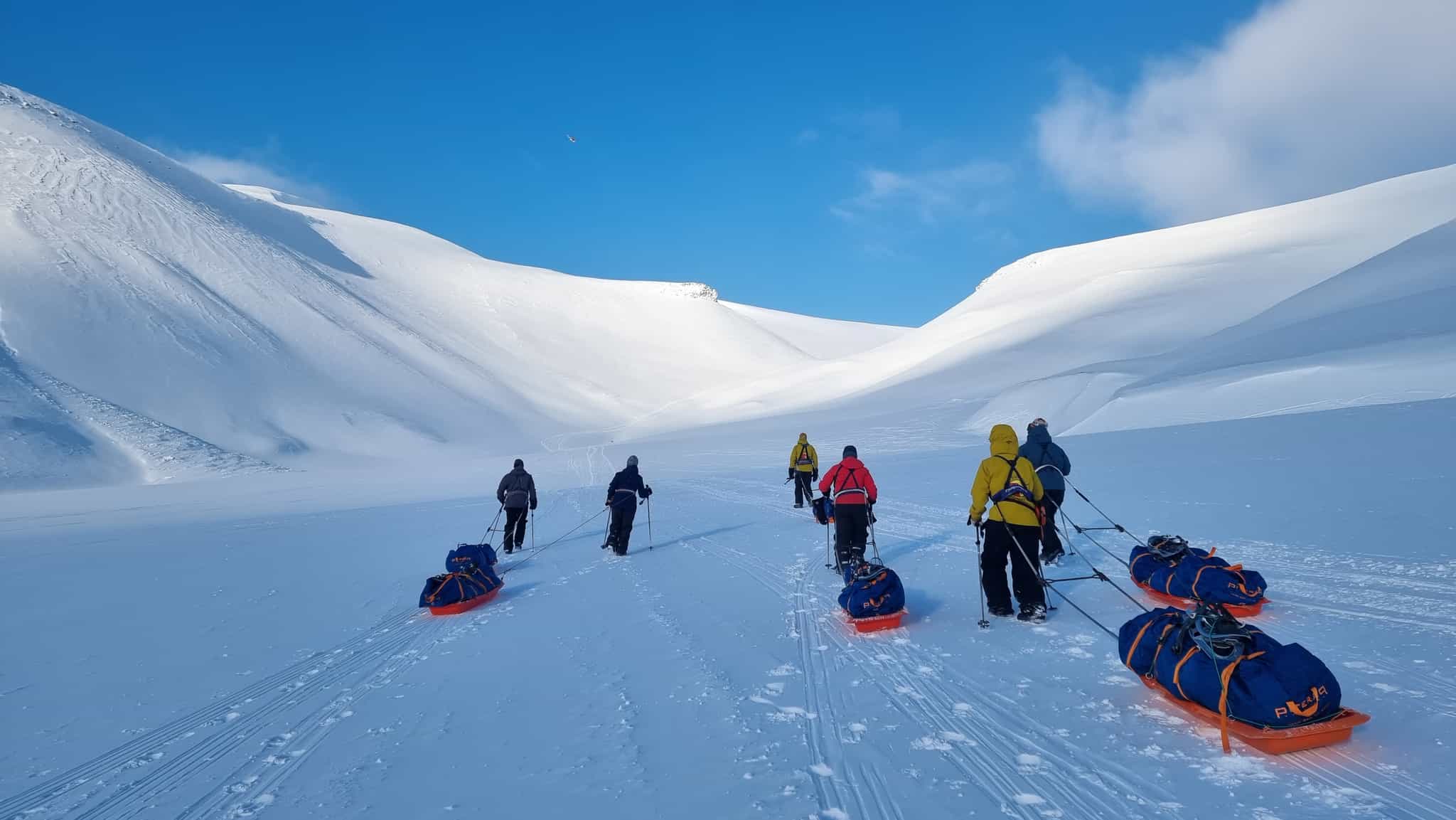
What's Included?
Activities & Certified Guides
All itinerary activities with expert, local, English-speaking guidesGuesthouse & Wild camping
4 nights at a hotel or guesthouse in Longyearbyen and 2 nights camping at an Arctic wilderness campMeals
All breakfasts and lunches, and 2 dinnersEquipment
Everything you need for winter camping, glacier walking, ice cave hiking and snowmobilingPermits
All permits and entry feesSmall Like-minded Groups
Solo-friendly by design, join our small n’ sociable groups of up to 10 like-minded, active and outdoorsy people…
…
What's it like?






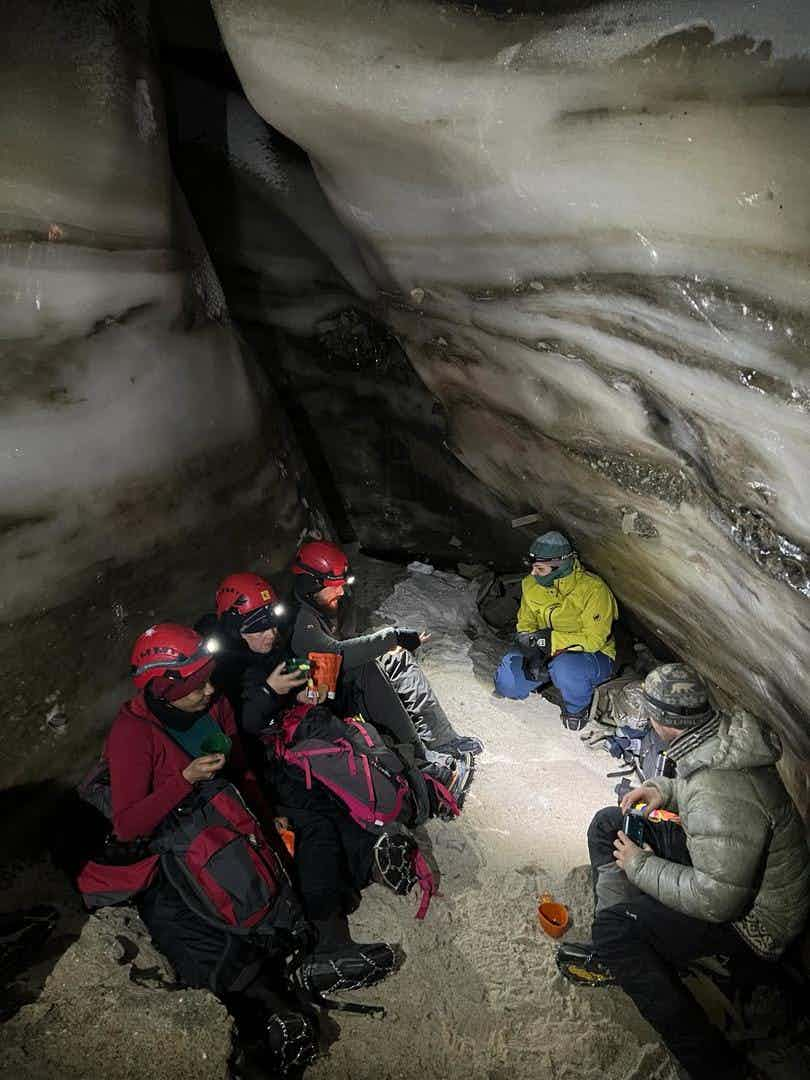
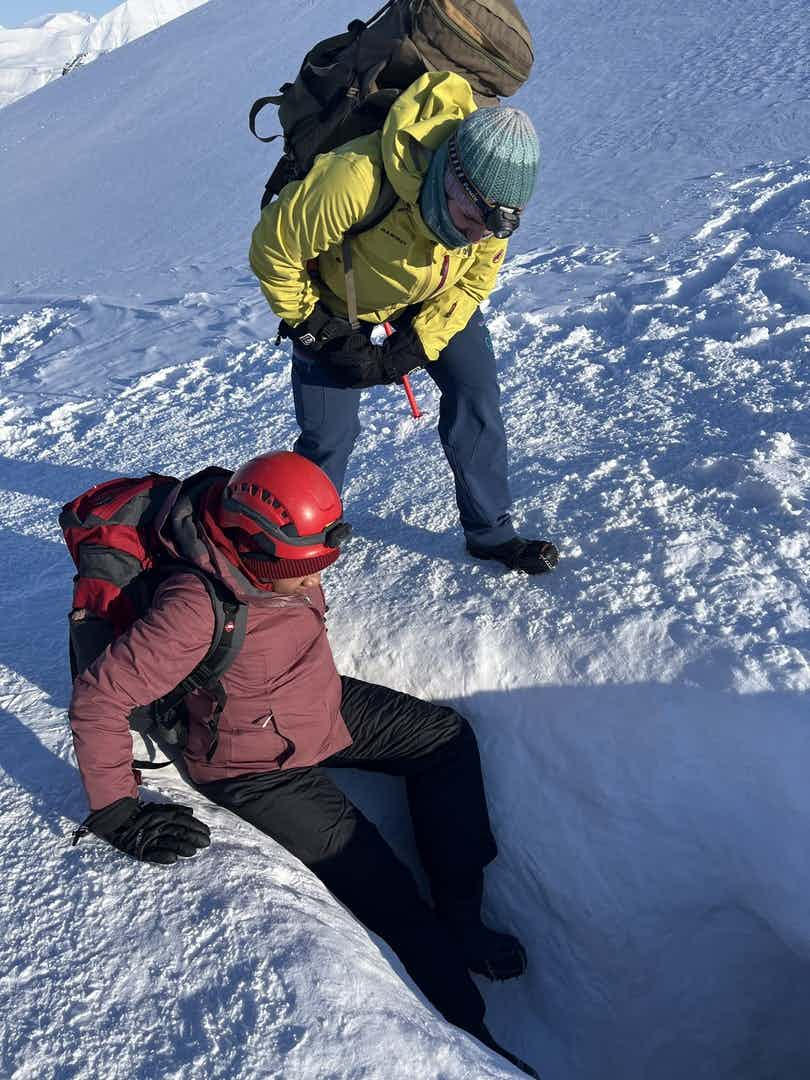
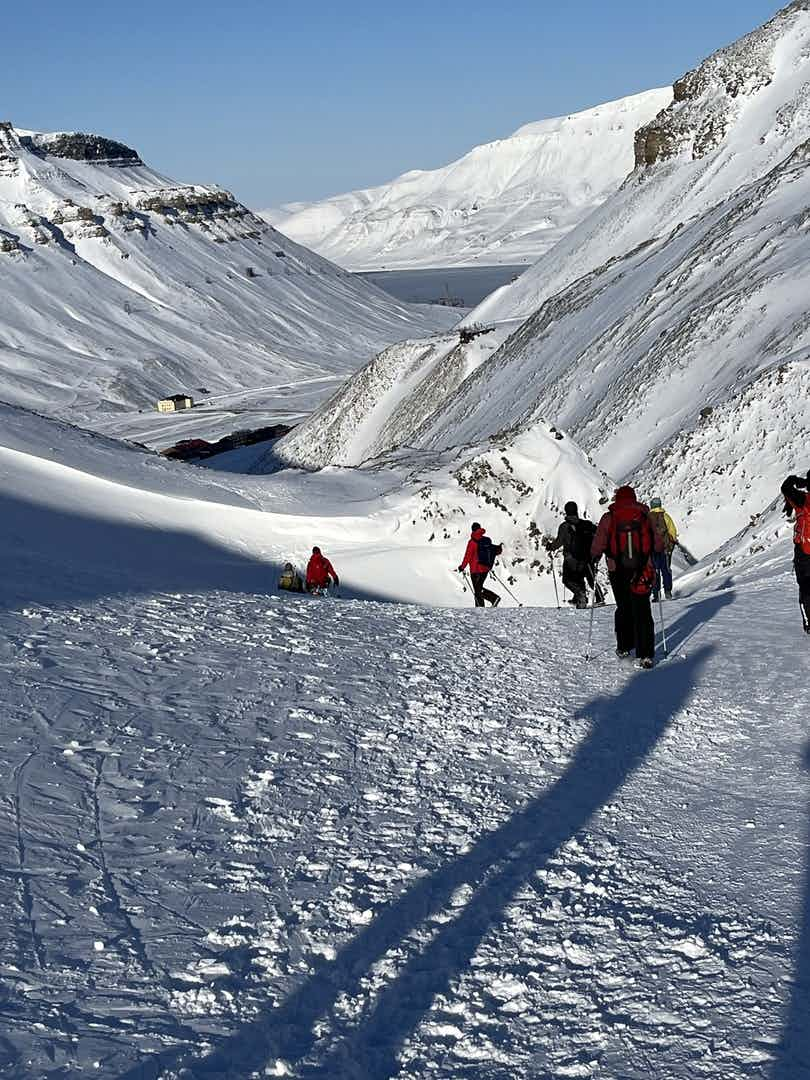
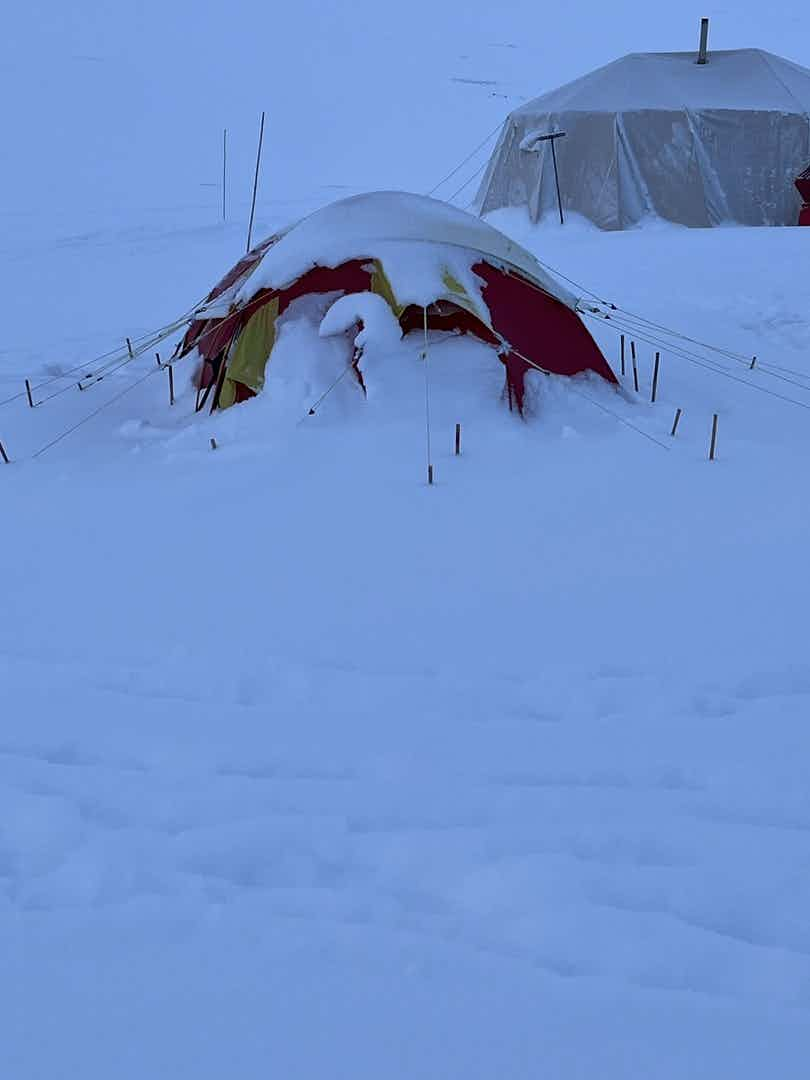
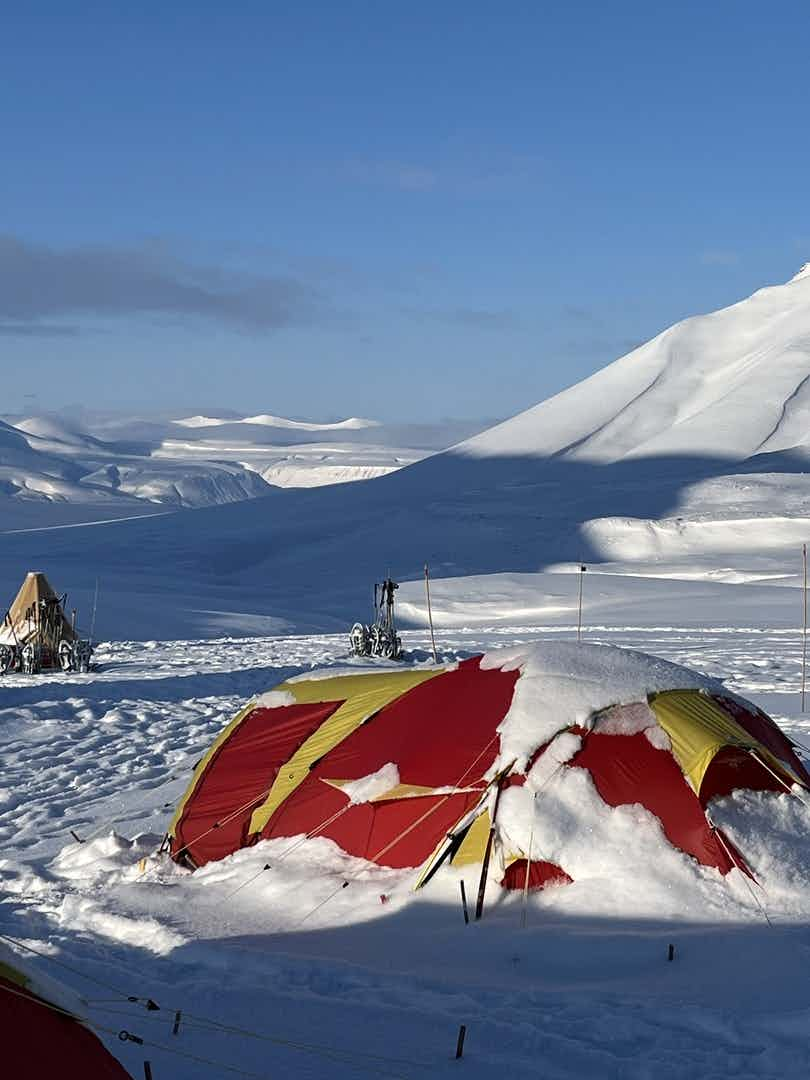
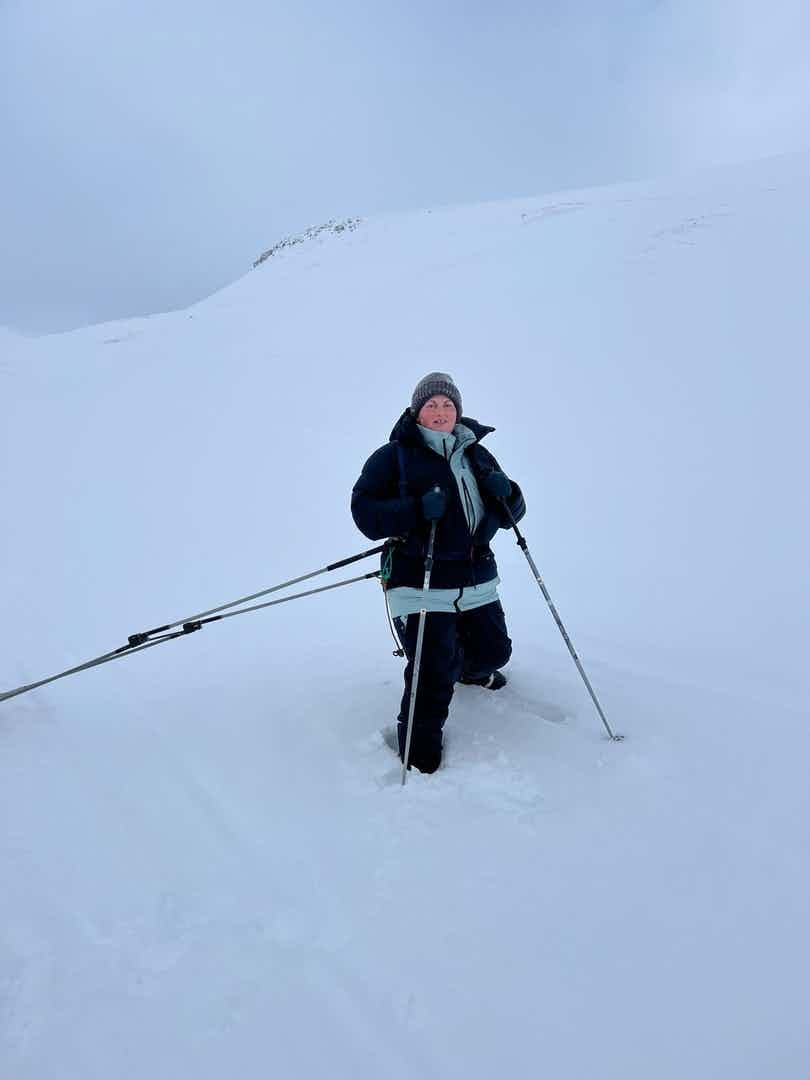
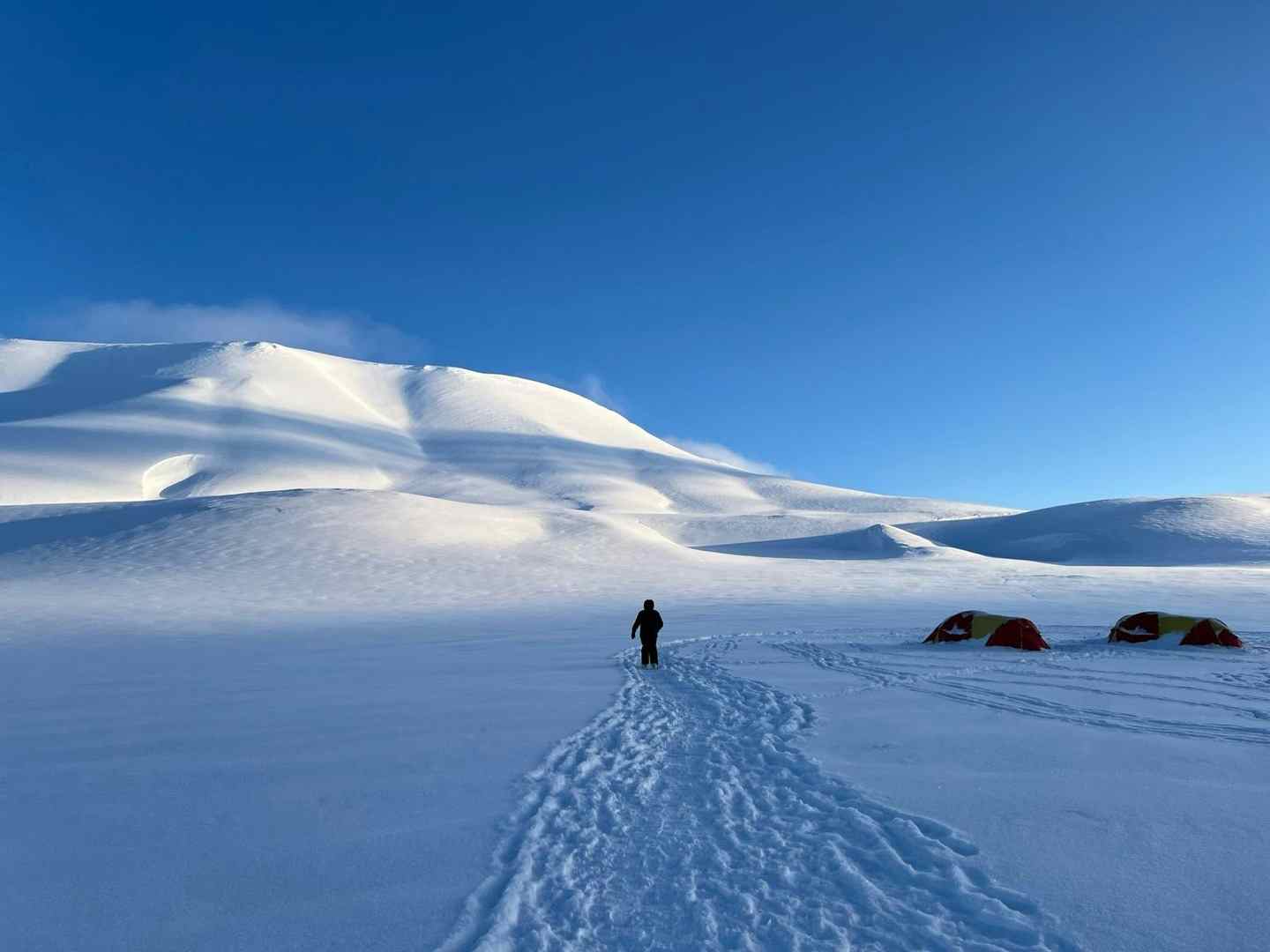
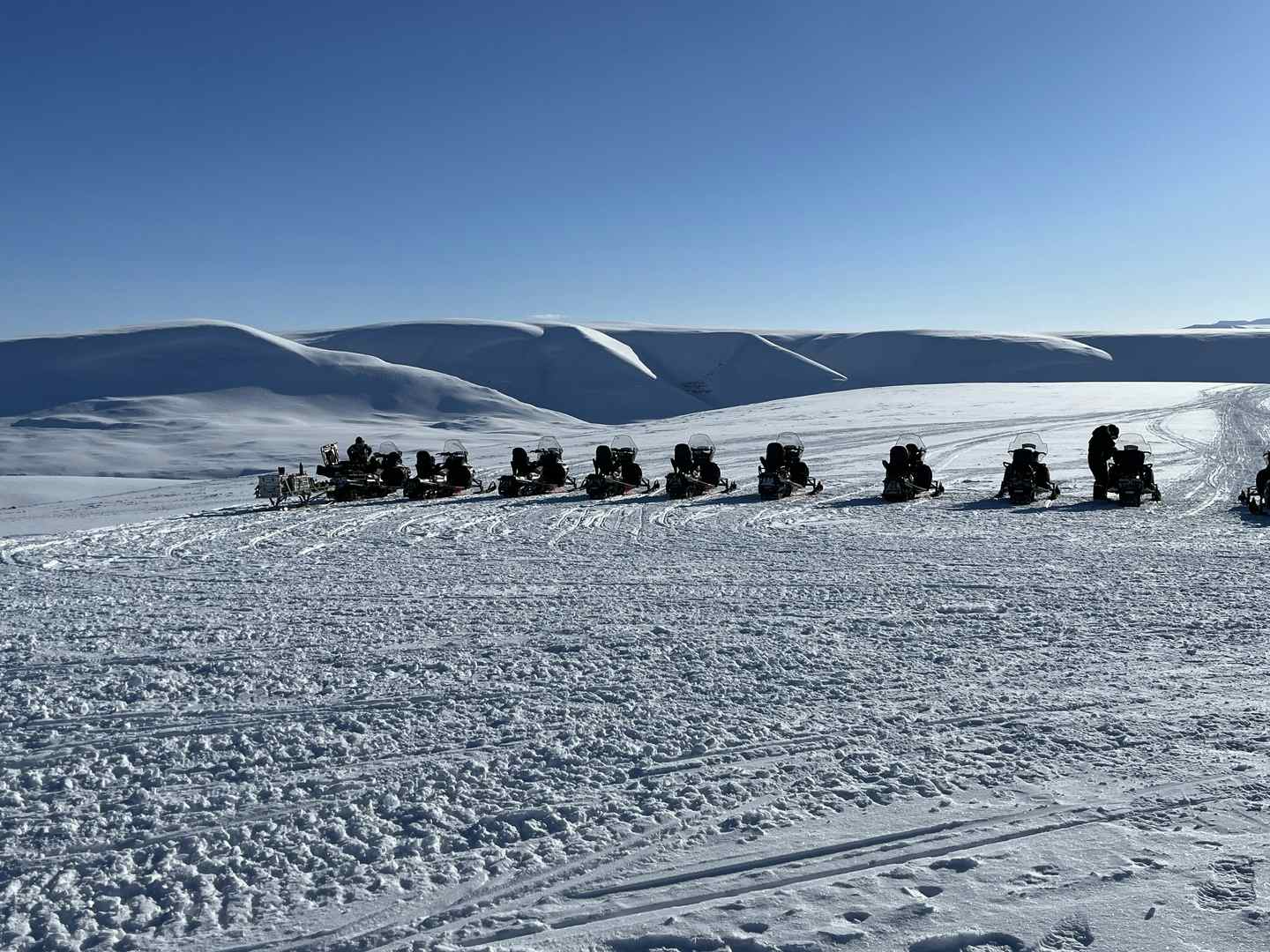
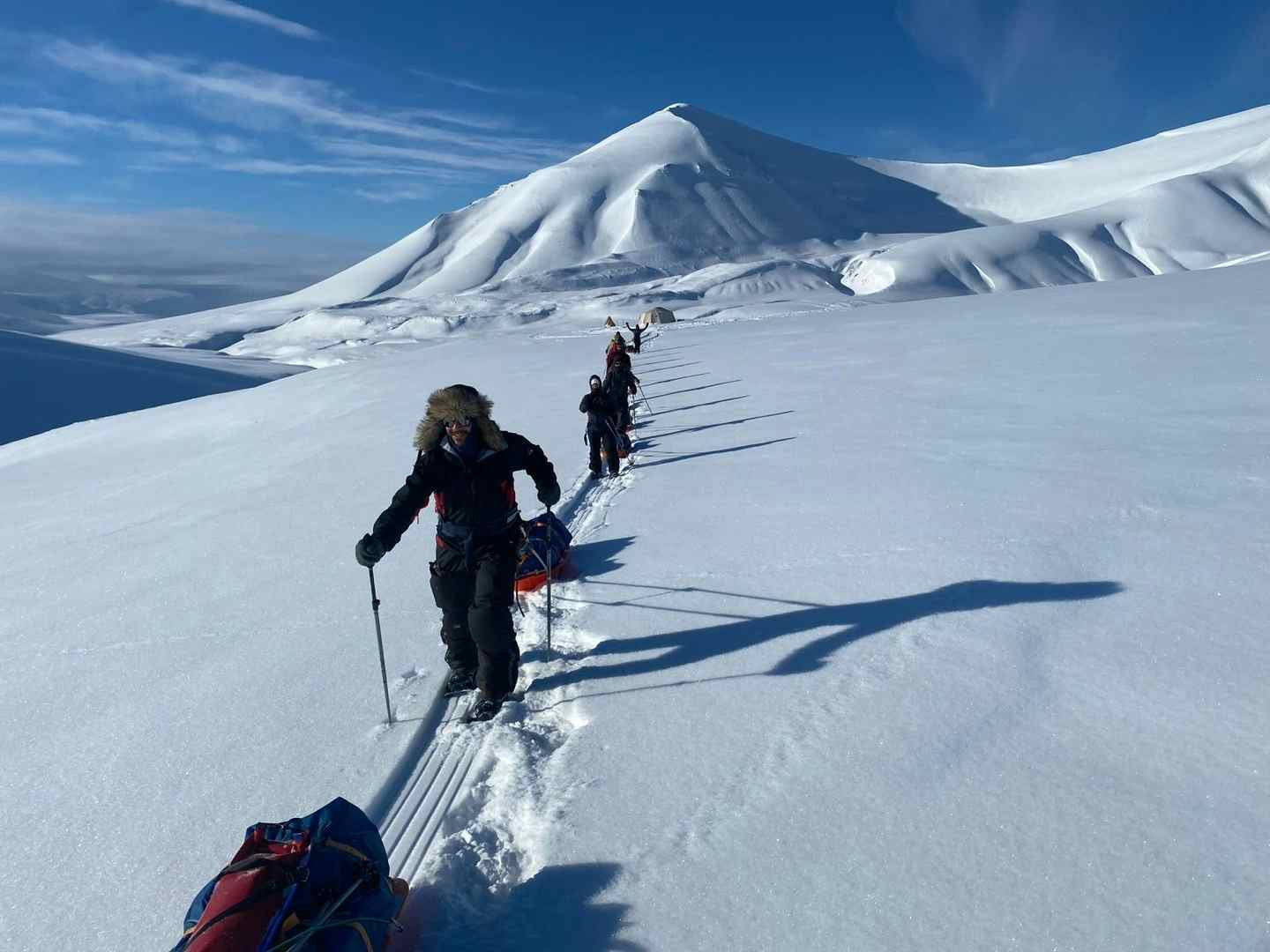
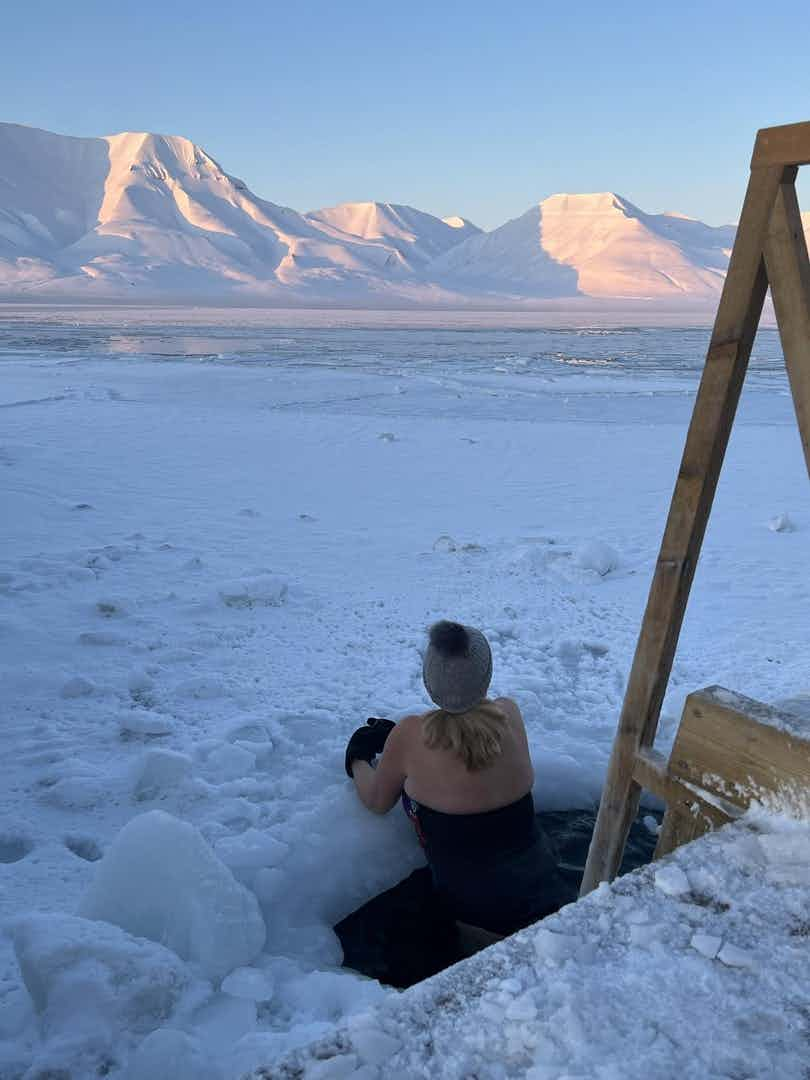
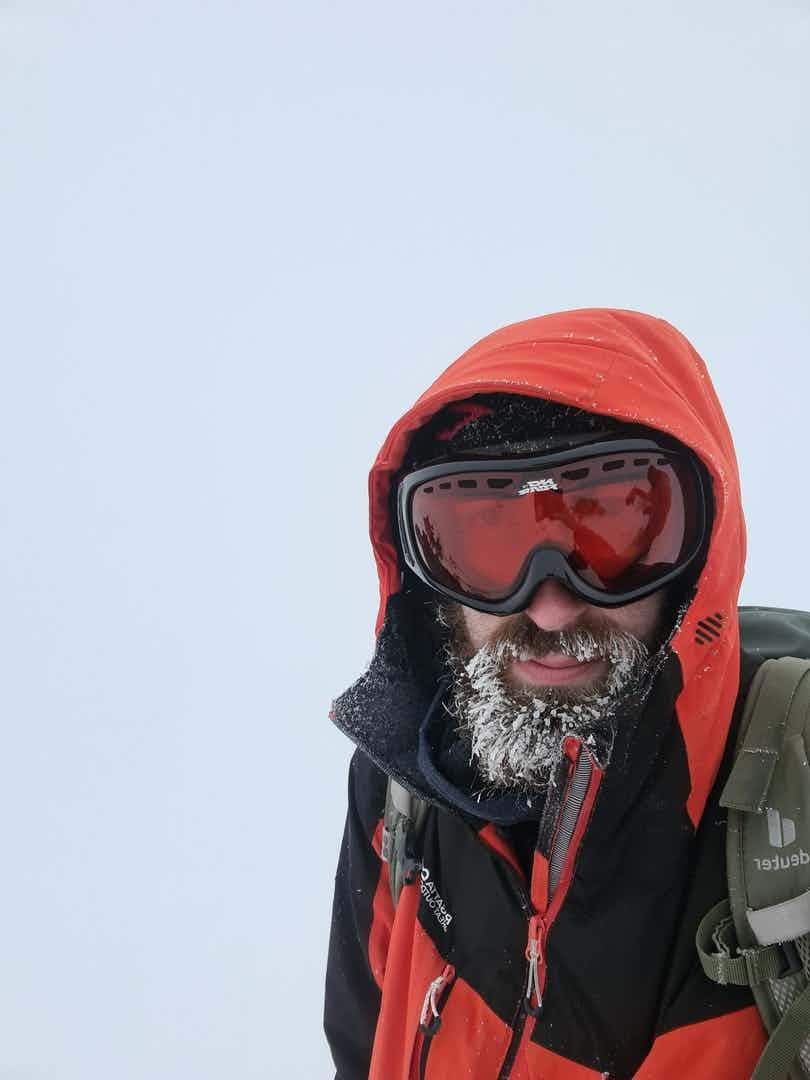
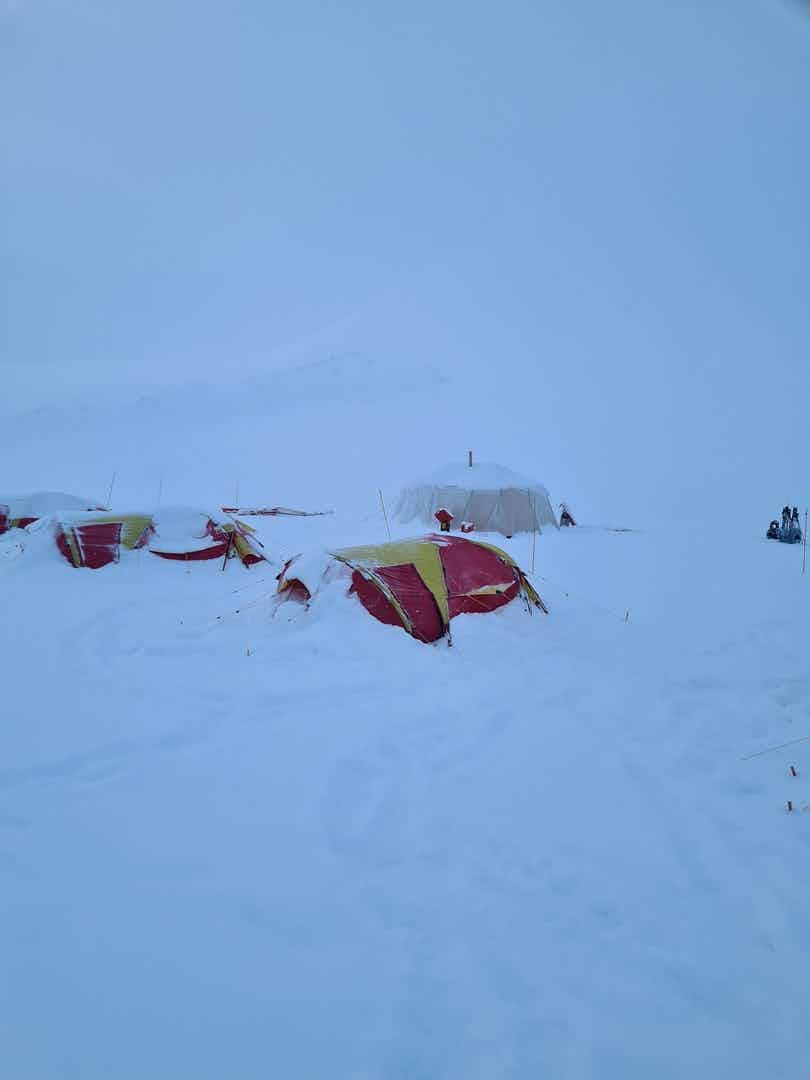
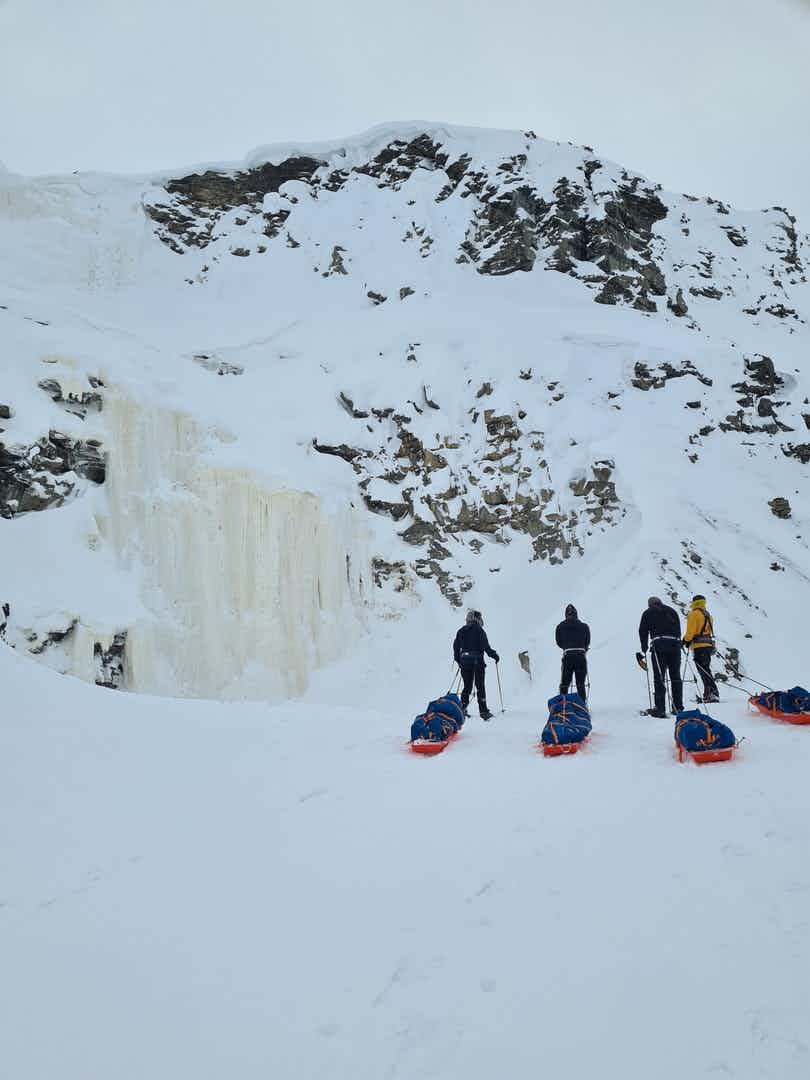
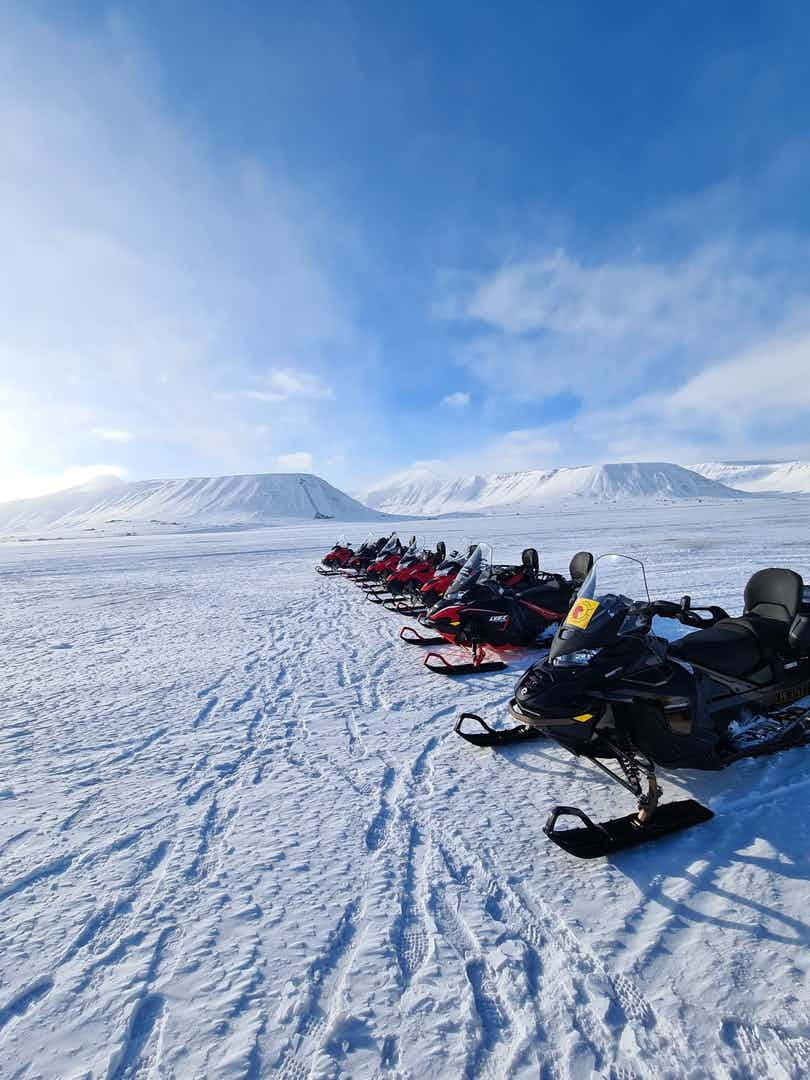
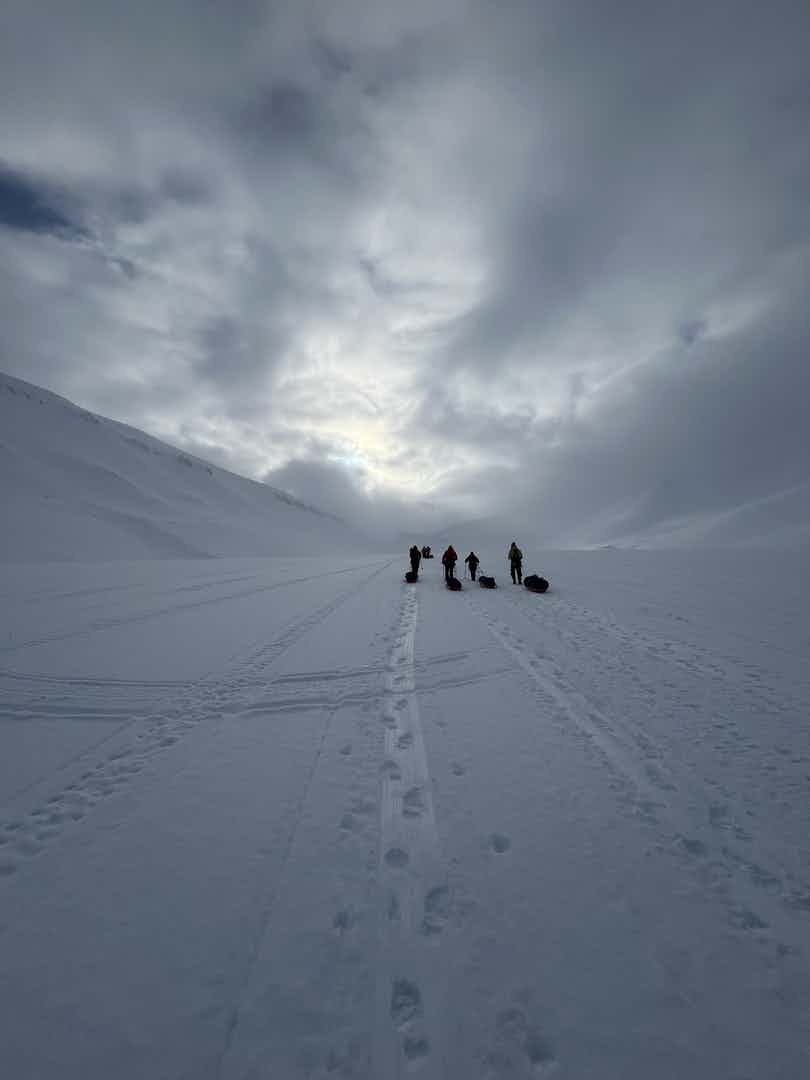
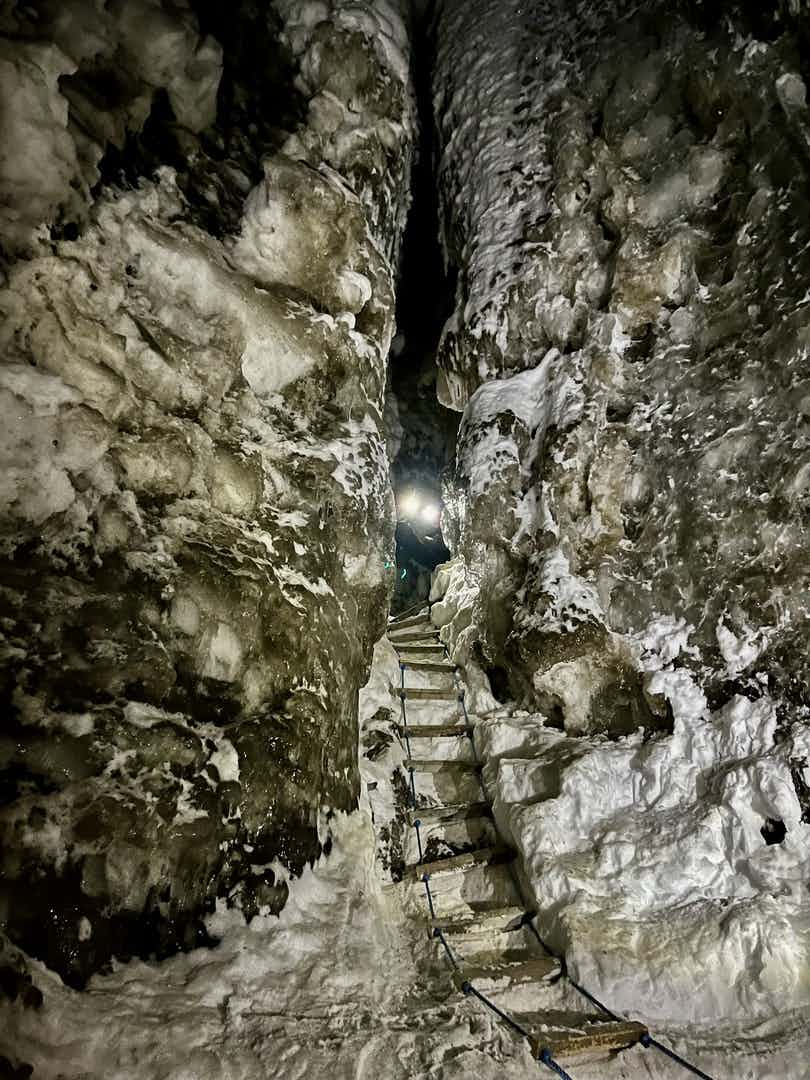
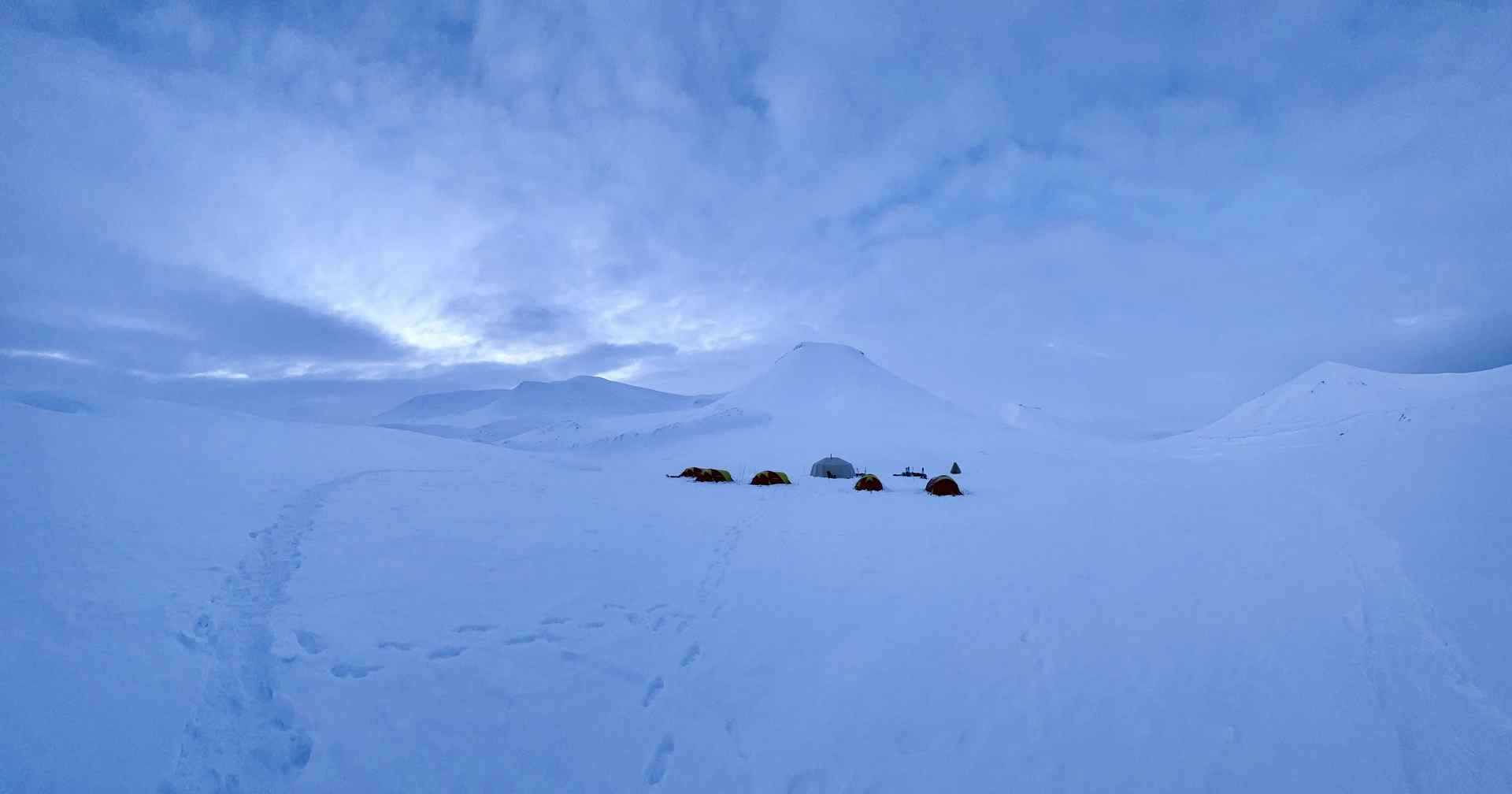
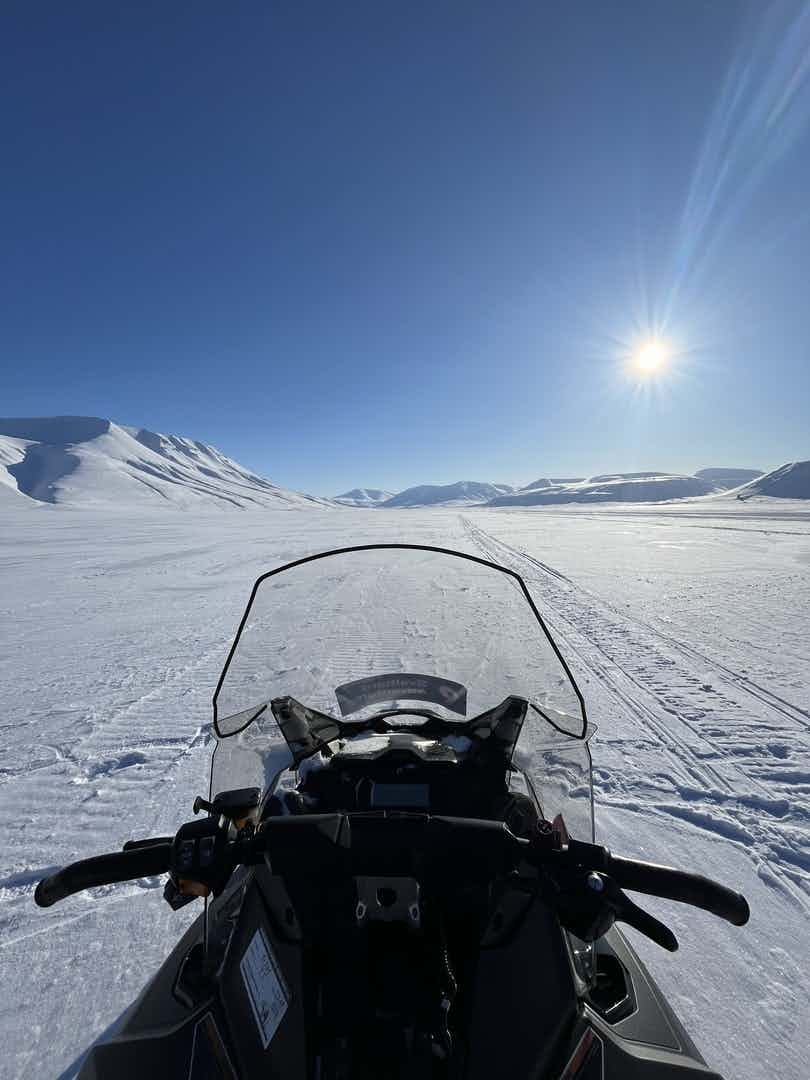
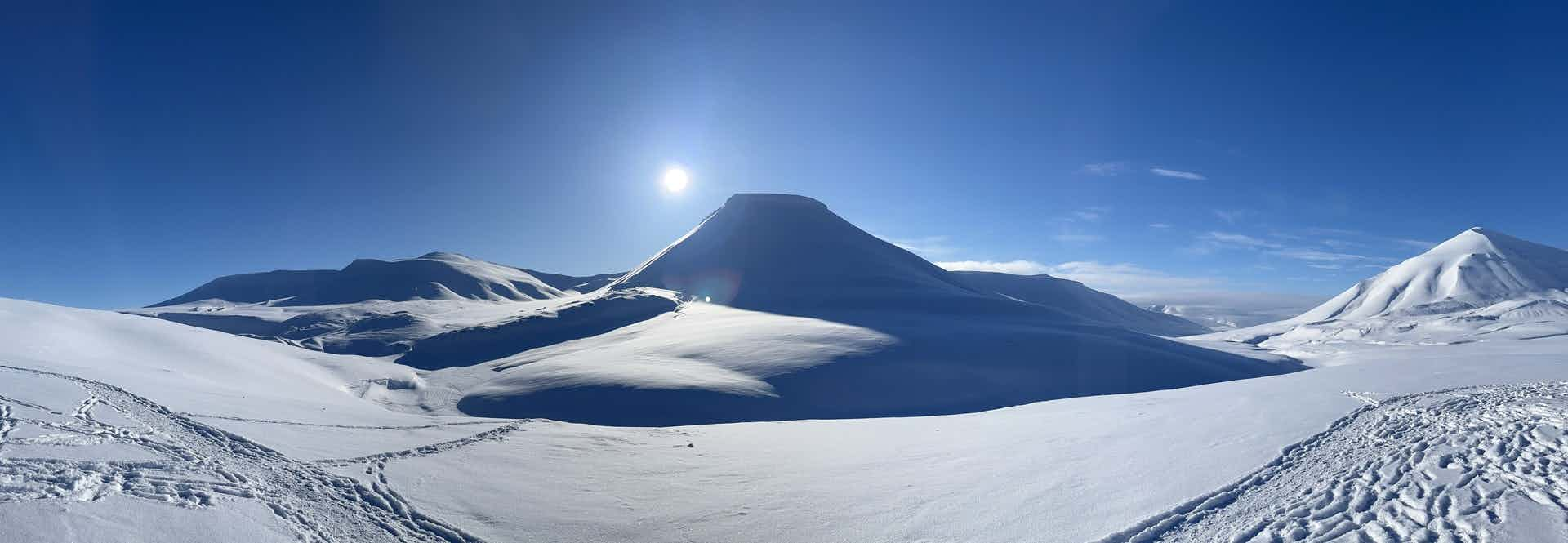
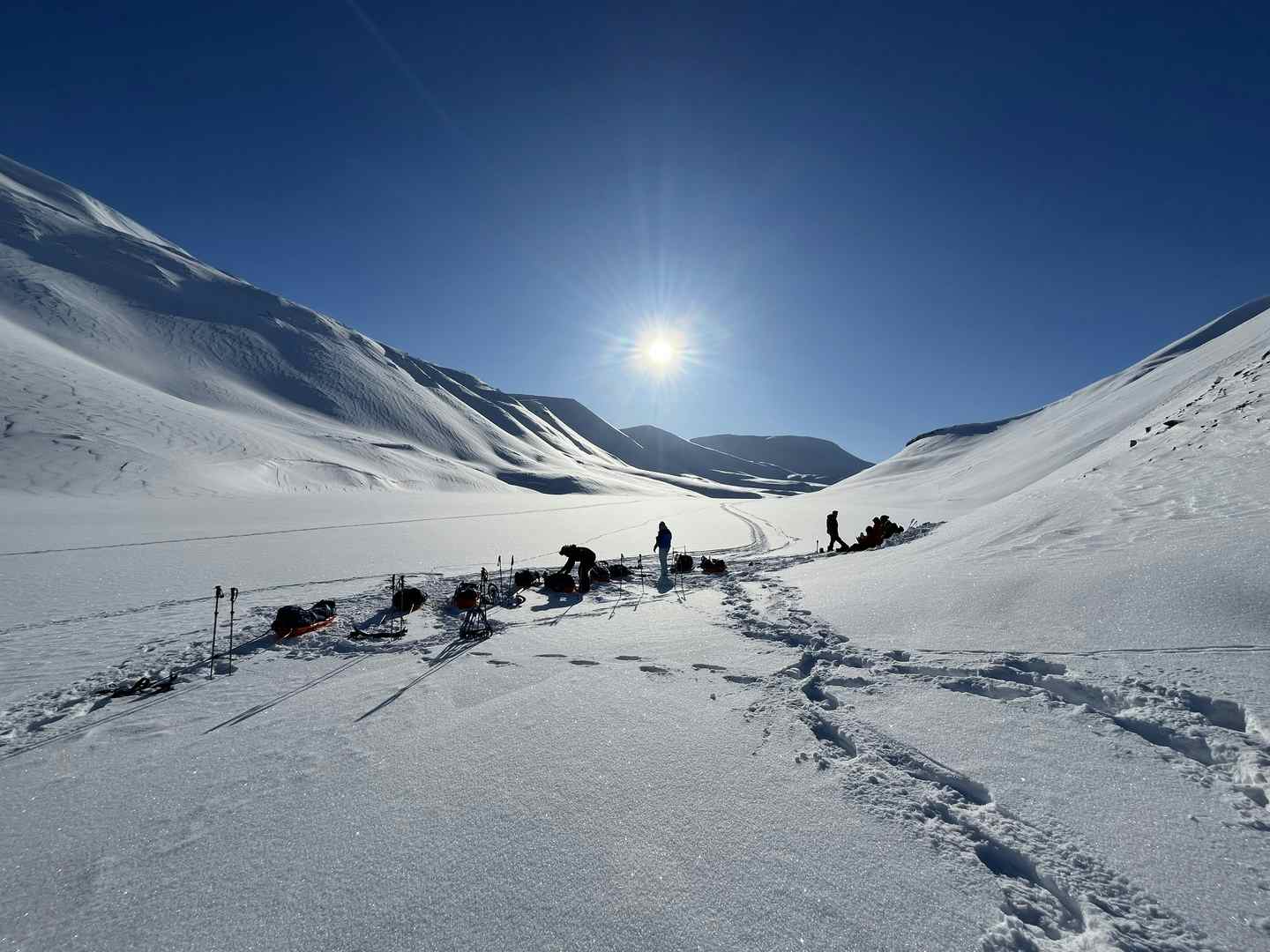
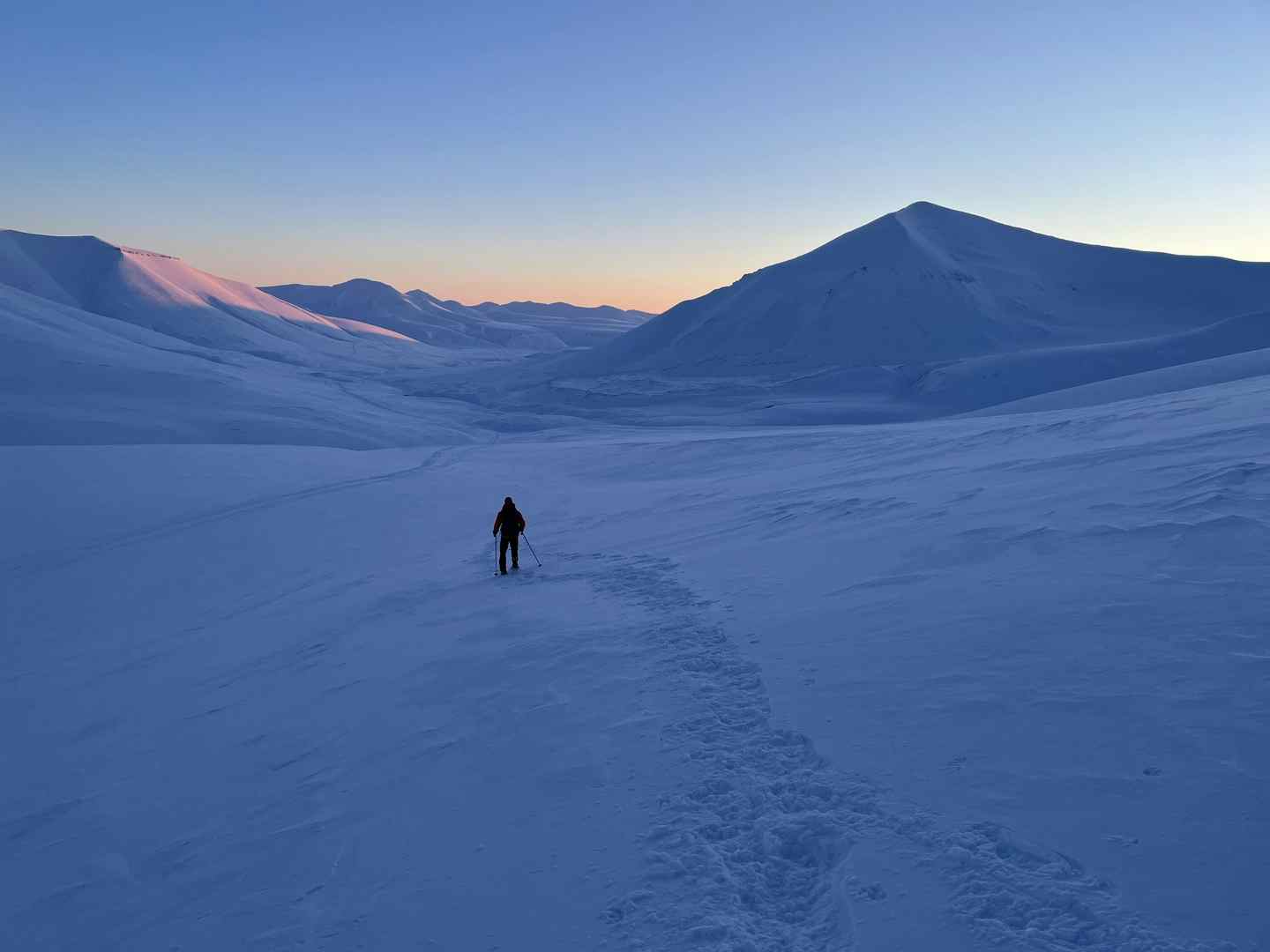
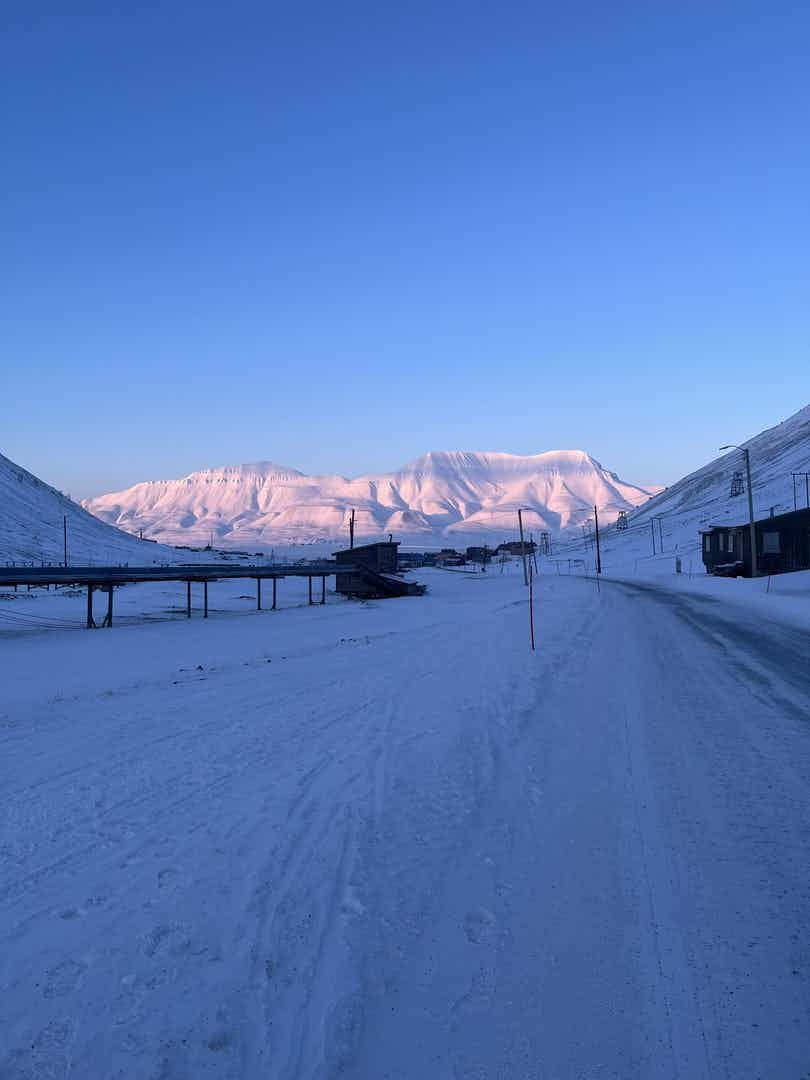
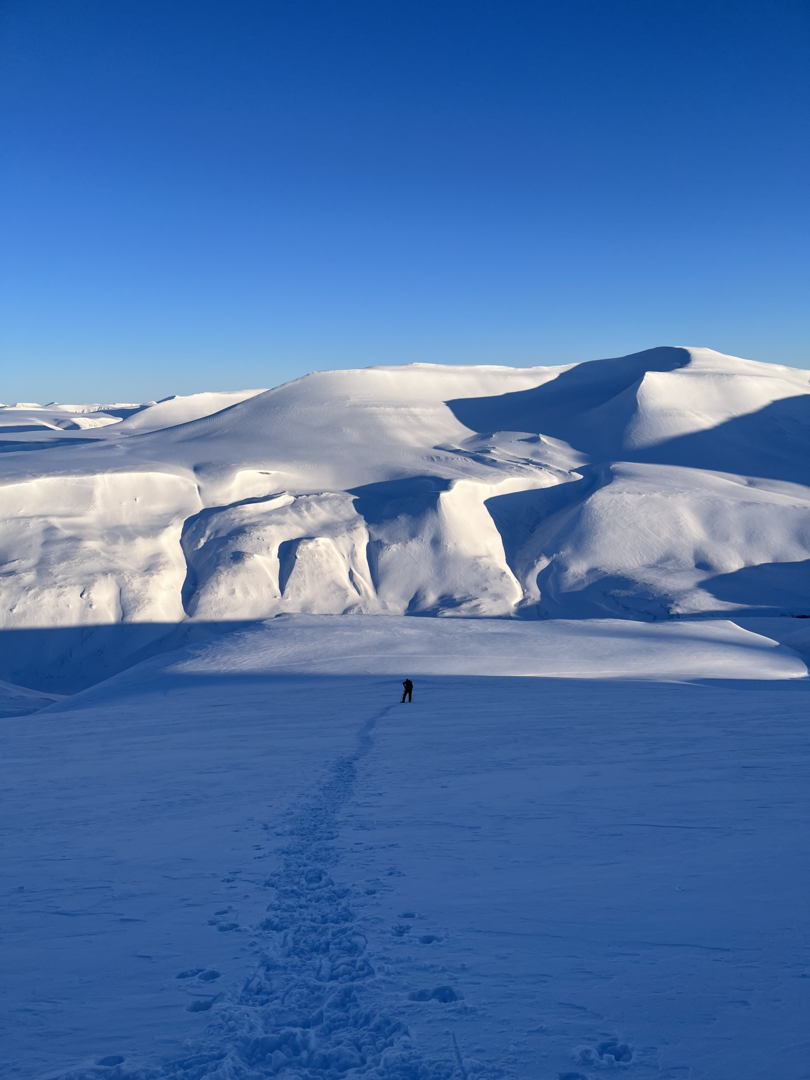
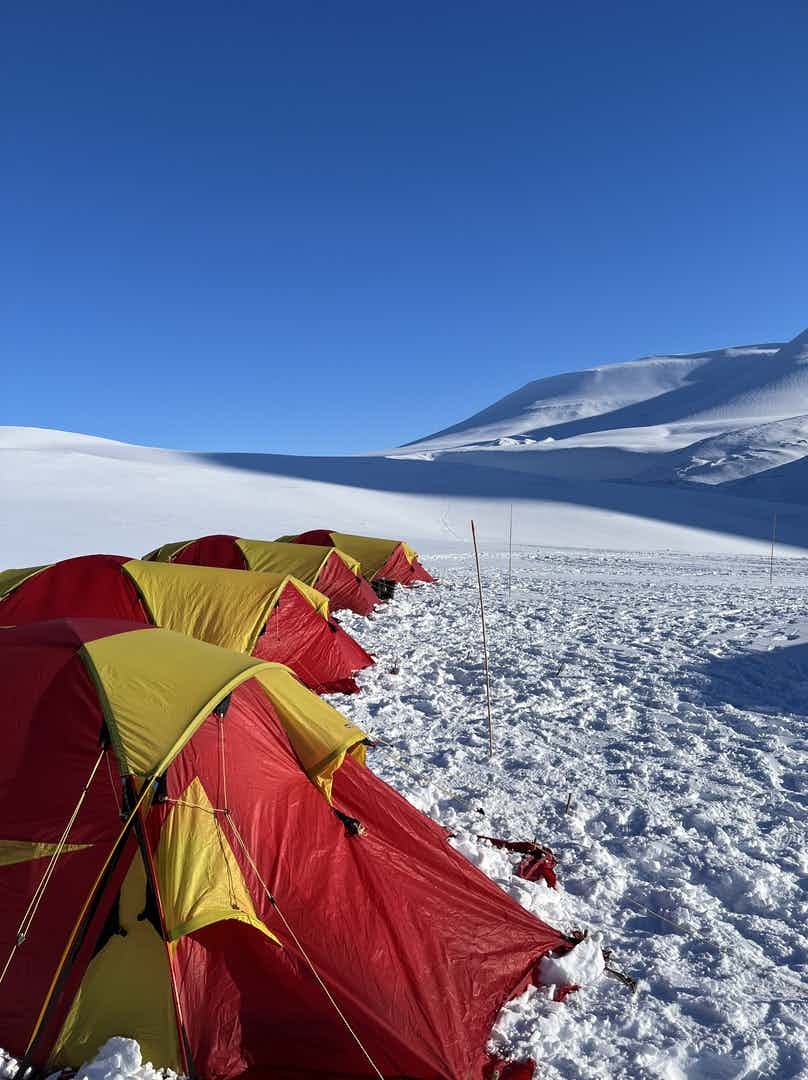
Spend two nights in the wilderness keeping lookout for polar bears on an otherworldly winter camping experience in the Arctic
Zip across Svalbard Island on a snowmobile adventure, glacier-bagging as you pass through the frozen Arctic Ocean
Deep-dive into an extensive network of glittering glacier ice caves where 'dark' takes on a whole new meaning
Key Information
Day 1
Arrive in Longyearbyen
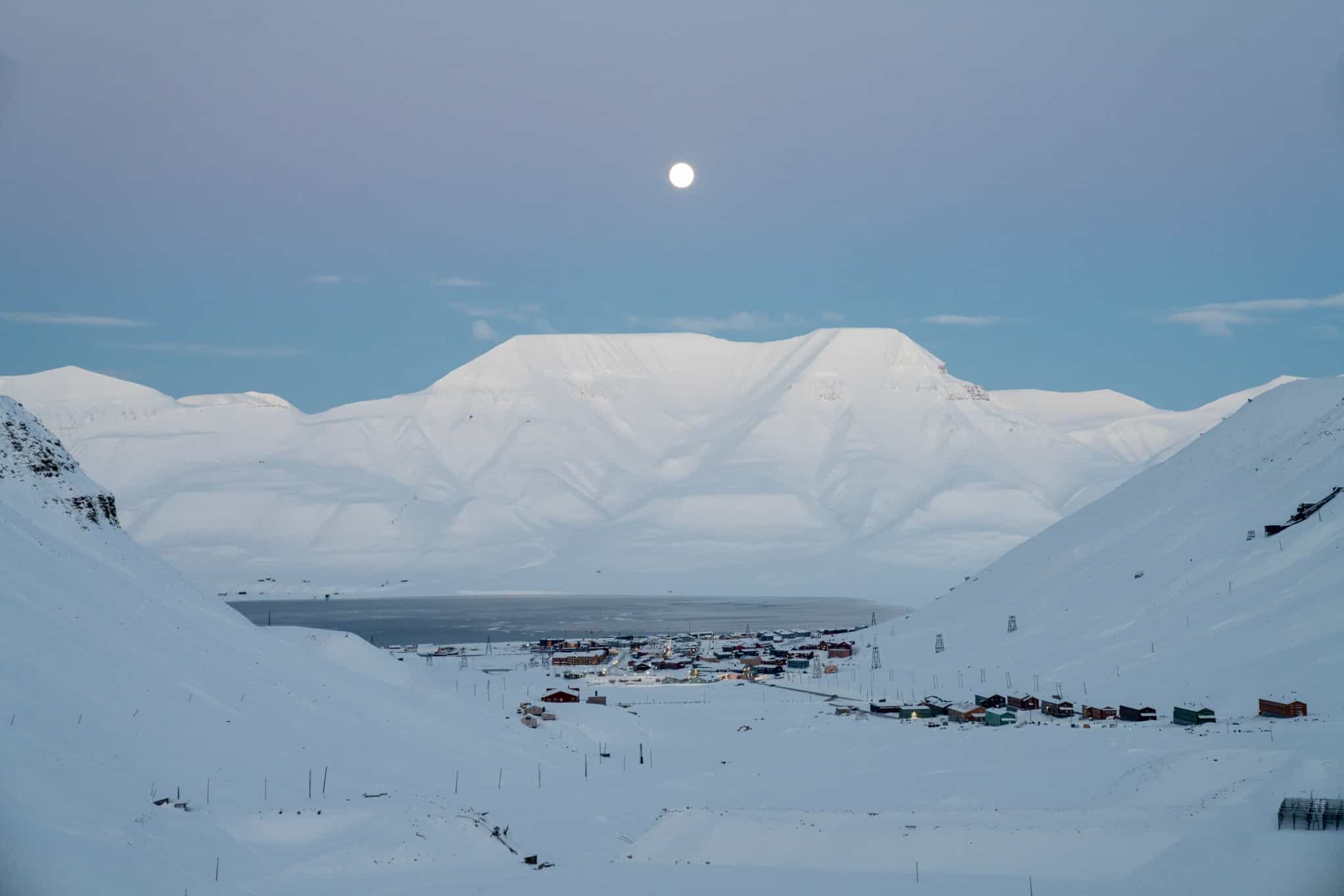
Touch down in Svalbard and get your first glimpse of the Norwegian Arctic's blanket of white. Head into Longyearbyen, the world's northernmost city, check into your cosy guesthouse and spend the rest of the day freely exploring the town. Meet up with the rest of the group in the early evening for a quick hello and briefing from your guide, then grab some dinner together at a local restaurant.
Day 2
Hike to a glacial ice cave
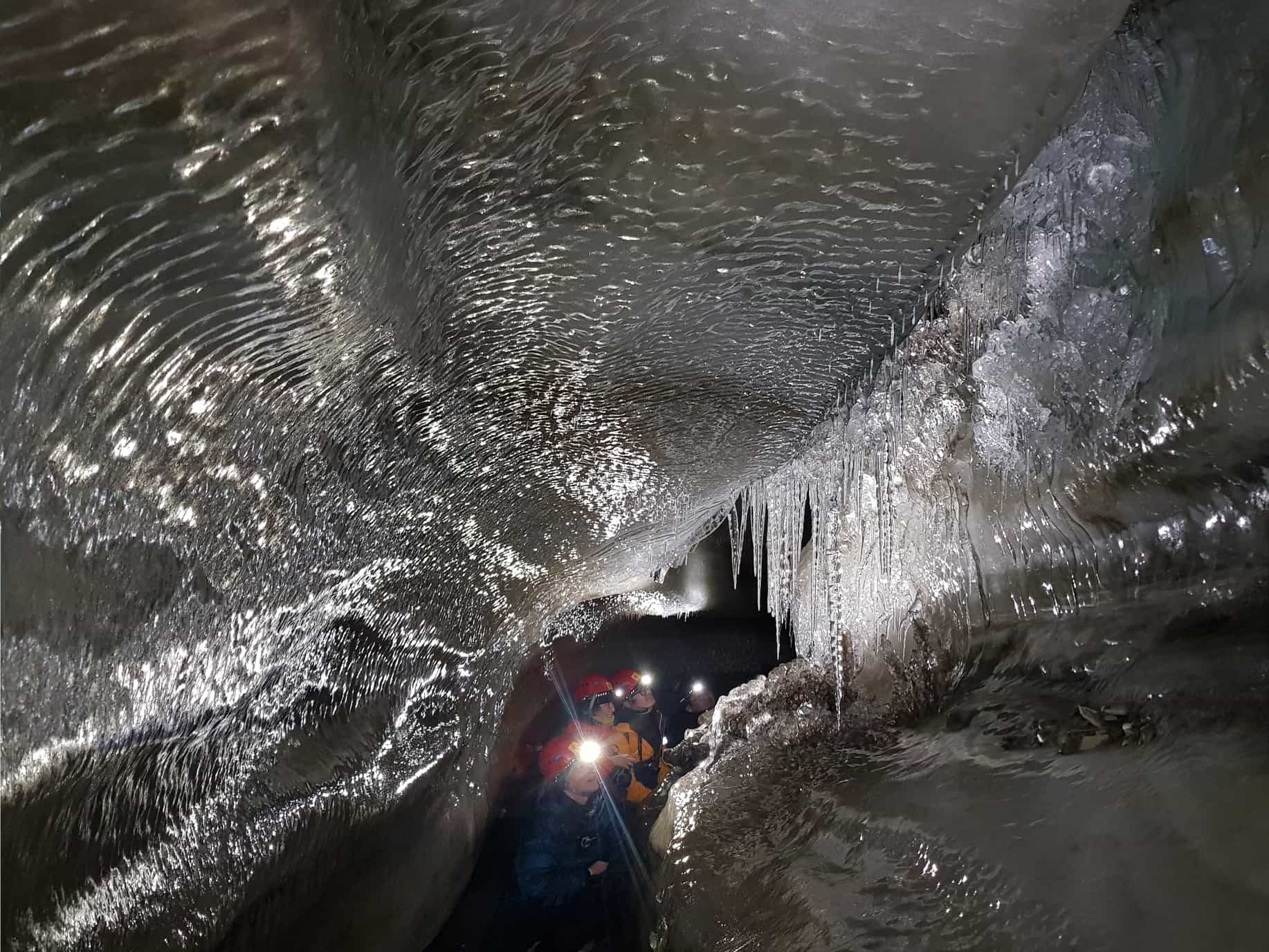
Hiking
Waste no time on your first full day in the Arctic! Start the day with breakfast and then after a briefing from your camp expedition guide, set off on an uphill hike to reach a frozen ice cave. Here you'll add some spikes to your boots, allowing you to move freely on the polished surface and explore the frozen underworld beneath the glacier. Wander a maze of tunnels, from glassy halls to tight passages, marvelling at the thick layers of ice crystals. After a chilly day's outing, return to the comfort of your guesthouse for an evening in Longyearbyen up before heading out into the Arctic tomorrow.
Day 3
Head in to the Arctic wilderness
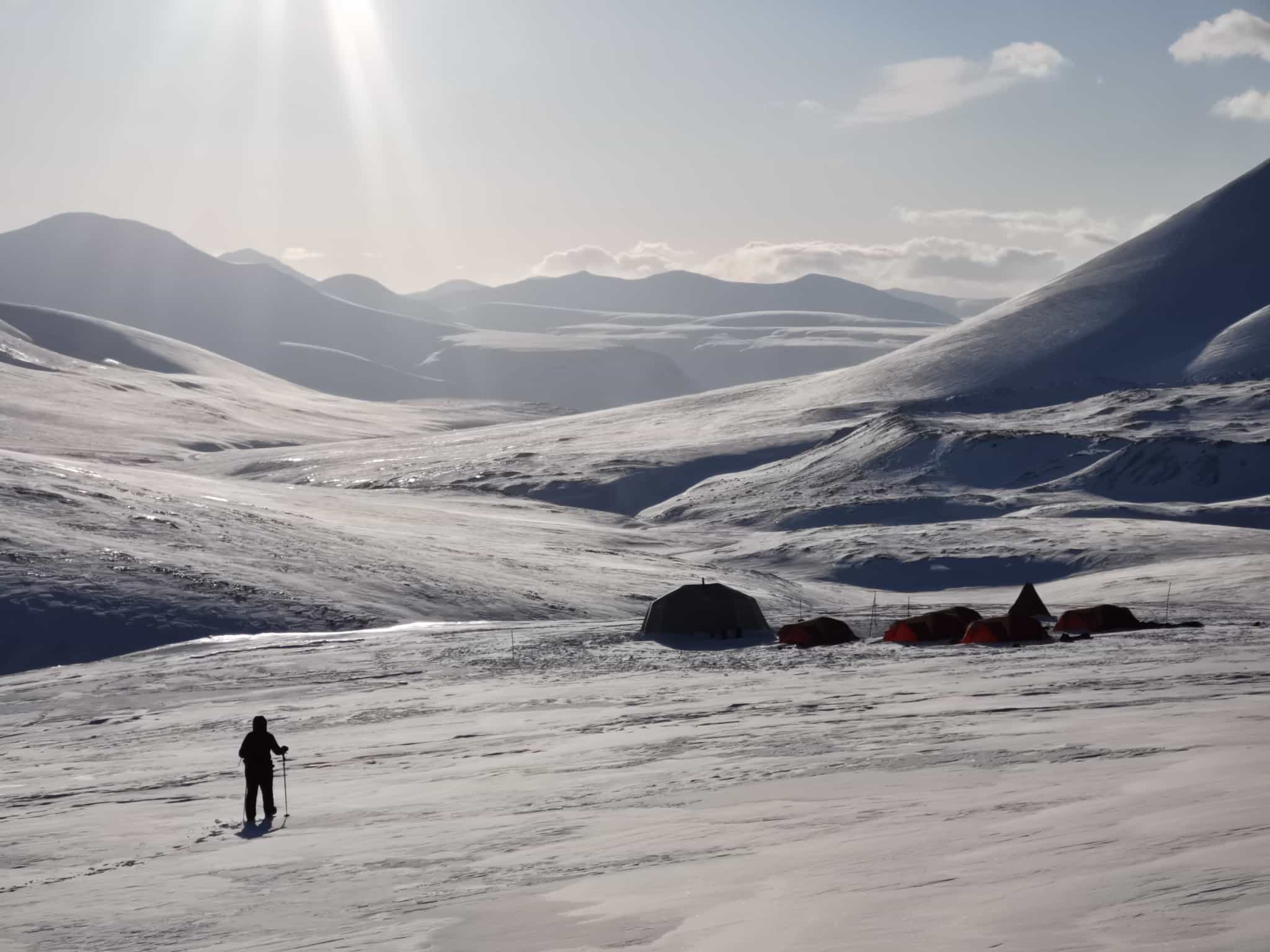
Hiking
After breakfast you'll load up your pulka – a small sled which you'll drag behind you using a harness attachment – with everything you need for your polar expedition. Feeling like a real explorer, you'll head out out of town and into the wilderness, hiking deep into the white landscape far away from civilisation. You'll don spikes or snowshoes for this bit, depending on the conditions. Keep an eye out for polar bears, arctic foxes and reindeer as you go. Eventually, you'll set up camp with your guide who will teach you how to do so successfully in the sub-zero conditions (hiking time will differ depending on conditions and group fitness). Enjoy a surreal and otherworldly dinner at camp. If you are visiting in early March, there's a chance that you'll spot the northern lights.
Polar Bear Lookout: Tonight you'll have the unique experience of being on polar bear lookout. After a full safety briefing, each member of the group will take it in turns to keep watch over the silence and stillness of the Arctic wilderness. Watching for polar bears in the distance as your fellow adventurers sleep is an unforgettable experience.
Day 4
Wake up in the wild to hike mountains and glaciers
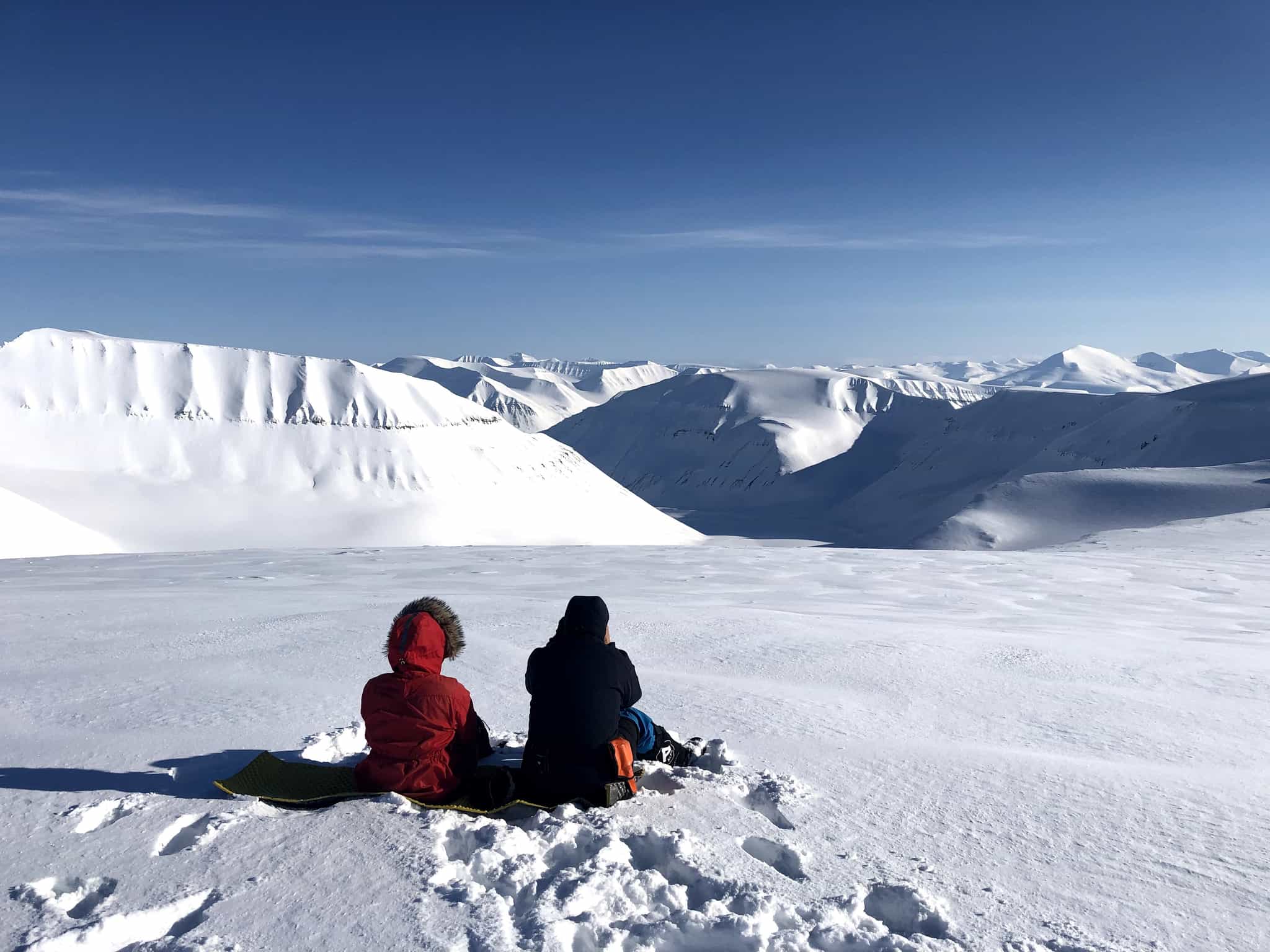
Hiking
Waking up in the middle of the Arctic wilderness will be a morning like no other. Warm up with a steaming hot drink and breakfast at the camp, before setting out once more on foot. There are many route options today: your guide will assess the weather and the avalanche conditions in the area, then choose the best hike for the group. Your hike will immerse you in the immense scenery, perhaps over nearby glaciers or to a mountaintop viewpoint. Again, the length and distance of today's hiking will depend on conditions as well as group fitness.
Day 5
Load up the pulkas and hike back to civilisation
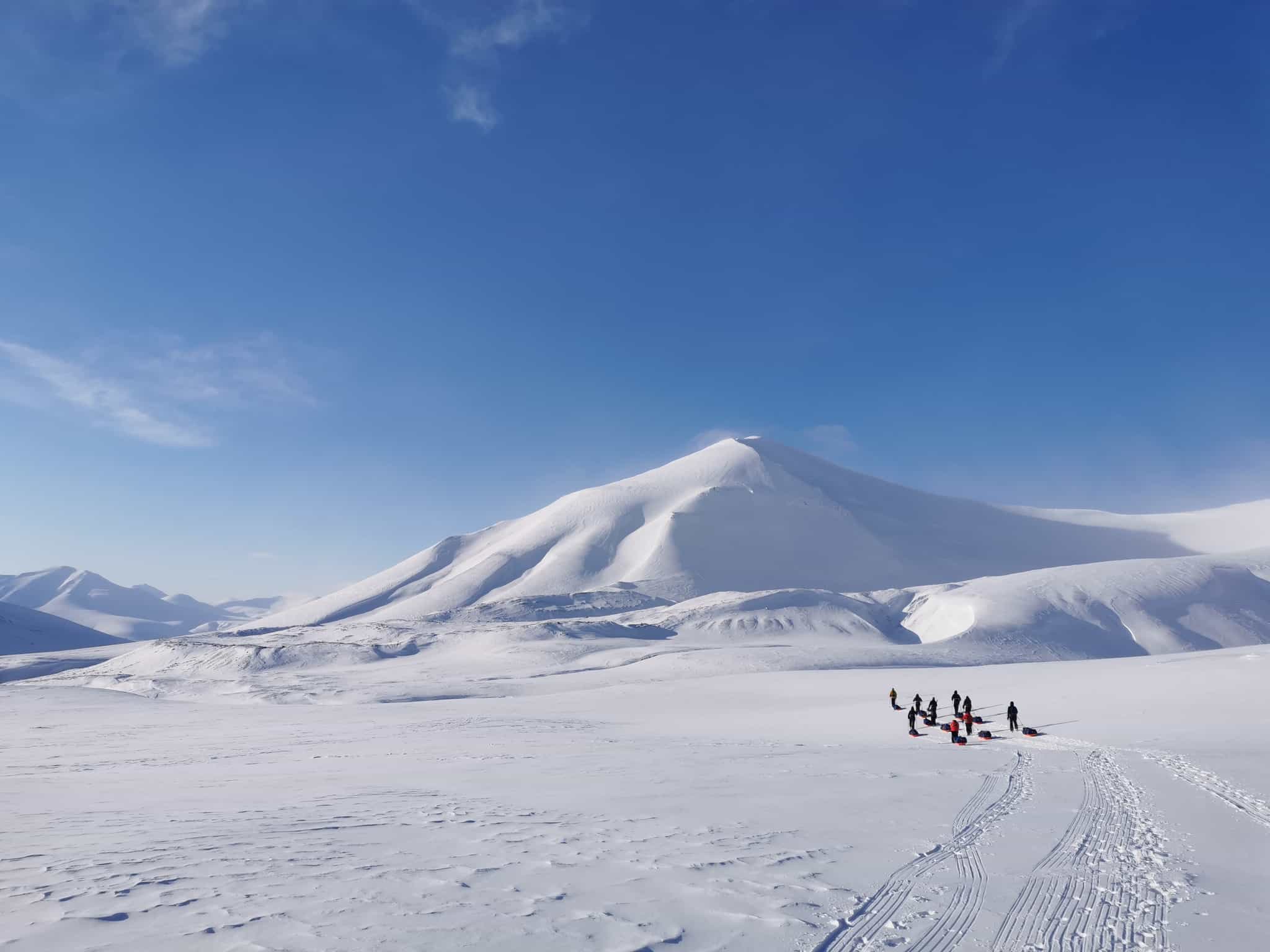
Hiking
After another memorable night wild camping in the Arctic, you'll help take down the camp and load up the pulkas, ready for another big push through the wilderness. Again, conditions will dictate the exact route and your guide will choose the best option. All being well, you'll reach another peak or two for sweeping vistas over Svalbard whilst edging closer to Longyearbyen, arriving back into civilisation by late afternoon. Returning to your guesthouse after what will feel like an age outside, hot showers will be the order of the day, followed by perhaps the most well-earned glass of wine of your life.
Day 6
Explore Svalbard by snowmobile
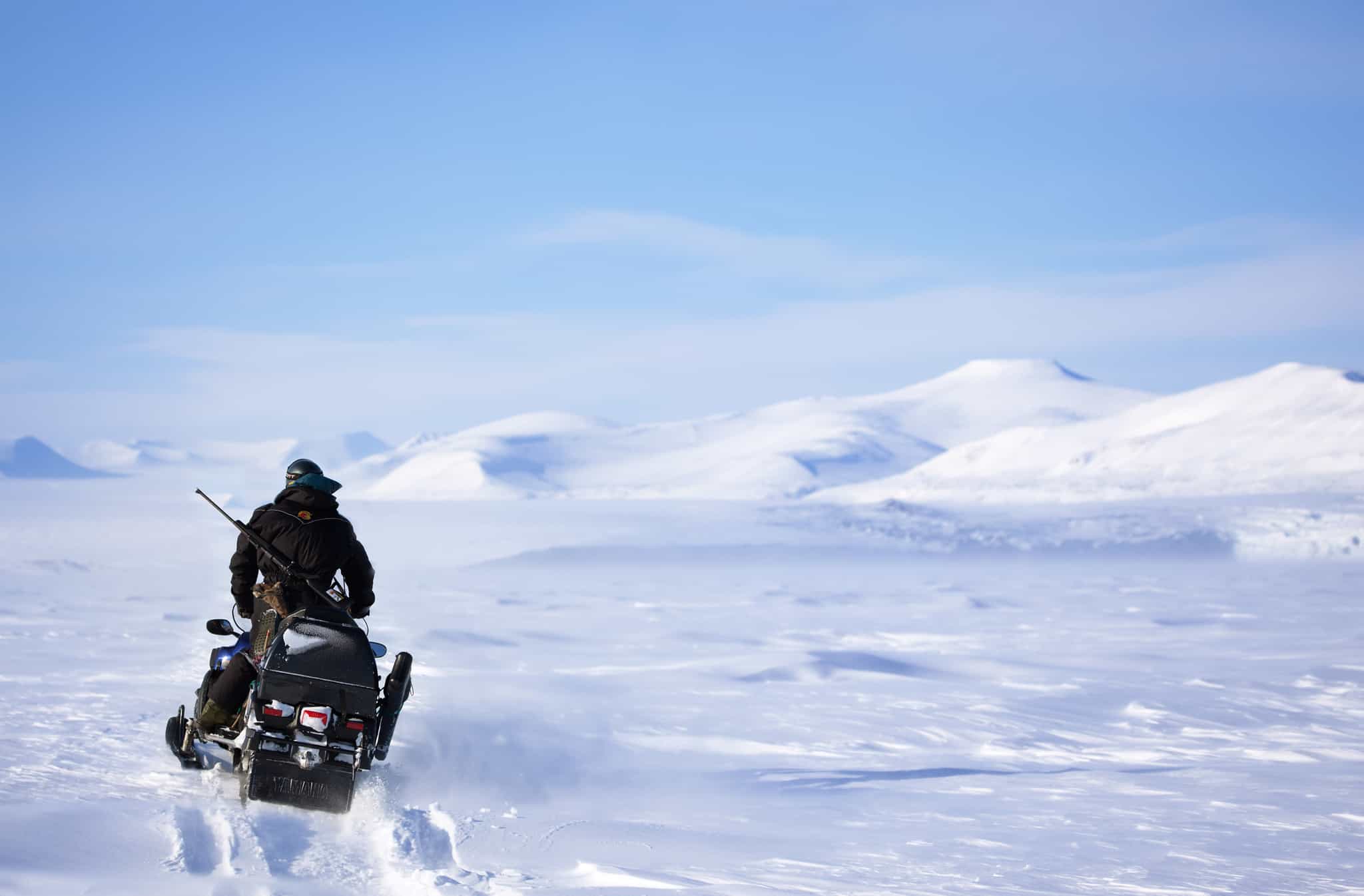
Snowmobiling
Hiking
Have your driving licence at the ready – it's snowmobile time! Jump onboard your personal snowmobile for a unique and exhilarating journey through the Arctic wilderness, covering far greater distances than on your previous snowshoe journeys. Whistling through the snow-covered landscape you'll visit several sights, including a former trapper's station where a family lived for 26 winters in the wilderness. The furthest point you'll reach is Tempelfjord, a picturesque fjord overlooked by the Temple Mountains. In the evening, celebrate your final night in the Arctic with dinner – or perhaps head to the floating sauna just outside of town for a 'polar plunge' (optional; fees apply). If you are keen on the sauna please chat to your guide at the beginning of the trip, as places get booked up quickly and it can only be reserved as a group.
Day 7
So long, Svalbard
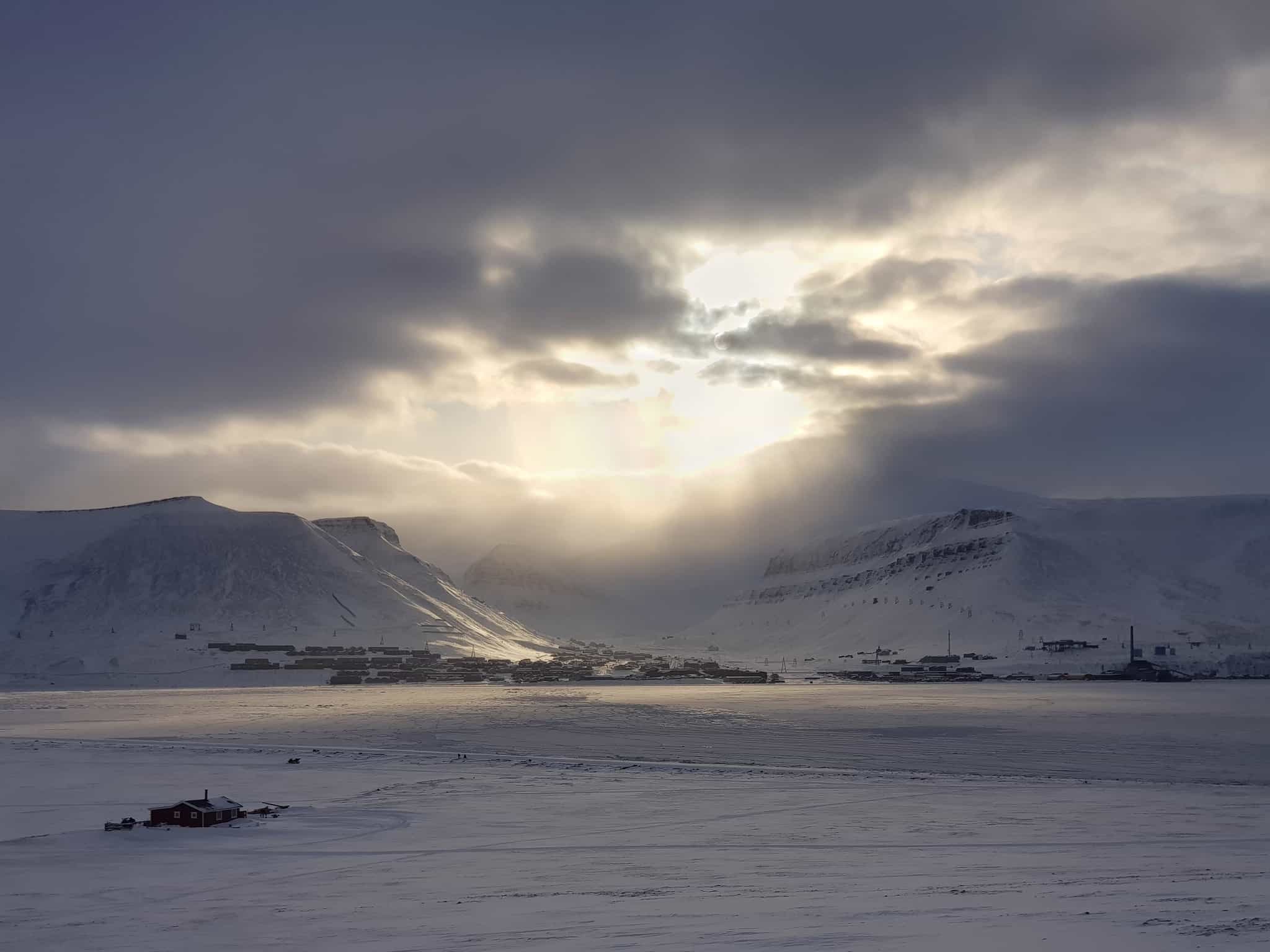
Say farewell to Longyearbyen and the Arctic, returning to Svalbard Airport in time for your flight home.
The Area
Logistics
Starts
Guest house in Longyearbyen
Catch any flight on Day 1
Ends
Guest house in Longyearbyen
Catch any flight on Day 7
Transfers
The airport shuttle costs around £8 / $10 and links up with all flight arrivals and departures. It will take you directly to your guesthouse on Day 1 and get you back to the airport any time on Day 7 for your flight home. You can pay by credit card. Cash is not accepted in Svalbard.
It takes a maximum of 10 minutes to get from the airport to your accommodation. You can see full details on the Svalbard tourist website.
Travel options
Both Norwegian and SAS offer flights to Svalbard throughout the summer. We recommend flying to Oslo in Norway and getting a connecting flight from Oslo to Longyearbyen, which takes around 3 hours. If flights don't match up well with your trip start date we recommend adding an extra day before or after the tour and booking an extra night's accommodation. If you extend your stay there is plenty to enjoy in Longyearbyen before your trip starts. Alternatively, you can choose to break the journey with a night in Oslo.
Day 1
Breakfast
Lunch
Dinner
Day 2
Breakfast
Lunch
Dinner
Day 3 – Day 4
Breakfast
Lunch
Dinner
Day 5 – Day 6
Breakfast
Lunch
Dinner
Day 7
Breakfast
Lunch
Dinner
What is the food like?
Longyearbyen has plenty of international food options, including the world's northernmost sushi bar!
At the wilderness camp, breakfasts will consist ofcereals or oatmeal, tea, coffee and 'Polar Bread' as well as possibly bread, ham, cheese, eggs and bacon. Lunches will typically be dry-pack expedition-style meals, heated using water boiled while you're out in the wilderness and accompanied by hot drinks and biscuits. You can make extra sandwiches each morning to bring with you if you want a particularly large lunch. Dinners are homemade and vary depending on what's in stock. Tacos, pasta or a variety of stews are possibilities - including Norwegian reindeer stew.
Vegans, vegetarians and most food allergies can be catered for. Please let your host know of any dietary requirements in advance.
What is the accommodation like?
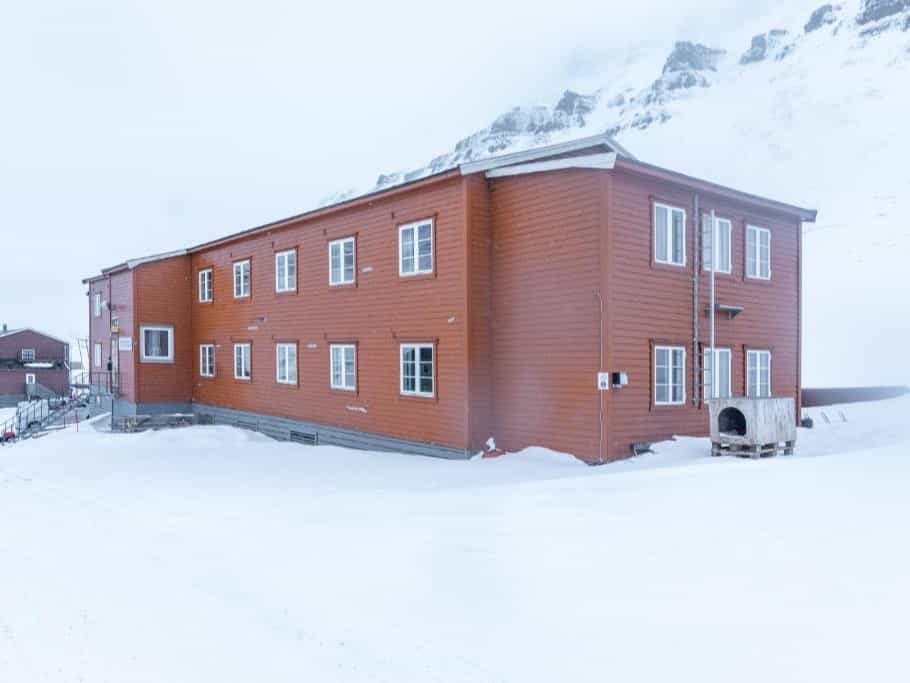
Longyearbyen
In Longyearbyen you will stay at Gjestehuset 102 – a warm, friendly and spotless guesthouse. Gjestehuset 102 was previously the Millionaires’ Mansion, reserved for the best and most experienced miners. The guesthouse is a 15-minute walk out of town although there is an excellent restaurant opposite if you don't fancy the walk for dinner. Longyearbyen is heavily protected to ensure there is no further development and no more hotels can be built - while this is superb for the environment, it can make securing group availability at hotels tricky business as beds are severely limited here. If your legs are extra tired, all the restaurants in town can book you a taxi too!
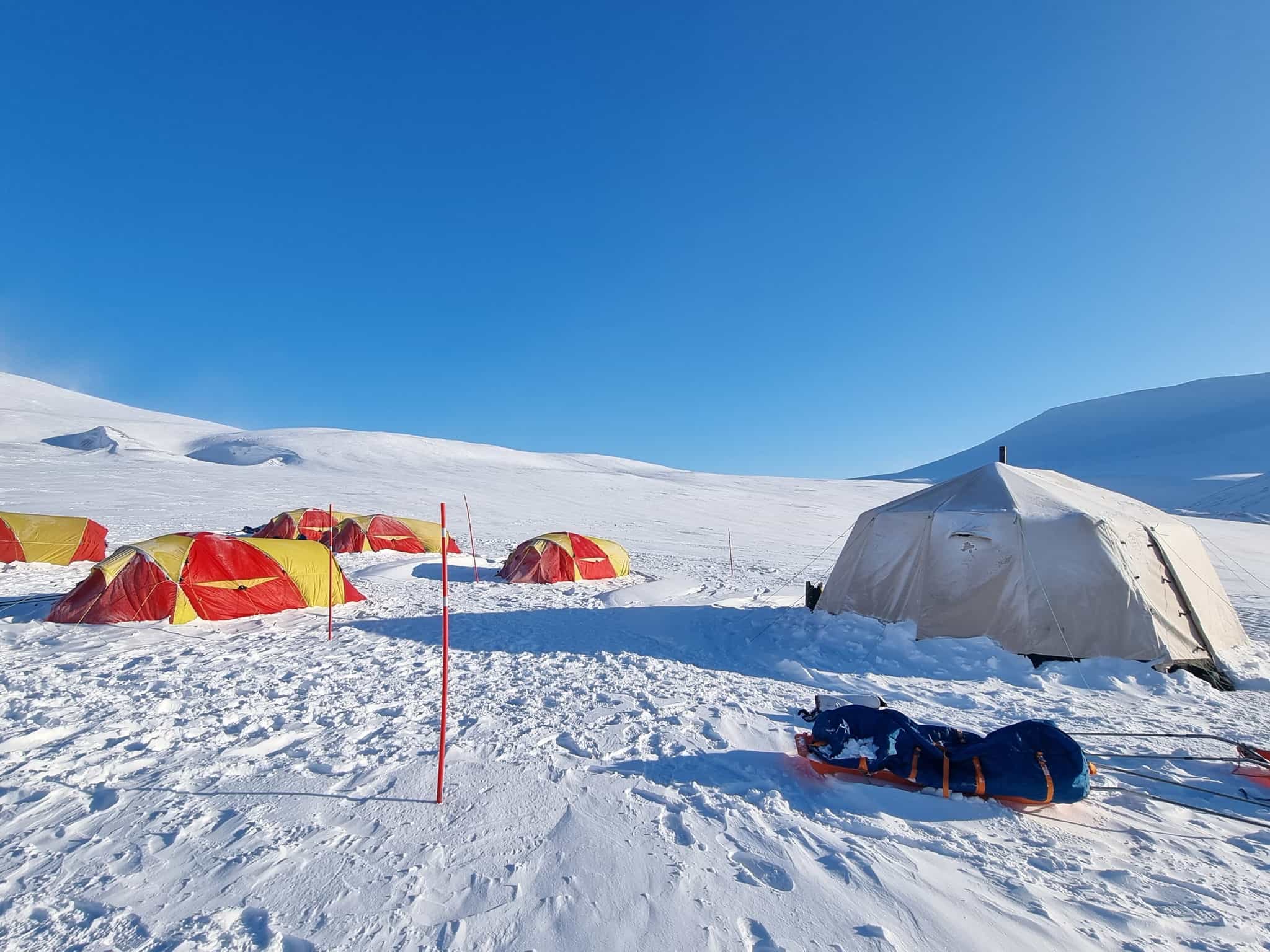
Arctic Wild Camping
You'll stay in a twin-share tent, camping in an area of wilderness completely away from it all. All your camping equipment is provided, although you will need to hire a sleeping bag if you don't bring your own. You'll be kept warm overnight in your expedition tent, sleeping on two cold-weather sleeping mats per person while your baselayers and sleeping bag keep you warm and snug. Your host will make you a hot water bottle each night for some extra warmth. There's also a communal tent for eating and hanging out - which is kept warmed also so provides some extra respite. And of course, a dedicated toilet tent that is responsibly managed.
Upgrades
For solo travellers looking for their own space, an optional private room can be booked for the 4 nights spent in Longyearbyen for an extra charge, see Optional Extras for the price. Please request this at the time of booking (this is subject to availability).
This trip has been rated as Challenging
You'll need to have a good level of fitness and a serious sense of adventure. While you will be kitted out with everything that you need to be safe and comfortable, the temperatures are extremely cold so you'll need to be prepared for it! Days out in the wilderness are tailored depending on the weather conditions and overall fitness of the group, but you can expect to be on the move for a minimum of four hours and up to seven hours if conditions allow. Hiking in snowshoes in minus temperatures is a different kind of physical challenge compared to normal hiking. No previous snowshoeing experience is necessary but you should have some experience of hiking on uneven terrain. You will be expected to do Polar bear lookout in shifts at night time while at the wilderness camp. A driving licence is required to drive a snowmobile.
Please also read the following FAQs: Is Camping out in the Arctic Safe? What does Polar bear lookout entail? What about Polar bears being killed by tour guides? Cold Climate: What factors should I consider?
What if i need to skip an activity?
If you do not have a licence then it is possible to skip the snowmobile activity and have free time in Longyearbyen, or you can request to ride as a passenger with another person driving the snowmobile (please note that this is not always possible as it depends on the group size - please ask you host in advance).
What will I need to carry?
On the way to and from the wilderness camp, you'll need to pull a pulka (sledge) loaded with your personal clothing/items (in dry bags) plus your share of the group's food and camping gear. For the most part it's surprisingly easy to pull the pulka but you'll feel the weight on the uphill sections. You can leave luggage not needed at the wilderness camp at the host's headquarters.
On the day hikes (days 2 and 4), you'll only need to carry a day rucksack with personal items, extra layers, snacks etc.
You are visiting Svalbard in what they call the 'light winter', as the archipelago emerges from the months of 24-hour darkness. In March you'll have around 12-13 hours daylight and during April it doesn't get truly dark at all. In March you'll experience lows of -20ºC / -4ºF and highs of -13ºC / 9ºF, while April warms up a touch to a balmy -9ºC/16ºF.
Beyond any expecations! What an
Beyond any expecations! What an incredible trip.
Amazing experience
A unique and incredible experience in this magical place. The scenery is breath-taking and photos cannot do it justice. You do need to be willing to sacrifice a level of comfort but the reward is an incredible experience of the Svalbard wilderness. Having the right kit makes a big difference so pay heed to the advice of the guides and ask if you're not sure. The hike on the first day is a good opportunity to test out your kit and adjust if necessary before you go camping.






Amazing time!
Had an amazing time! Would highly recommend this trip. From the cave trip, to the camping, hiking.. the lot, thoroughly enjoyed!
The only thing I’d suggest is to bring your own sleeping bag










Amazing challenge!
What an amazing adventure. Day 1 was a fairly gentle introduction to the week with an uphill hike out to the ice caves. Beautiful scenery and amazing caves with lovely guides. Next was the wild camping. With a pulka weighing upwards of 15kg, we headed out into the Arctic wilderness for a really challenging, but utterly amazing 3 days of hiking through amazing scenery, scaling small mountains and wild camping in breathtaking surroundings. Throughout we were lucky to be guided by Jonatan and Philipp - both very experienced, knowledgeable and supportive guides. They helped us with our layering, advised re managing the very low temperatures, kept us going with an endless supply of snacks, dug sheltered sitting areas in the snow for our short lunch breaks and cooked some really good hot meals (Reindeer stew with mash and chicken curry and rice) Polar bear watch was an amazing hour both nights - I loved the solitude and Arctic silence, whilst catching sight of some local wildlife meandering nearby. The views were breathtaking. We then had another long trek with our Pulkas back into civilisation with yet more amazing views and more local information from our knowledgeable guides. Our last planned day together was a really fun day spent on the snowmobiles. Great views, great speeds and great fun! After a brilliant day on the snowmobiles we said our thank yous and goodbyes to our guides and as a group we then hired the local sauna to round off our week with a ‘Polar Plunge’ to complete the full Arctic experience. Overall I would 100% recommend this trip for everyone’s ‘bucket’ list. As long as you make sure you are physically fit, mentally prepared for the extreme cold conditions, have the correct kit and are up for the challenge. We arrived a couple of days early and went on a boat trip which was a proper eye-opener to the cold. (As well as another great experience which we paid for separately) It prompted a trip into town where the shops sell everything needed for the climate. Your guides can also sell/rent equipment. Thank you MBA!




A tough but brilliant trip!
This was a great trip, but don't underestimate it! If you are a regular hiker then fitness wise you should be ok but its the cold that makes it challenging. A really good experience and the guides felt more like friends by the end if it. I would recommend decent kit (Toes were toasty in the Sorel Boots) also getting there a day earlier to test out your equipment and layers in the town. A good likeminded group made the trip even better. At the hotel town is more of a 30 minute walk, not always desirable in the cold after a long day but the restaurant opposite was decent. The group tent was also a good setup to get warm whilst camping! All in all not a walk in the park for the faint hearted.






Introductory adventure in the arctic
I’m sitting here writing this, watching the snow covered mountains of Svalbard in the background. This trip is highly recommended if you want an introductory adventure in the arctic.
It’s fair to call this trip challenging. To enjoy it, you’ll need a good level of fitness - enough to walk up a moderately steep slope in the snow, pulling a 15+kg sledge behind you. There are a good number of hills, and quite steep paths, and you’ll need to climb them in snow shoes.
There is an extensive kit list, but it’s worth remembering you’ll be dragging your stuff (at least what you don’t leave in storage at the company warehouse) along with you. One additional change of clothes (baselayers, socks, etc) is a reasonable minimum for camping on top of a good down jacket (ideally thick expedition style), a mid layer fleece and a windproof outer. Good insulated boots (big enough to allow some insulating air space around you foot) and thick wool socks are essential, though they can be hired / bought for a small fee from the company. Snacks are provided by the company and wet wipes are not practical at minus 26oC, though hand warmers are fantastic. The guides cook dinner at the campsite - genuinely good hot meals and extra calories to boot.
The guides are very good and highly experienced. They push you to do your best, though it is also important to recognise your limits and state clearly if there is a something beyond your comfort zone, since there is an assumed level of risk associated with some activities. Overall they’re very happy to listen and accommodate as is practical.
At the end of a fantastic trip, snowmobiling rounds things off perfectly. It’s cold - Ski goggles and a good buff are essential! Travelling through some of the most stunning landscape I’ve ever seen at 90kph is something I’ll remember for the rest of my life.
I strongly recommend this trip, but prepare well for it!


Cant wait to go back!!
Svalbard was truly a different experience to what I had imagined and I cannot recommend it enough!
Camping in -25, climbing a frozen peek, zipping across Svalbard on a snowmobile I cannot decide which part of this trip was the best, Im already tempted to go back in Summer!
One thing I would suggest is hiring gear, it was very straightforward and meant we were well prepared even for polar bear watch. Oh and also go to the husky cafe, it was as good as it sounds!


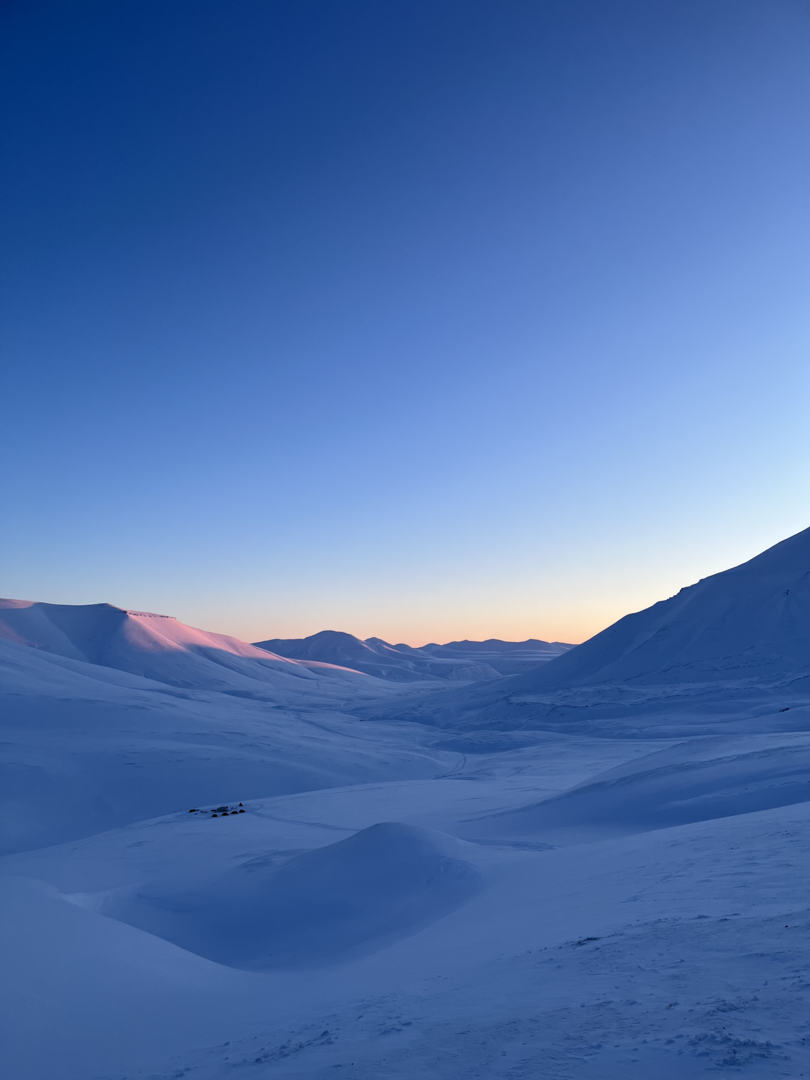
An absolutely incredible experience!
Svalbard really is a phenominal place and like nothing else I've ever experienced. The pictures really don't do justice to how incredibly beautiful, unique and harsh the environment is.
Our trip took place during an unseasonably cold spell which meant our nights camping were done so in -26C. Although I felt relatively prepared having meticulously followed the kitlist, that level of cold definetely takes some adjusting too and you certainly have to accept some degree of discomfort. The guides did a great at teaching us how to get warm and stay warm overnight and were fantastic at keeping the camp running even with a few logistical issues.
My big piece of advice would be to really focus on your kit. We hired lots of the more technical kit as recommended by Much Better Adventures and it meant we had great quality gear without having to pay a huge expense to buy it ourselves. Longyearbyen also has some great sports shops which you can easily find any last minute bits you might need.
There were so many incredible moments and highlights from this trip that it's hard to narrow them down. -The first venture out to the ice cave is really exciting and a nice taster of what to expect in the cold. -The second day at camp included a hike to the peak of Trollsteinen which has absoluetly breathtaking views. -Incredible views down the valley into Longyearbyen whilst pulling your pulka back to civilisation after the hard days camping. -Snowmobiling to Tempelfjorden in the sun felt out of this world and was a brilliant change of pace from exploring on foot.
This trip definetely has a big element of type 2 fun but it was an absoluetly incredbile experience like no other.
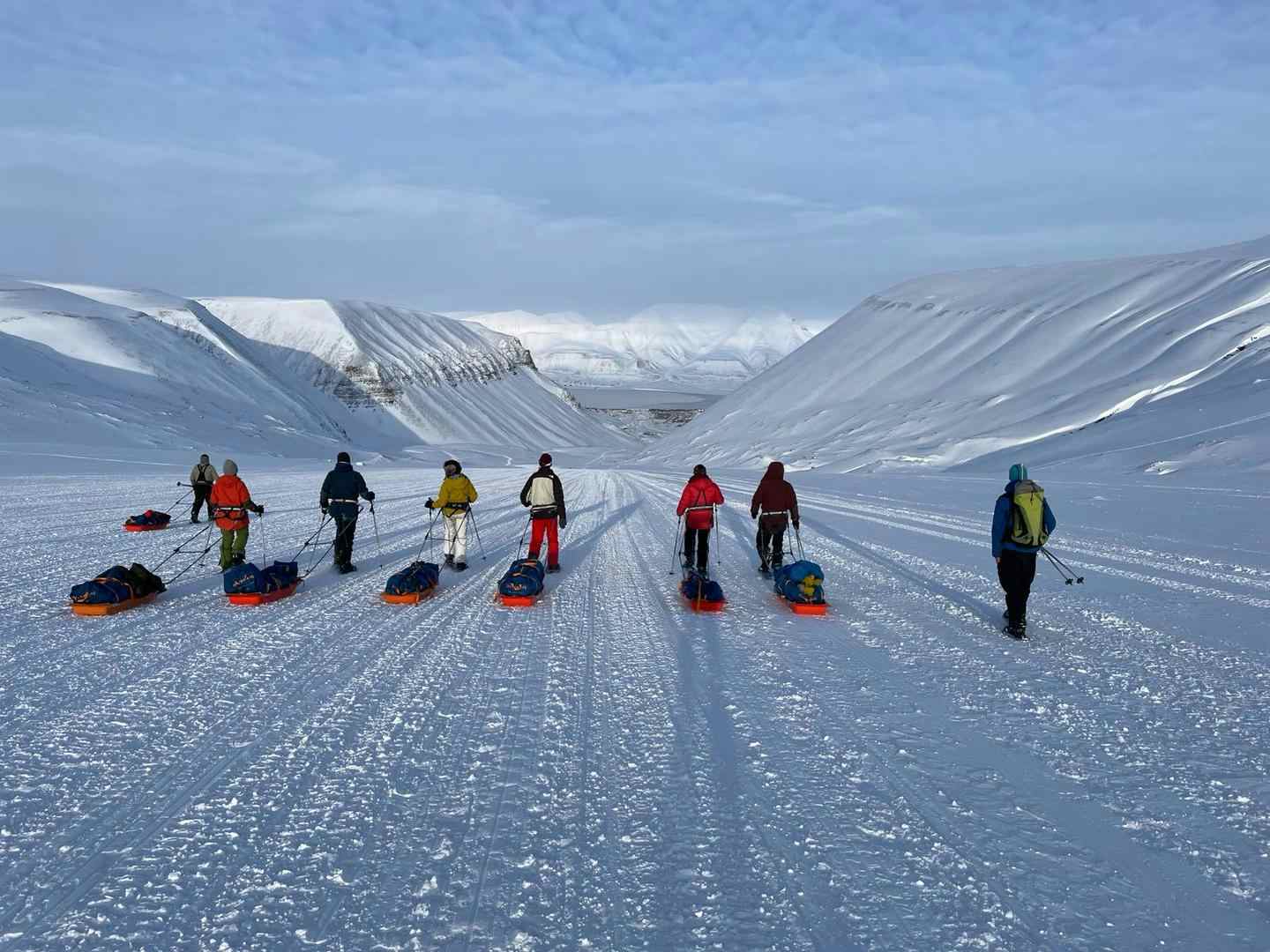
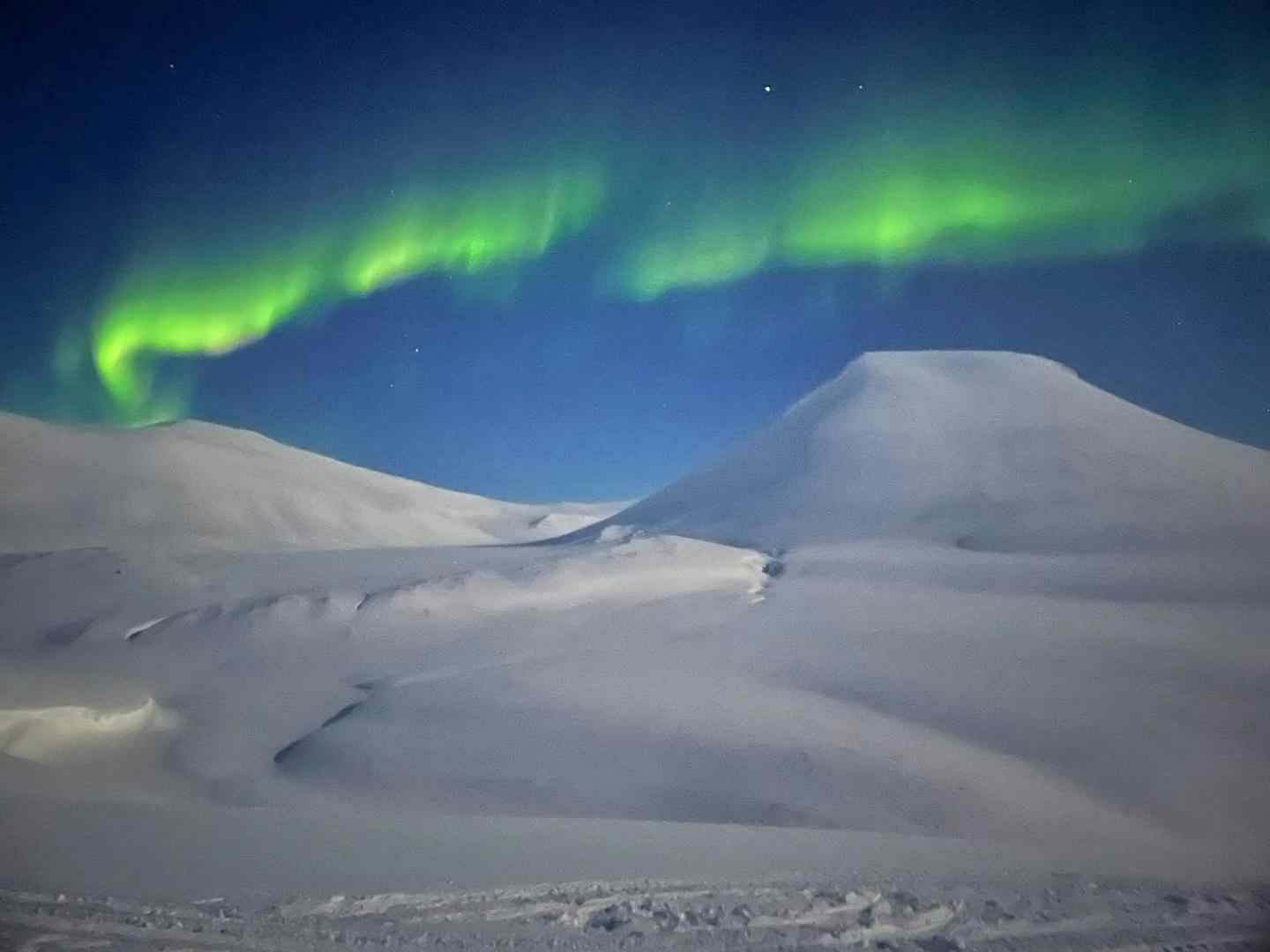
Hywel - March 2024
This was an experience of a lifetime for me, in a special place, which sometimes I felt I had all to myself, particularly when I was up on polar bear watch at 4.00 in the morning. I would rate this as 5 stars, but there were some things that didn't run quite right for me, and I believe in being honest, hence the rating. Day 1 - more time could be spent on an initial briefing here, with a kit check, to allow people time to purchase additional items, and to understand why they need them. Maybe ask people to arrive a day earlier even. Day 2 - trek to an ice cave. Very interesting day with our guides Phillipe and Albert, who were very knowledgeable and accommodating. Day 3 - trek out to wild camp. Led by our guides Niklas and Jonatan, a challenging snowshoe hike to our campsite. Comments here on possibly starting the day a bit earlier, and not spending much time on a lunch stop. Alternative choice of route possibly? We did get to bed late, but that allowed us to see a beautiful Aurora Borealis display. Day 4 - day in camp, with a short hike. Jonatan and Mirko working very hard keeping everyone comfortable and active. Day 5 - hike back to Longyearbyen. In keeping with the other days, very cold (-25 deg C)and sunny. Very enjoyable after a relatively easy day beforehand. Route choice perfectly selected to bring us back to the guesthouse. Day6 - snowmobile trip out to Tempelfjorden. Good briefing beforehand, with lots of spare kit available if needed.
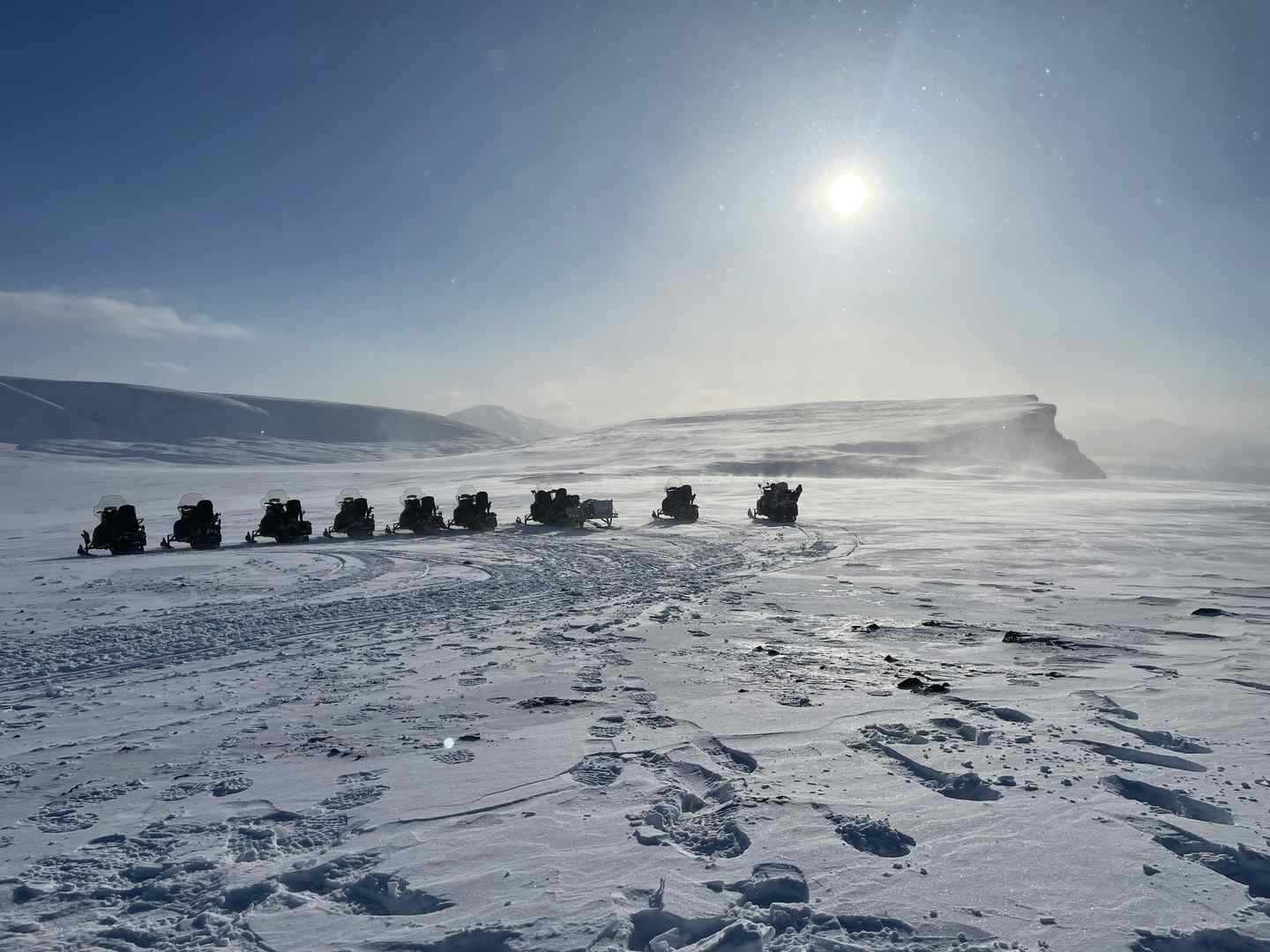
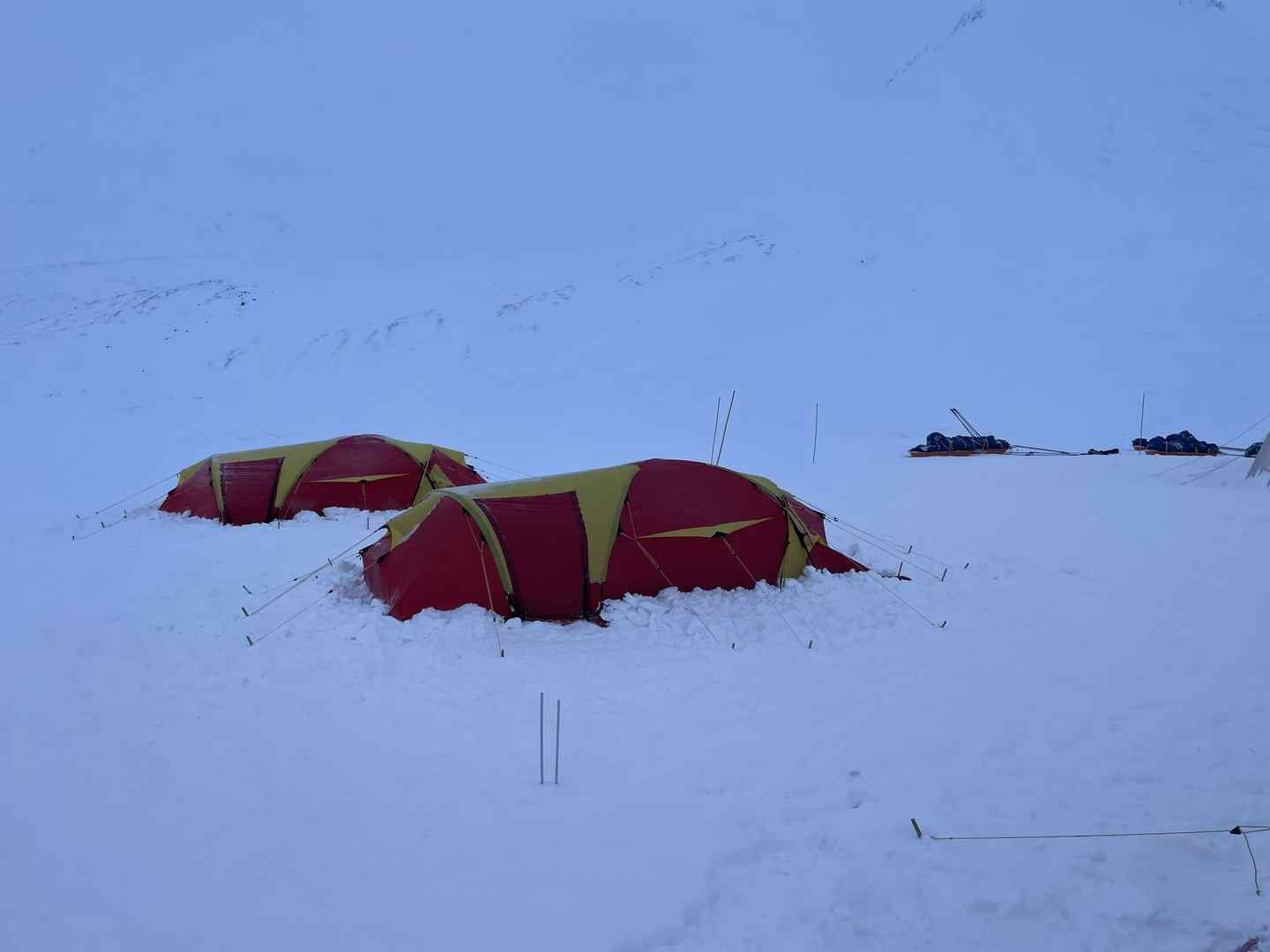
Svalbard is amazing. The expedition
Svalbard is amazing. The expedition was fantastic. Slightly let down by the accommodation. It’s the furthest guest house in town away from the town and nothing to write home about.
It’s completely worth doing this trip but be aware the weather is very harsh and makes everything 20 times harder. Be warned.
A tough but rewarding experience.
There are many things to say, This experience is based on someone who adventured with no prior outdoor/camping experience, in their 30s with median fitness levels.
Firstly I recommend adventurers to try to 'overprepare', kit will make or break this trip. Also understanding why it works can help a lot (e.g. principles of windproofing, managing water, and leaving some air space within gear for insulation). I was not the most prepared however the guides made sure I was able to make the most out of what gear I had. I've never worn contact lenses before, but I think they are a must if the weather is as cold as it was on our trip (-26C) - glasses will freeze/fog, wearing goggles over glasses is not always practical. Svalbard is a beautiful wilderness with most of the locals being wisened to outdoor activities and managing the cold, outdoor lifestyle seems to be a big driver as to why they are there! They can give great tips on preparation if you arrive early.
The trip: The activities were well planned, with day 1 being a bit of a taster/preparation check (beautiful scenery in the ice cave)- I got cold so knew I had to buy more clothes, Longyearbyen is well suited for finding any gear you need. I think the trip could've benefitted from giving us more time to find gear. Pulling the pulka to the campsite was amazing, a real physical challenge- there were some logistical issues at the campsite but they were prioritised and resolved by the guides accordingly, safety was put first and the camping trip was successful. Though I personally didn't complete the camping part- I felt I didn't have enough gear to get through two nights, the guides made a contingency plan for this. Snowmobiling was exceptional- again, I recommend contact lenses for practicality, covering 100km+ definitely gives you time to feel you have a good level of competency on a snowmobile.
It was great to work through the adventure with a group of 10, with different strengths and weaknesses, leading to us forming a strong bond and leaving us with a group sense of achievement.
This trip has left me with many memories and has taught me a lot about camping and preparation for outdoor trips, it has served as an inspiration to develop my fitness and outdoor skills. I would recommend it to anyone willing to be challenged in an unforgiving environment.
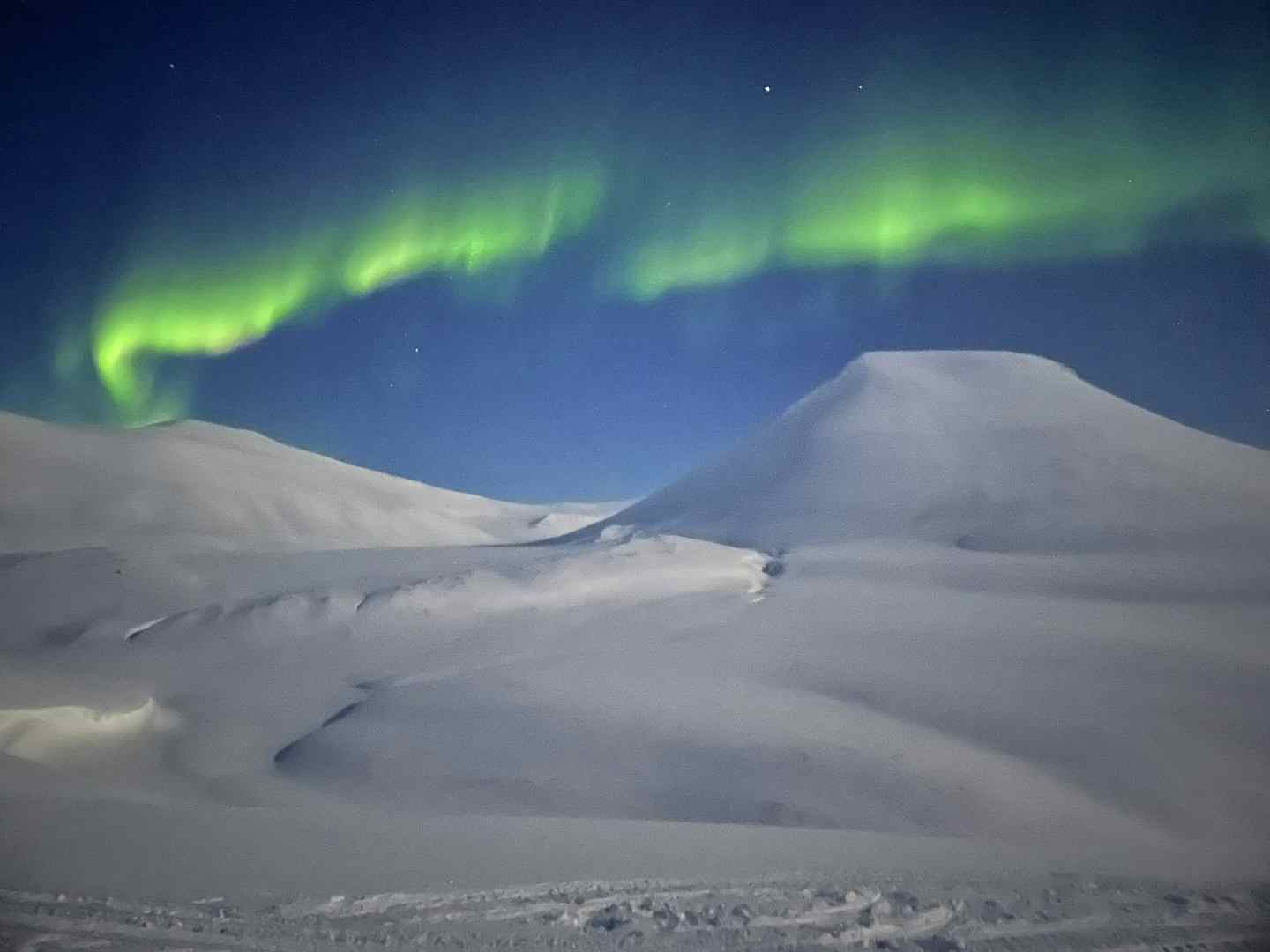
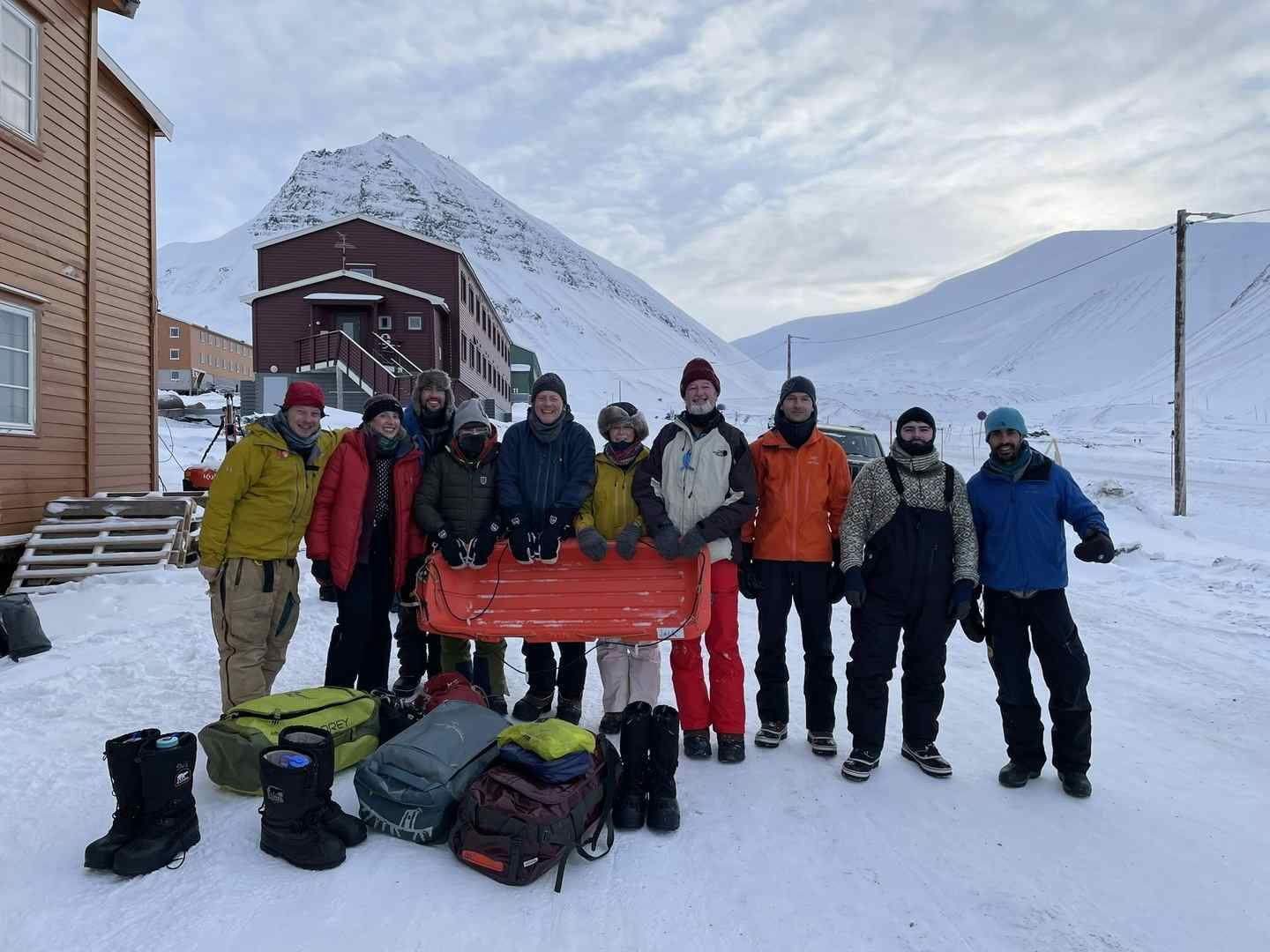
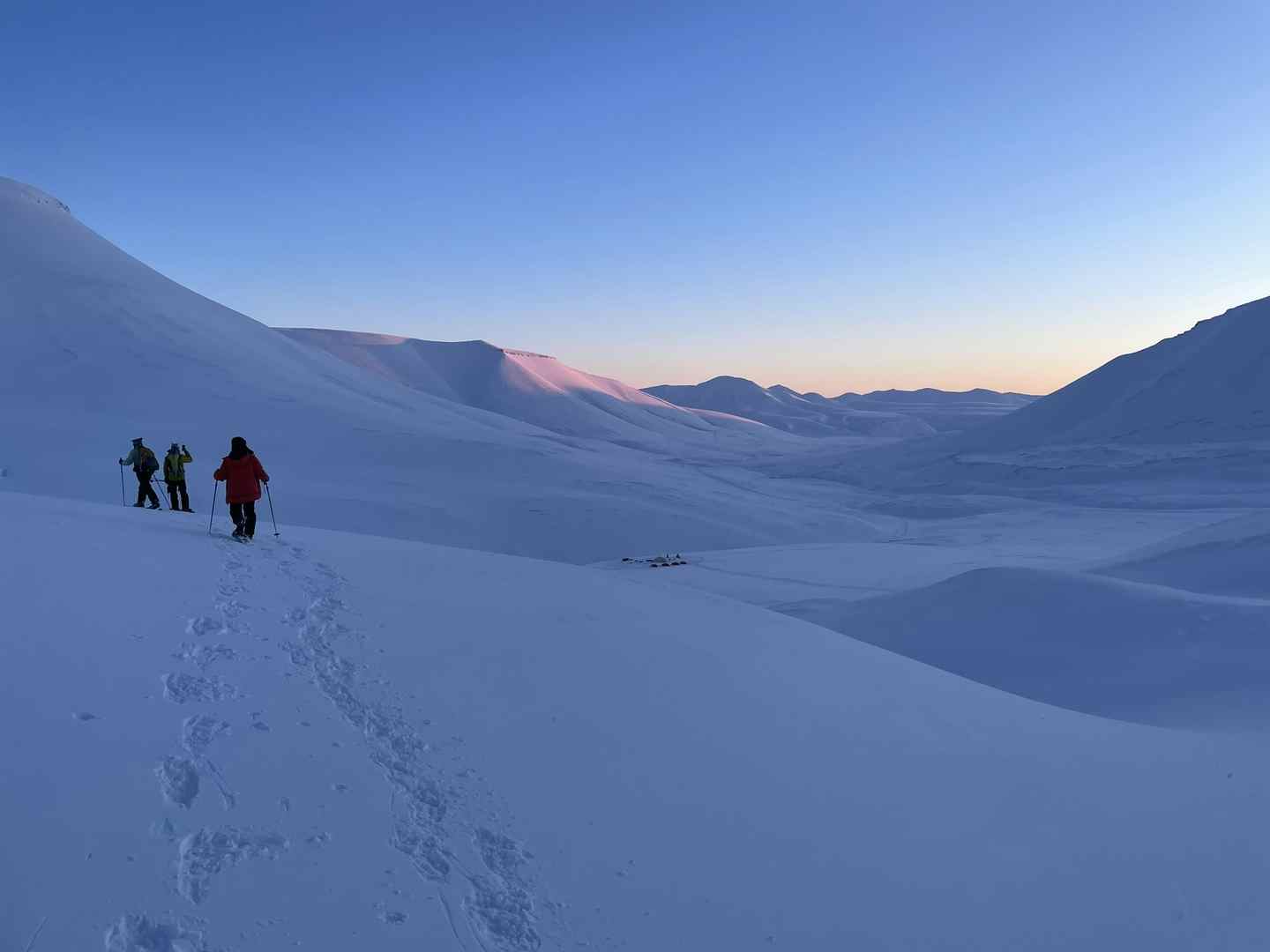
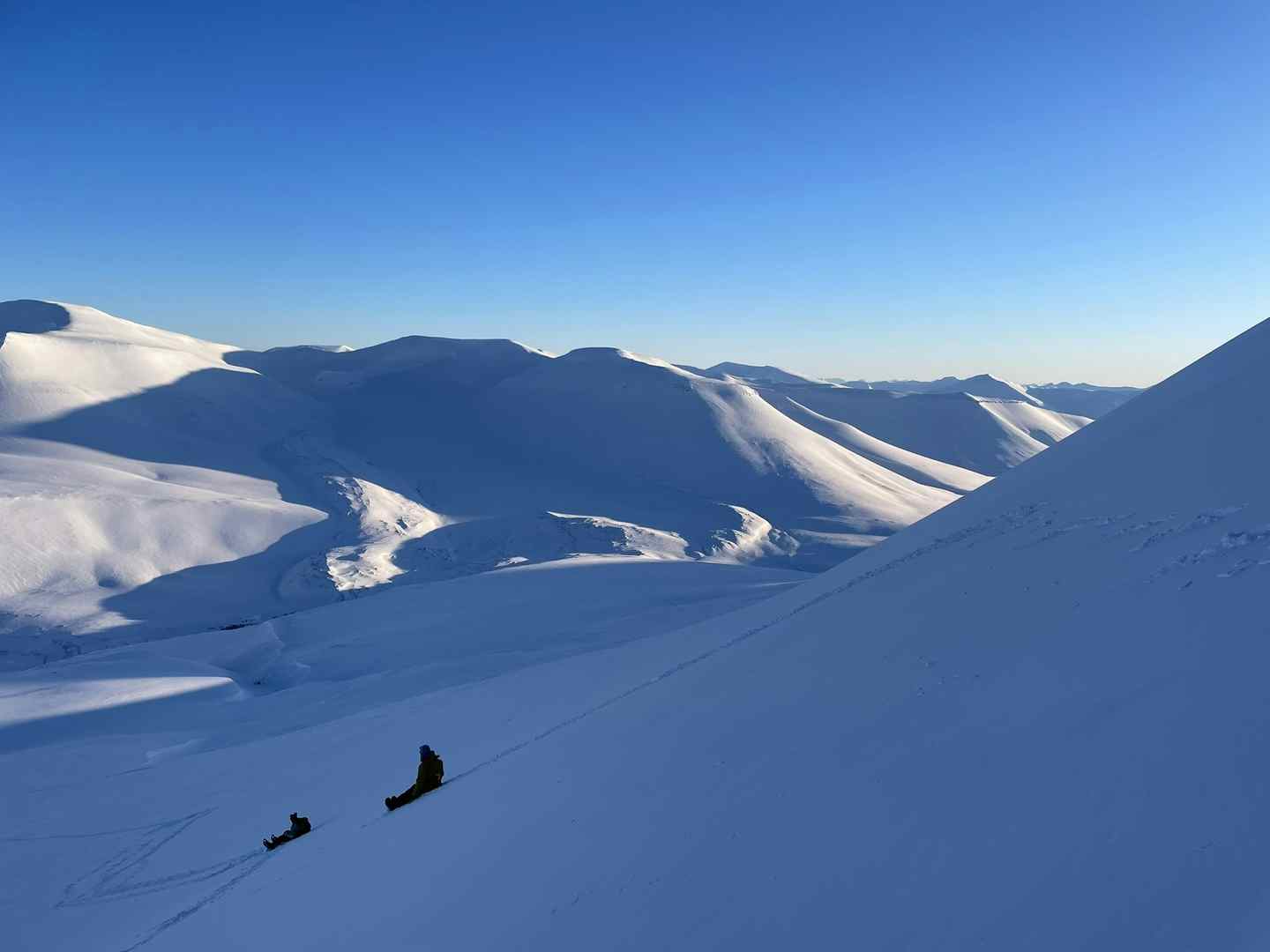
A privilege to experience the beauty and uniqueness of Svalbard
This was an incredible trip to experience the magical beauty and remoteness of Svalbard - I wasn't ready to leave on day 7! The guides were fantastic at keeping us safe, sharing their passion for life on Svalbard and working non-stop to give us the best experience possible.
The glacial ice cave was a great introduction to the week and allowed us to get a feel for the cold (-26C).
The snowmobile experience was phenomenal - it was a first for me and felt like being part a Ridley Scott alien movie, flying down a highway of ice on the frozen fjord surrounded by the most spectacular scenery as the sun set.
The hike up to the Trollsteinen viewpoint led by Mirko was another highlight which was stunningly beautiful and really gave a perspective of the vast landscape of Svalbard.
For the most part, the camping was a fantastic experience (with the Northern Lights even paying us a visit) although the group did have some issues on the first night. To quote one of the guides, you are expected to put up with a certain level of discomfort. The camping experience definitely has an aspect of type two fun associated with it.
Having the right equipment is critical. From my perspective, I paid a lot of attention to the defined kit list but struggled to get the correct gloves before the trip. Even after a shopping trip to London, the warmest mittens I could find were insufficient on day 1 and required buying something more suitable in Longyearbyen. My advice would be, if you are struggling to find the right equipment before the trip, rather than waste money, wait and buy the optimal kit in Longbearbyen as it is very well equipped and you'll get excellent advice from the locals. Perhaps even arrive a day early with this in mind.
The one recommendation I would suggest to tweak the trip is to provide a safety briefing and kit inspection on day one. I fully appreciate it is down to us to come prepared with the correct equipment but there will be gaps in a group of 10. Making sure everyone has the correct kit to be safe and comfortable for the trip on day one would likely save time in the long run. Also, some advice on what level of cold is to be expected vs what carries the risk of frostbite etc and strategies for dealing with the cold could be shared at the beginning.
A few last tips:
I carried around a mass of clif bars for the week which were too frozen to eat! Although the guides did a great job of keeping us topped up with snacks, if you want to bring your own, I'd recommend a simple, large squared chocolate bar. These are also quite nice for breaking apart and sharing around.
If the temperature is as cold as we experienced it (-26C), you may find it too cold to bother using a proper camera. You may benefit from leaving it behind and saving weight.
One of the best lessons Mirko gave us was to get active and use your body to generate heat before getting into a cold sleeping bag or camp boots. I think this is a much better strategy than faffing around with hand warmers etc.
Many thanks to my fellow much better adventurers, the guides and locals of Longyearbyen for the trip of a lifetime.
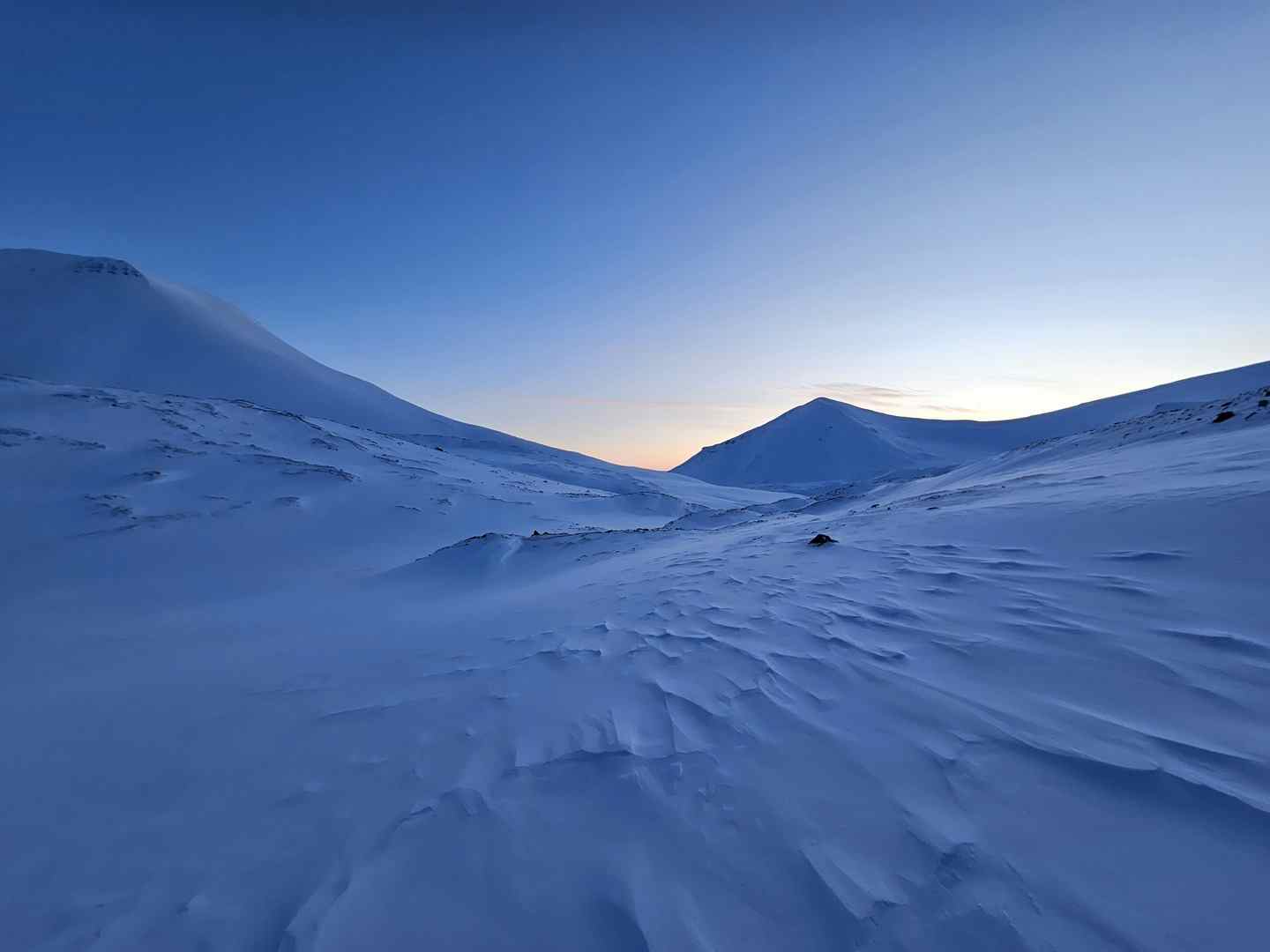
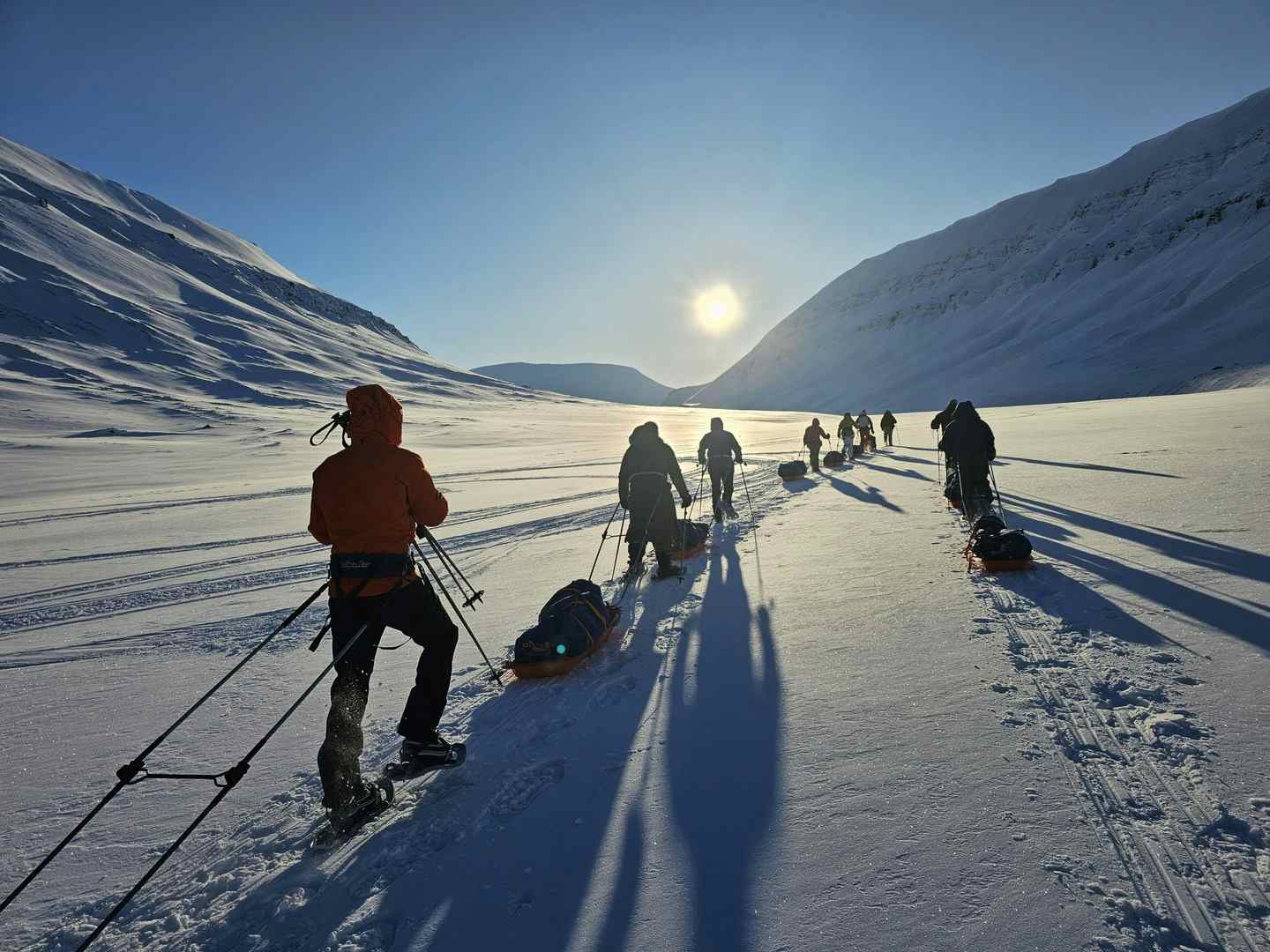
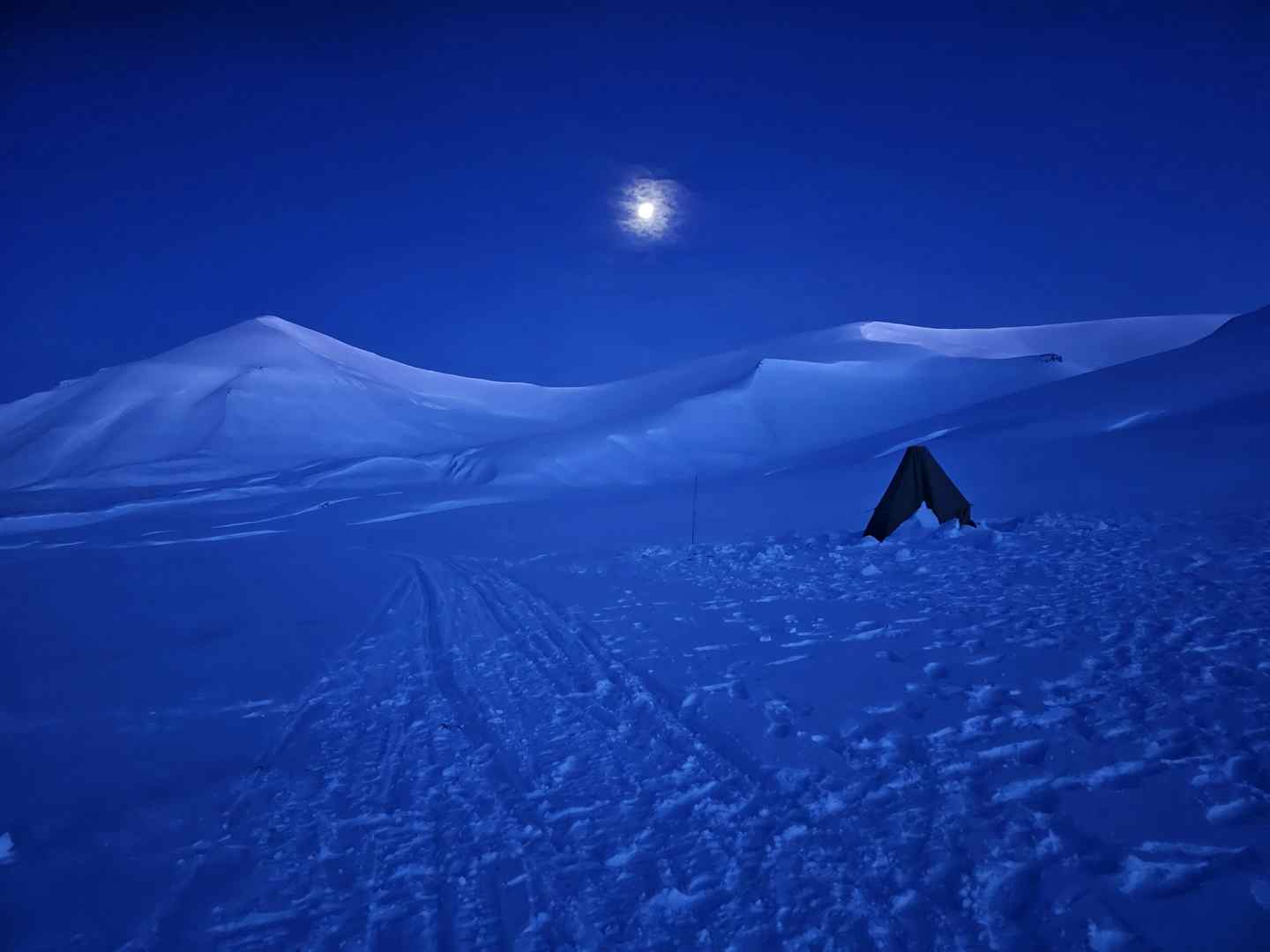
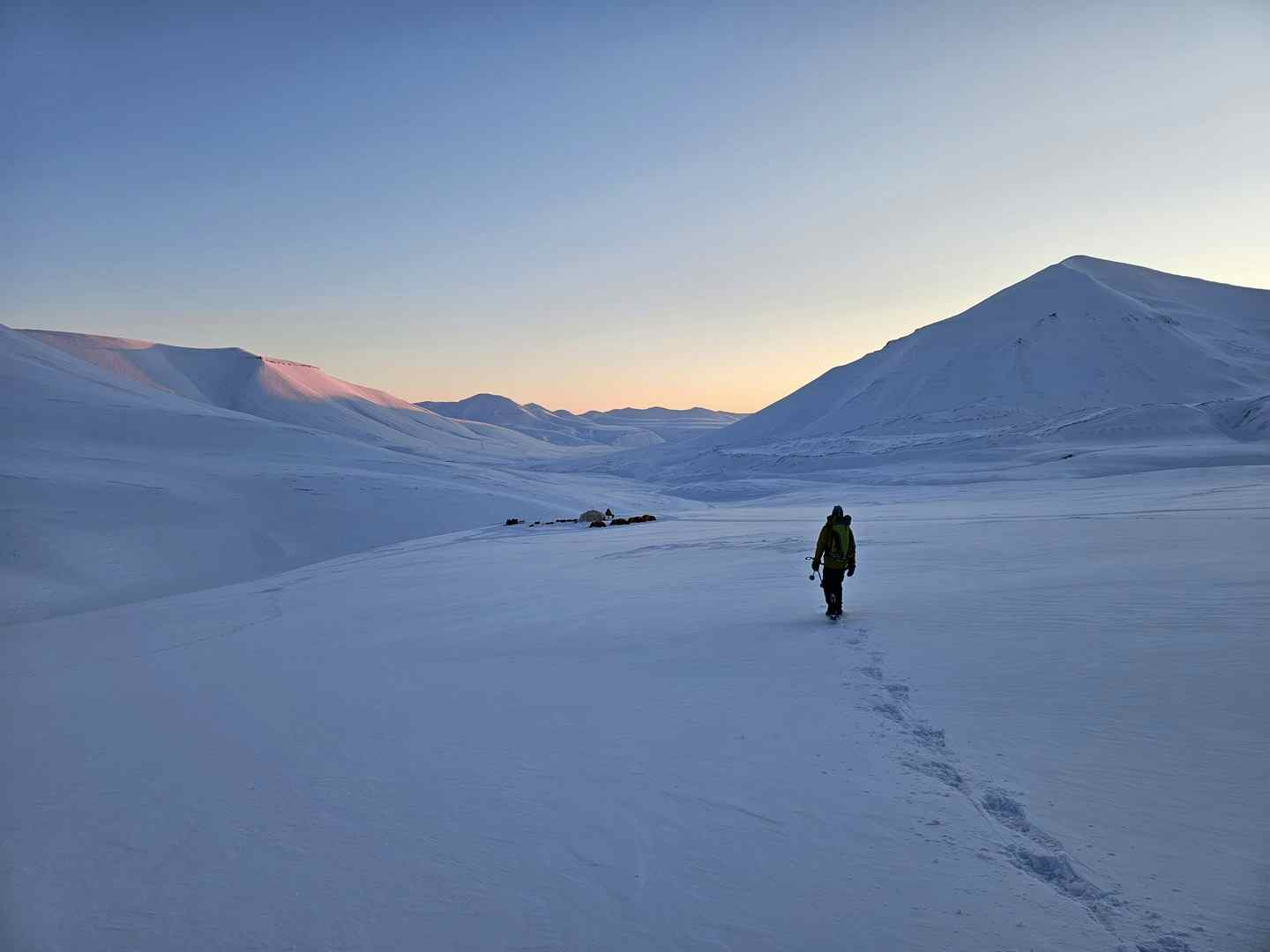
A fulfilling and challenging experience
An incredible adventure with highs and lows that made it all the better. Don't underestimate this one as it is tough camping at such low temperatures, we had -25°c which was on the colder side but very manageable with the right gear!
It was incredible seeing and feeling the landscape during the hike and camp, and then rounding off the trip with a comparatively comfortable snowmobile trip.
The guides were absolutely excellent, Jonatan, Nikolas and Mirko were absolutely brilliant during the camp and managed to keep alive a group of very inexperienced campers, in very hostile conditions - a feat that some may not quite appreciate!
A fulfilling and challenging trip, I'd recommend to anyone wanting to push their boundaries and experience something they likely won't find anywhere else.
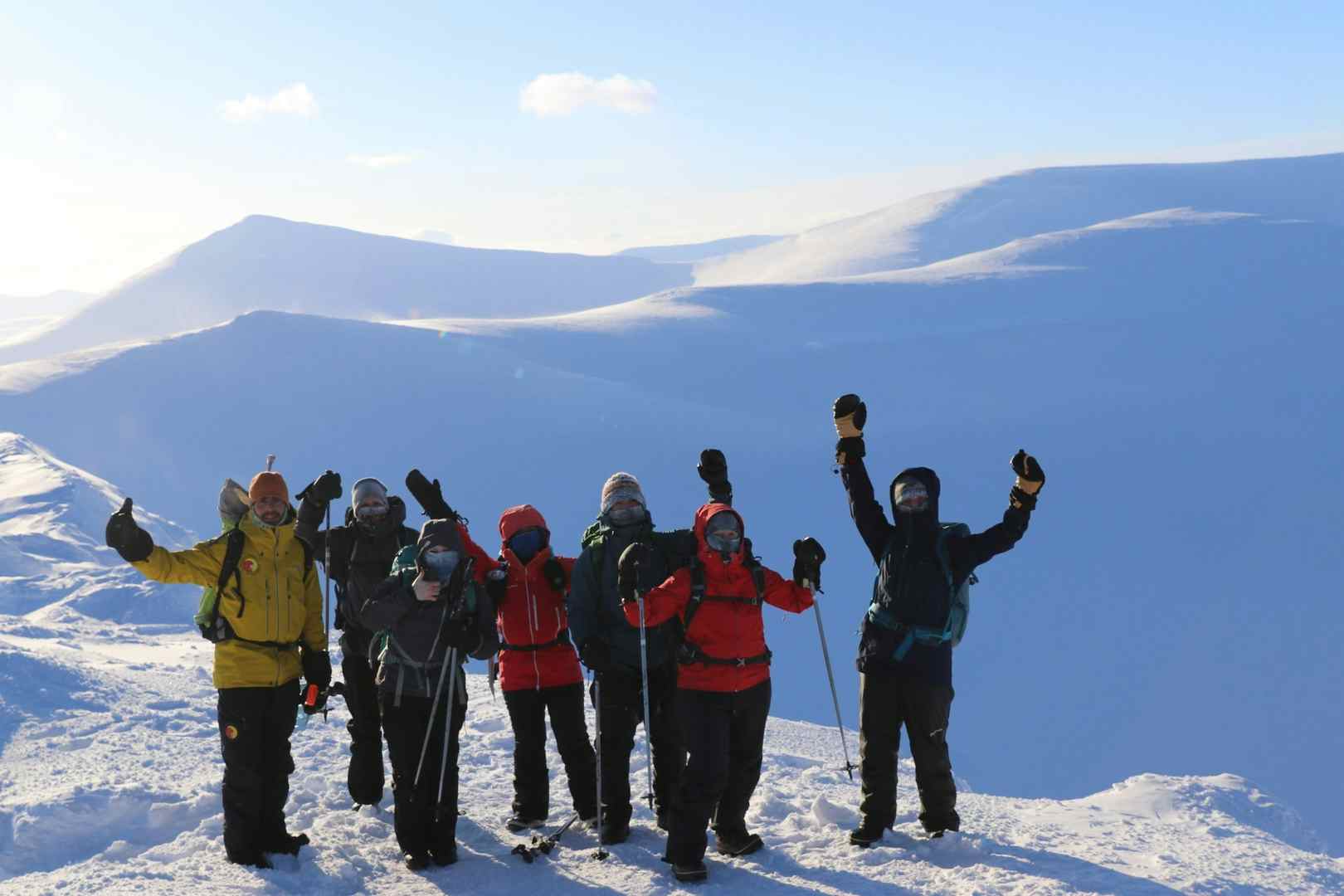
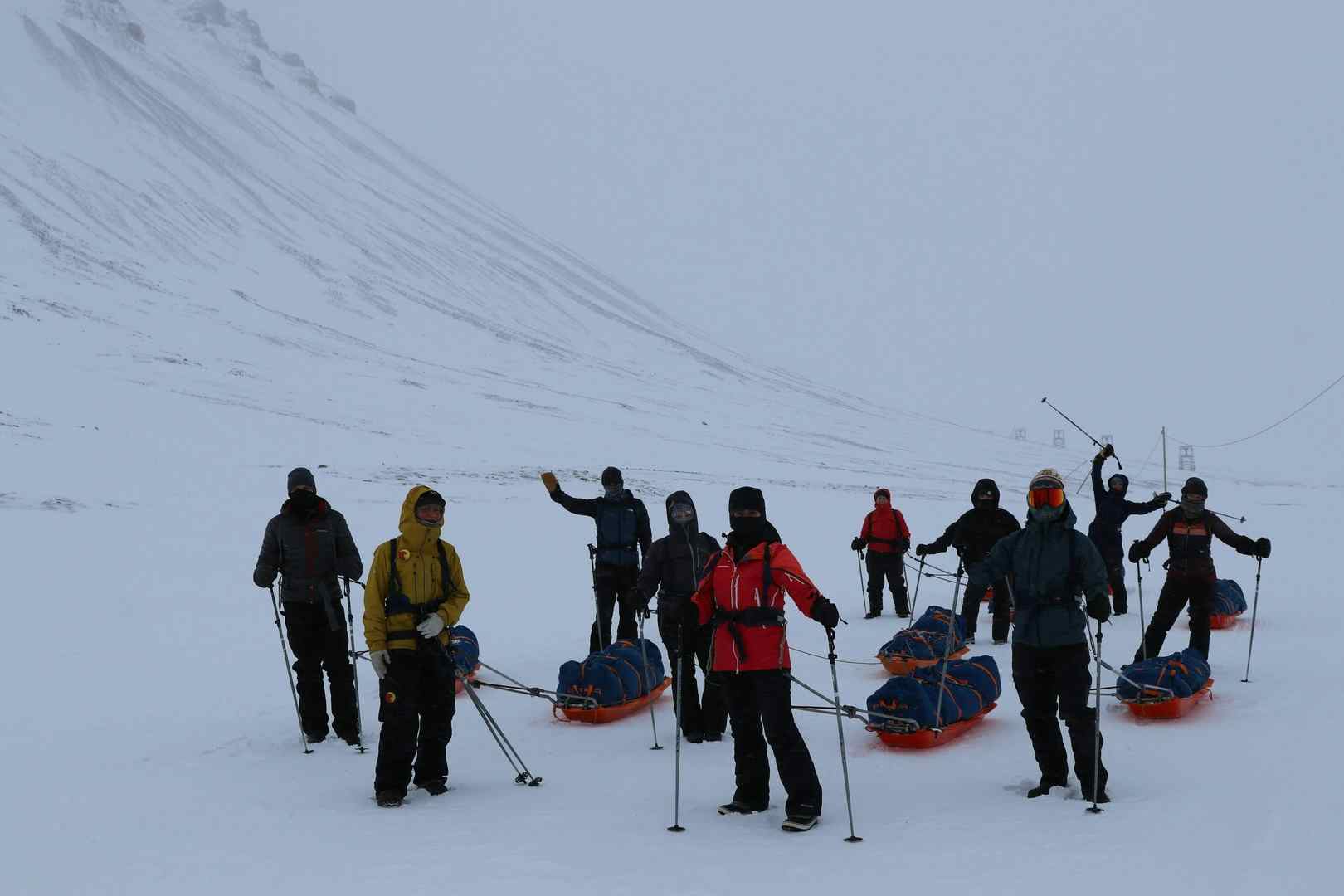
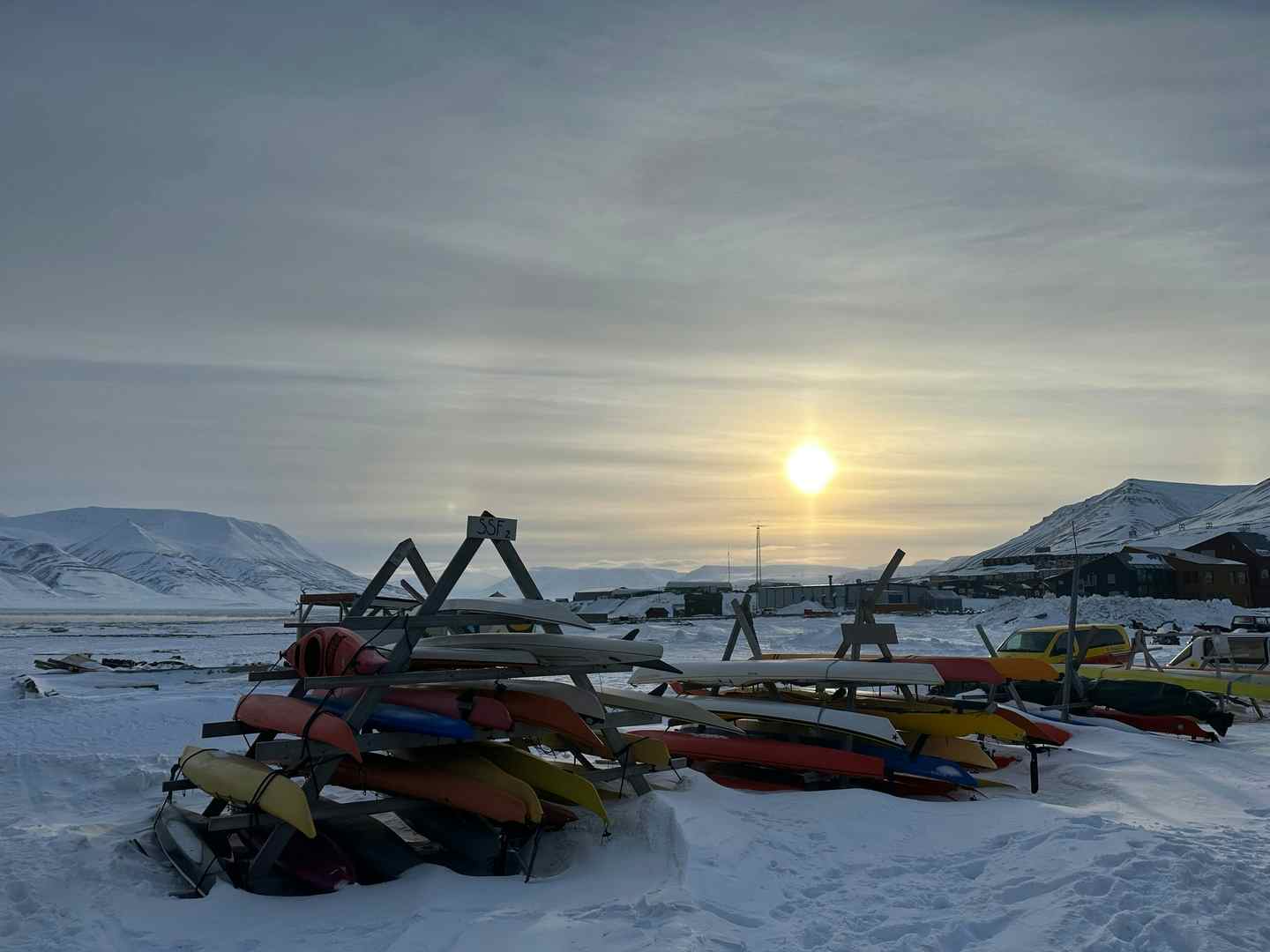
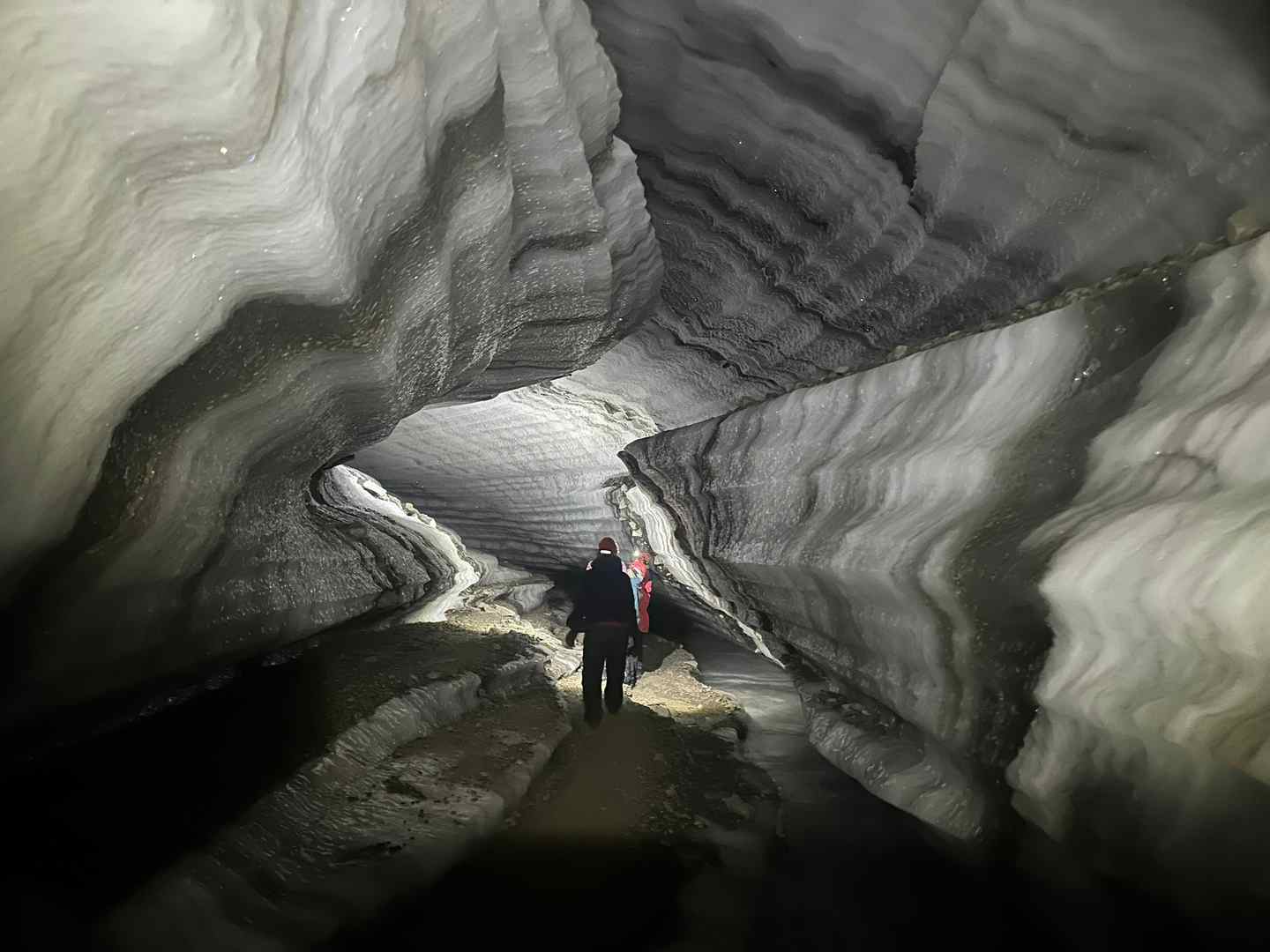
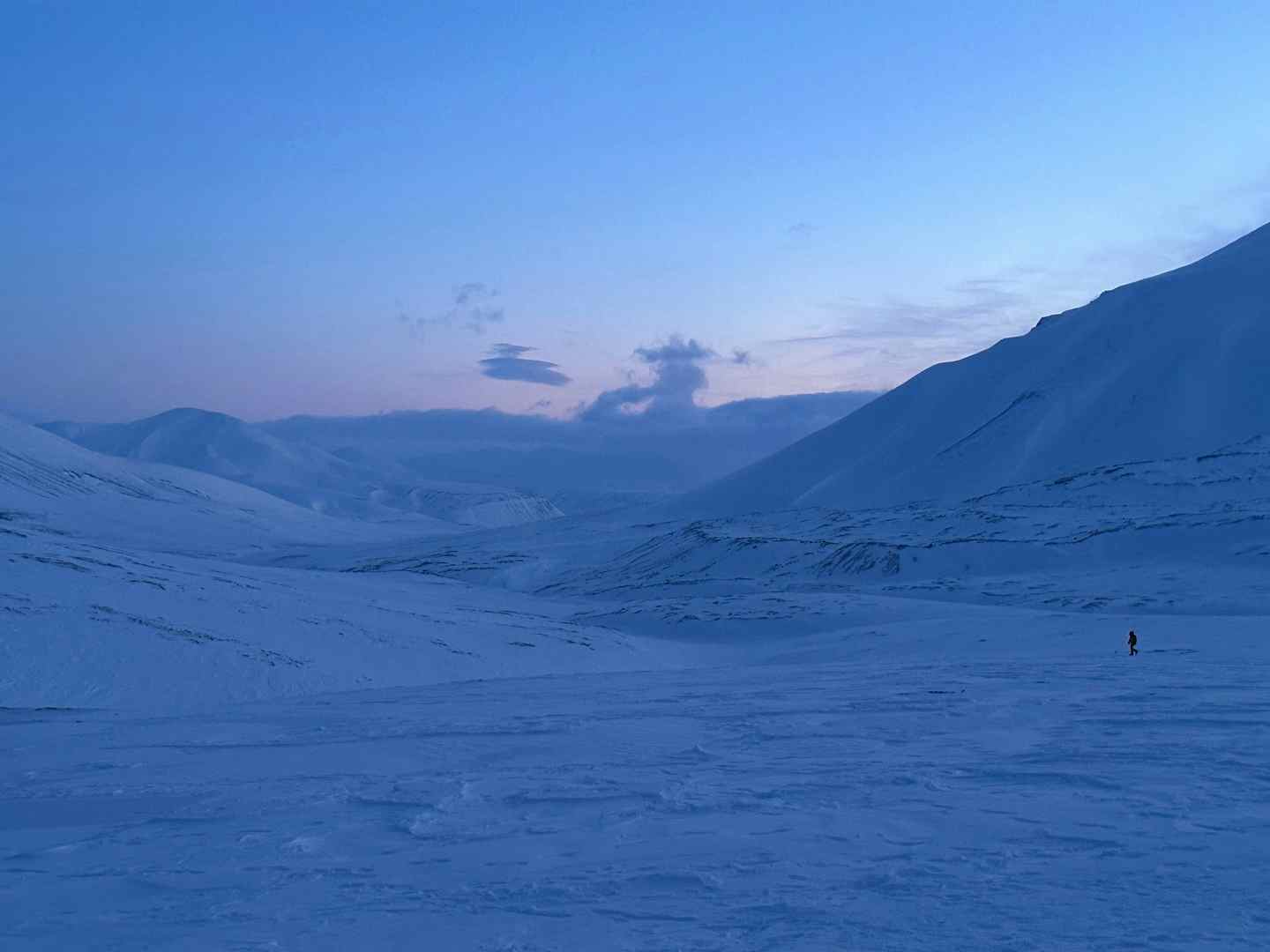
This was a unique and unforgettable trip that was equally challenging and inspiring providing a fascinating introduction to the polar wilderness. The expedition and camp was a real test of resilience in the biting, inescapable cold and is not to be underestimated, but it also provided a real insight into life as a polar explorer. The local guides were first class and their knowledge and enthusiasm was infectious. The scenery is absolutely breathtaking and was copious reward for all the exertion.
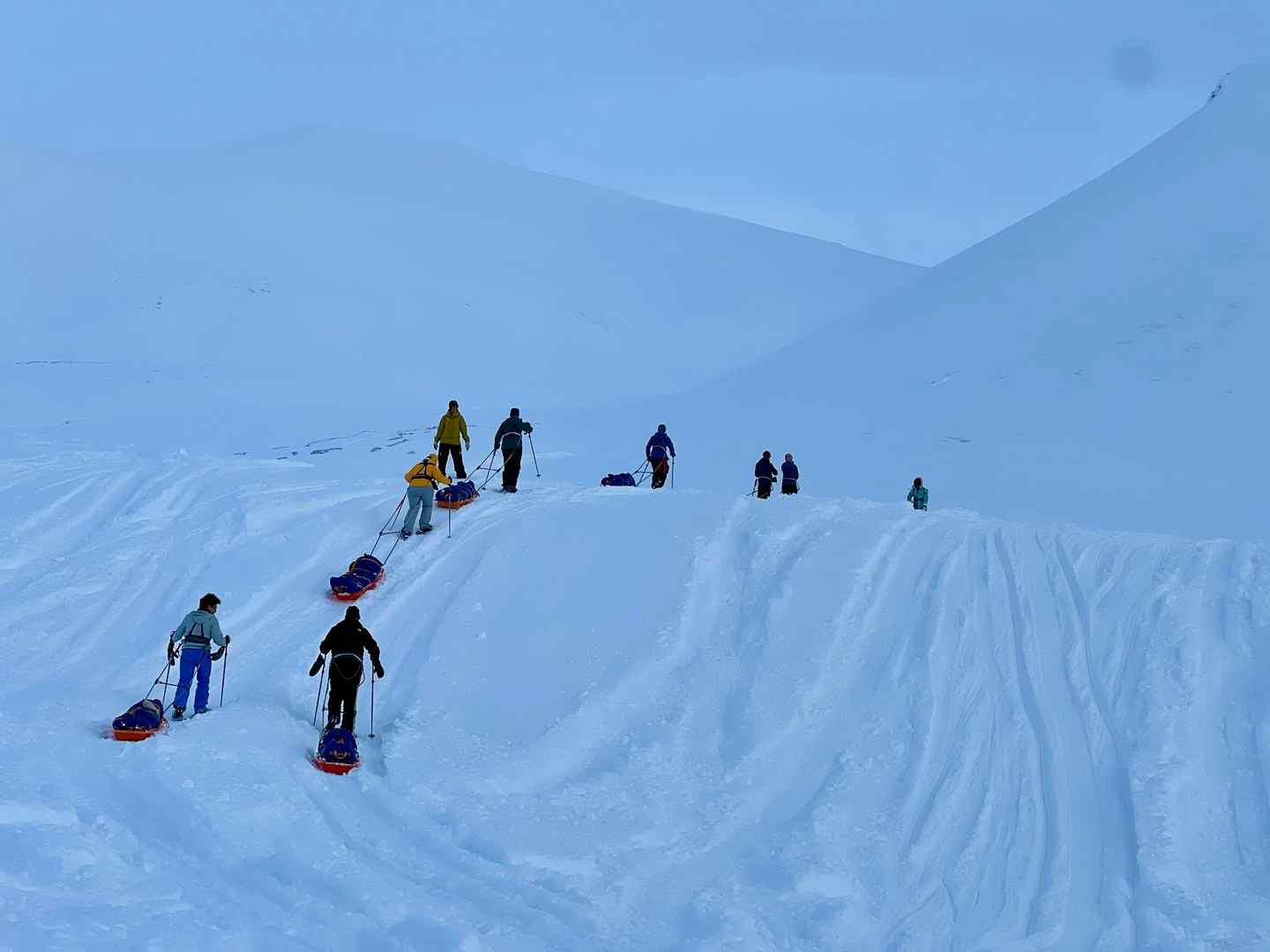

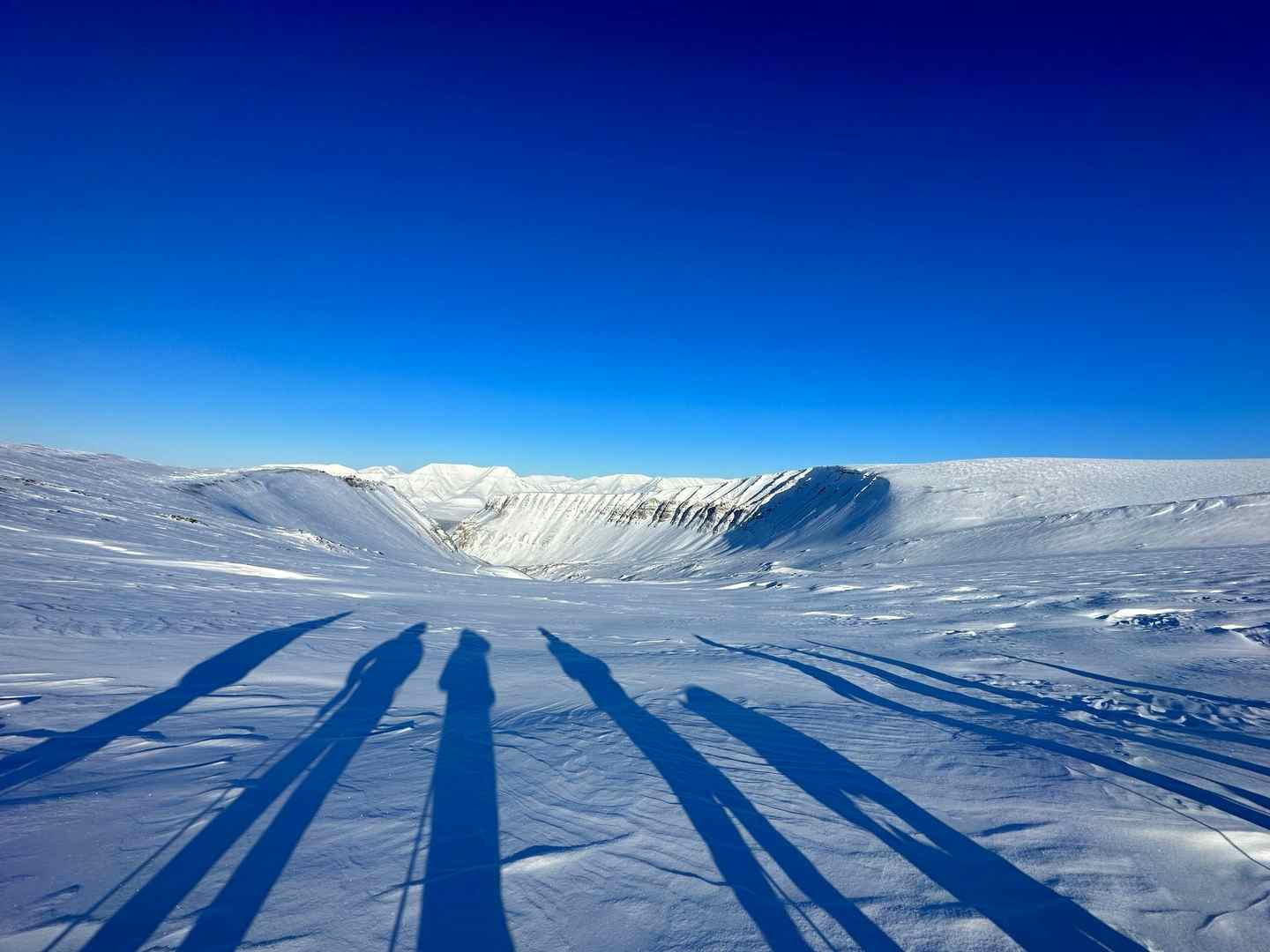
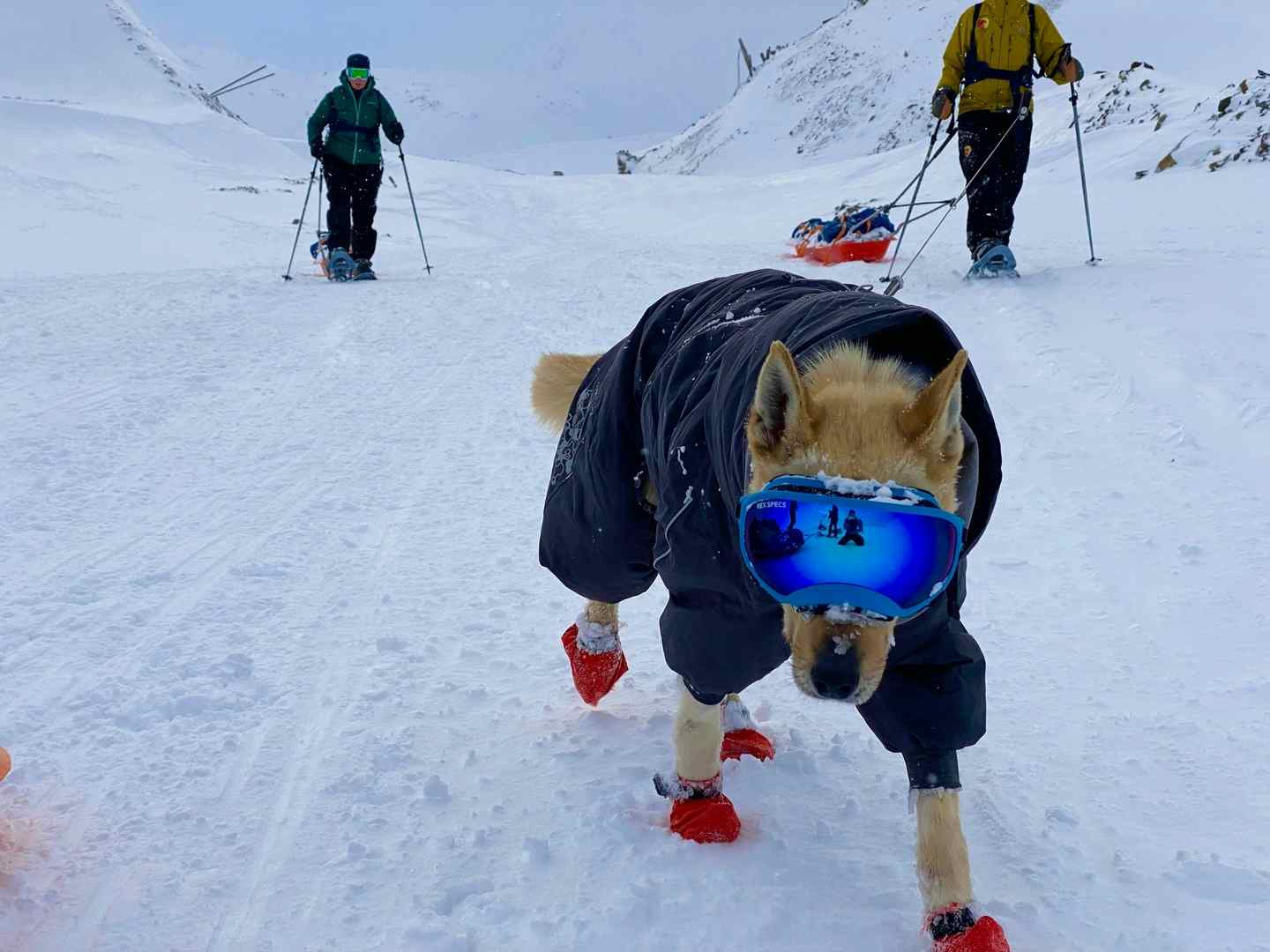
Just amazing, from start to finish this trip had everything. It was hard work and challenging at times, not for the faint hearted but wouldn’t have missed it for the world. The guides were excellent, lots of fun and very knowledgable and nothing was too much trouble. Svalbard is a magical place and so glad we got to experience it, can highly recommend this trip but you will need to ‘embrace’ the cold
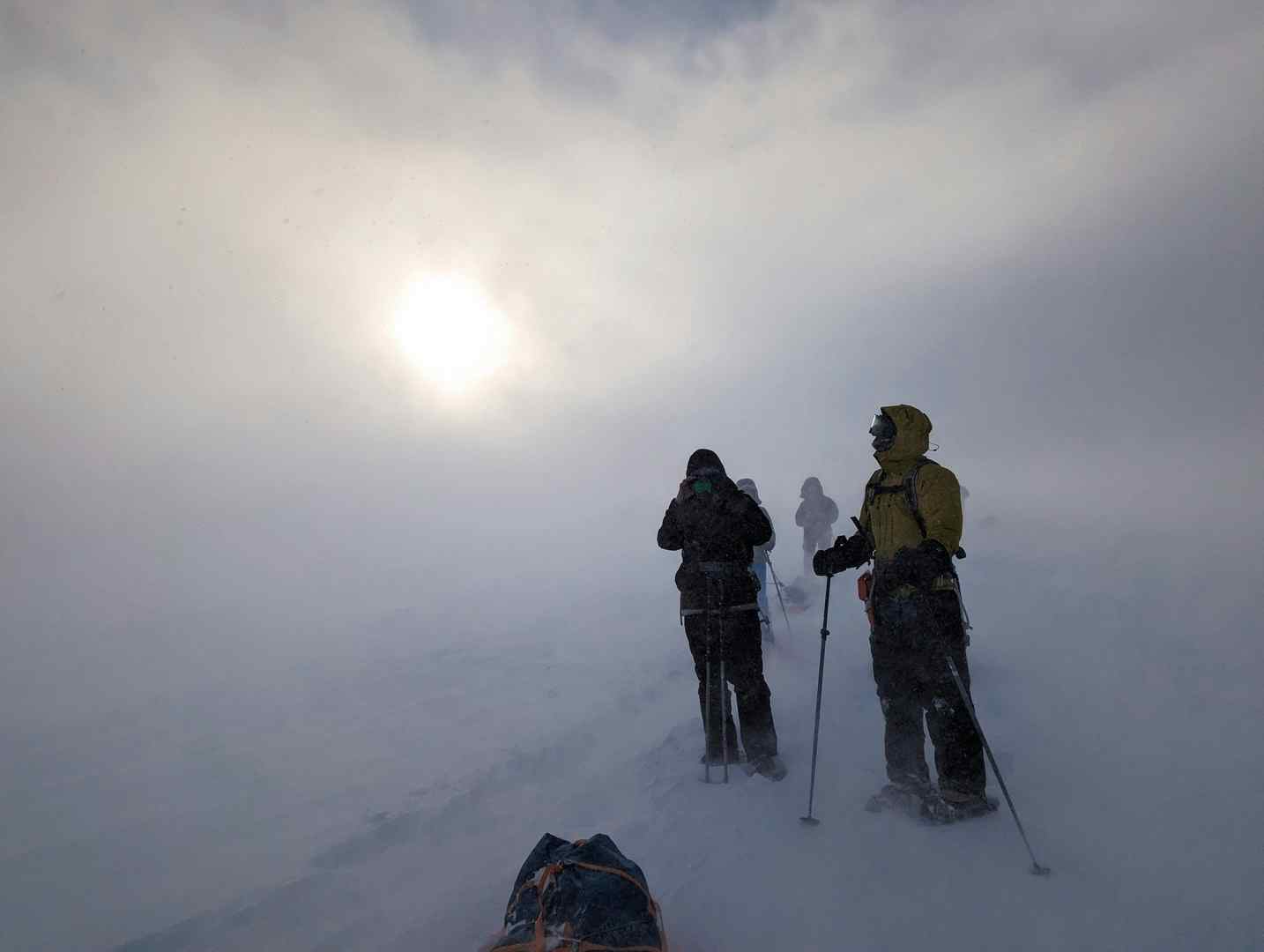
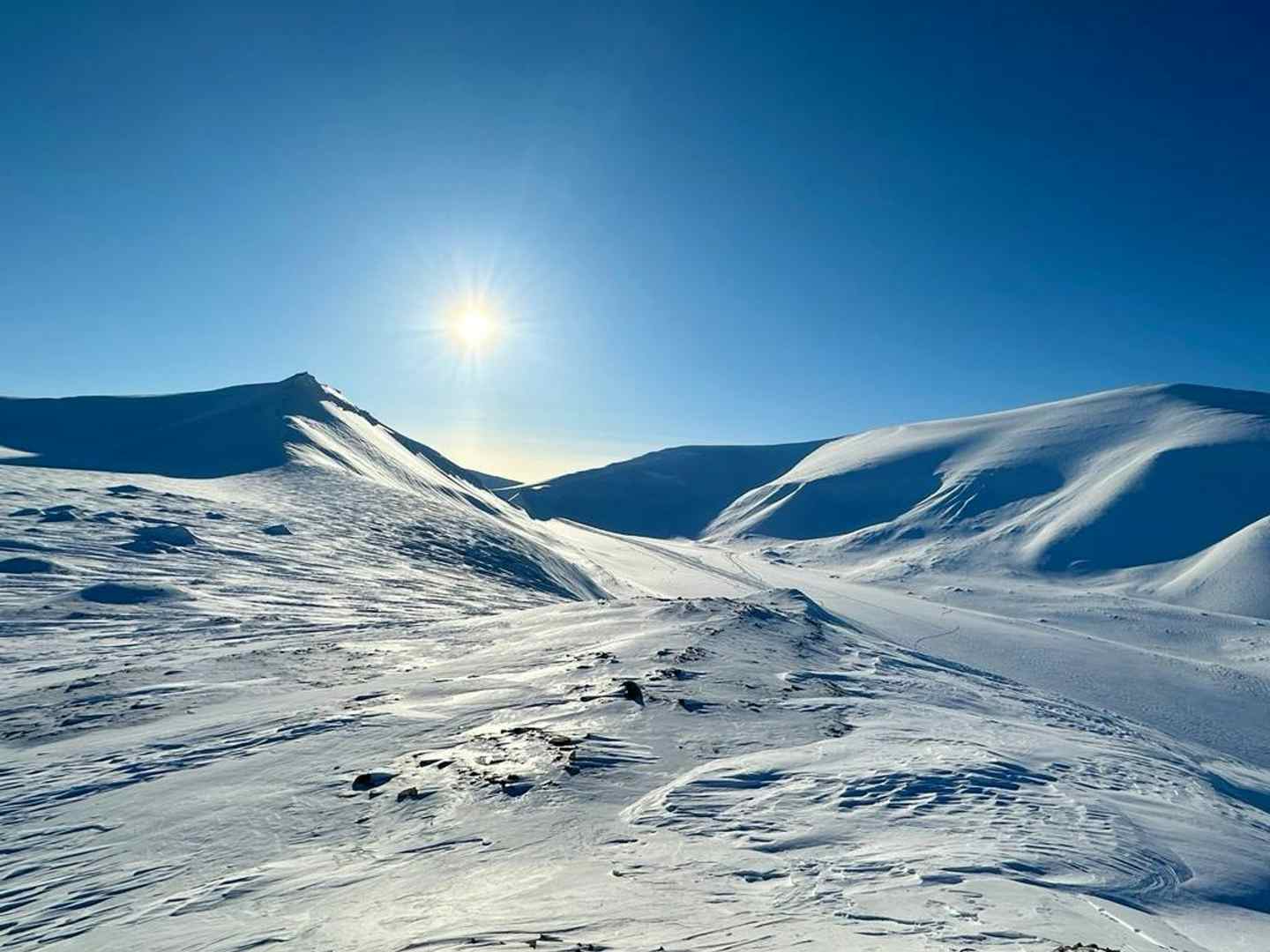
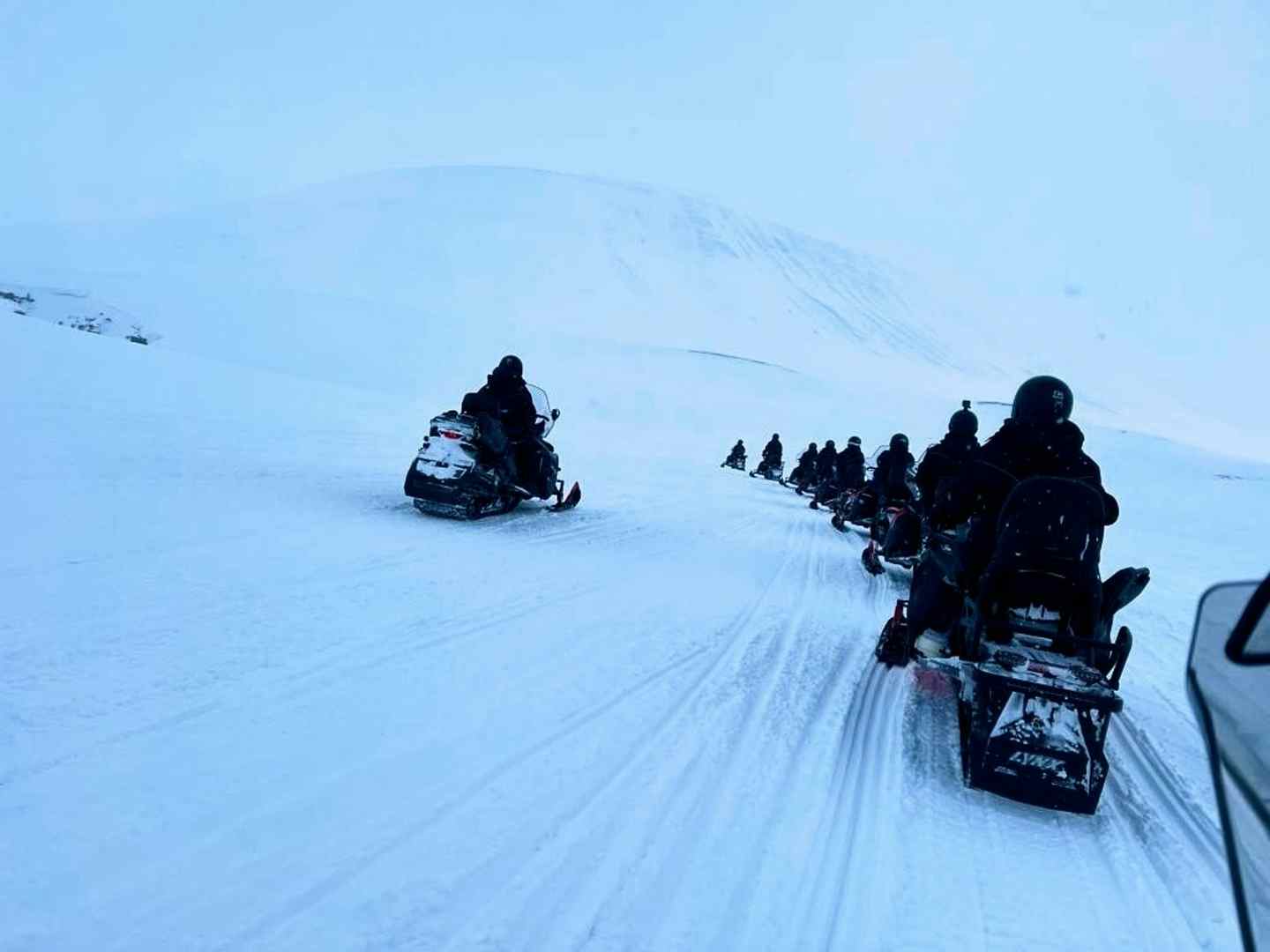
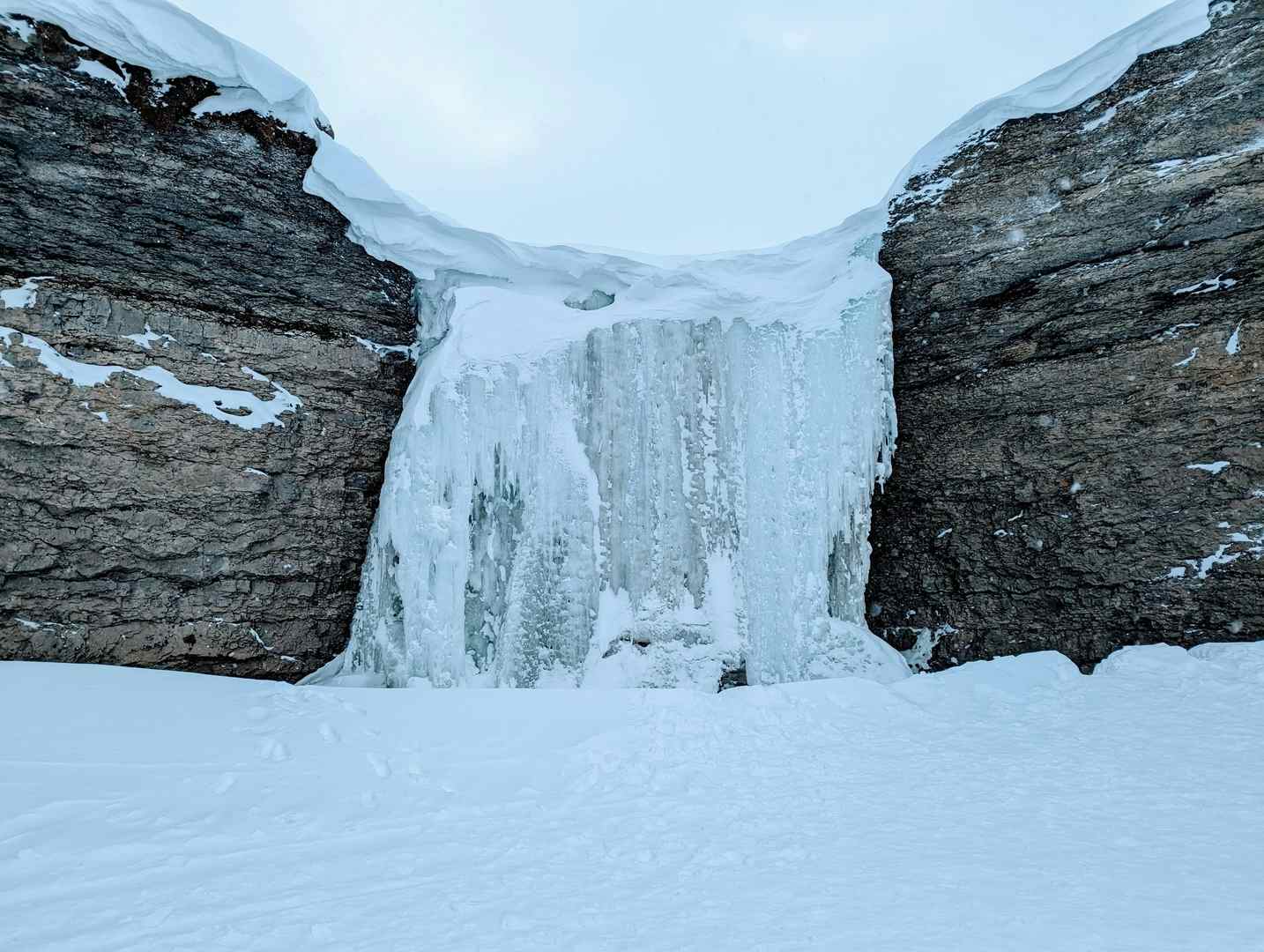
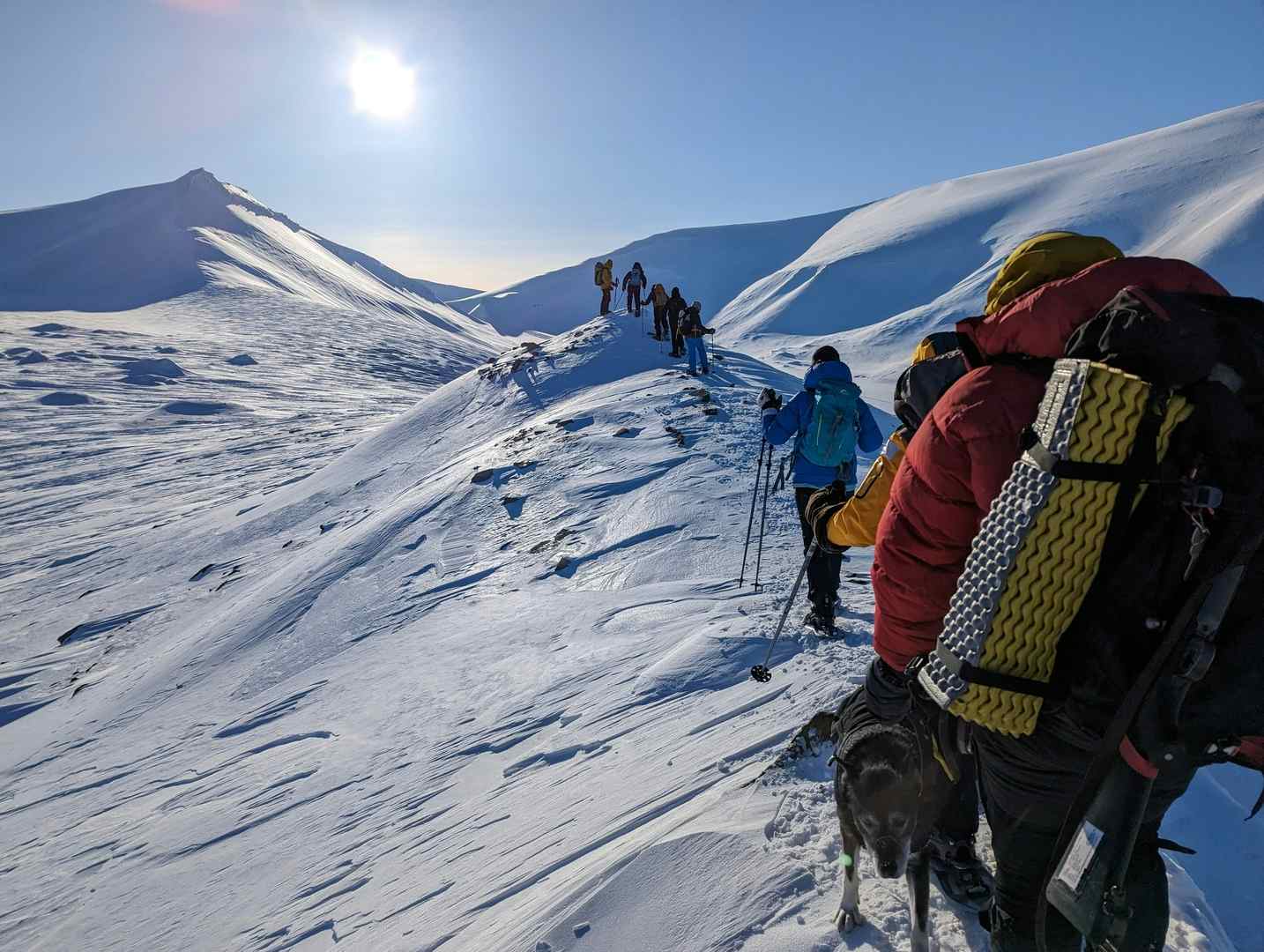
I had the absolute best time on my trip to Svalbard, it met all of my expectations and really was a fantastic experience for my 40th birthday celebrations.The snow cave was really cool, the wild camp and polar bear watch just magical and just challenging enough to satisfy me, and the snowmobile safari a fun way to end the week.
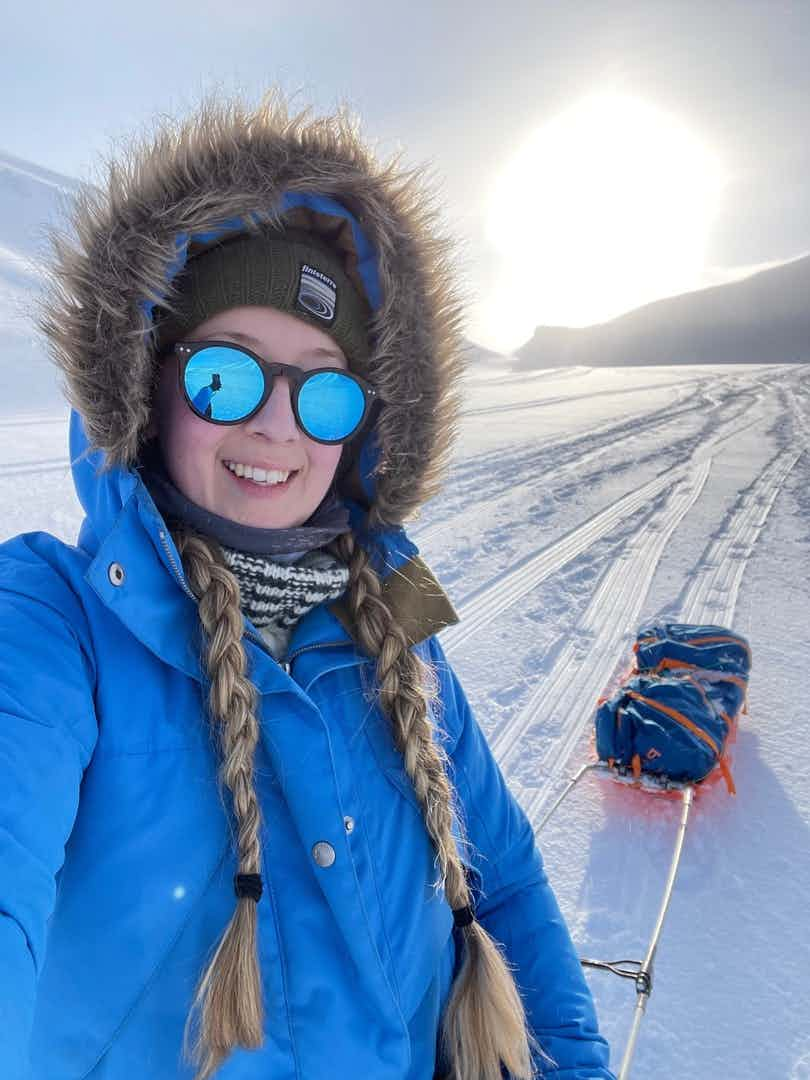
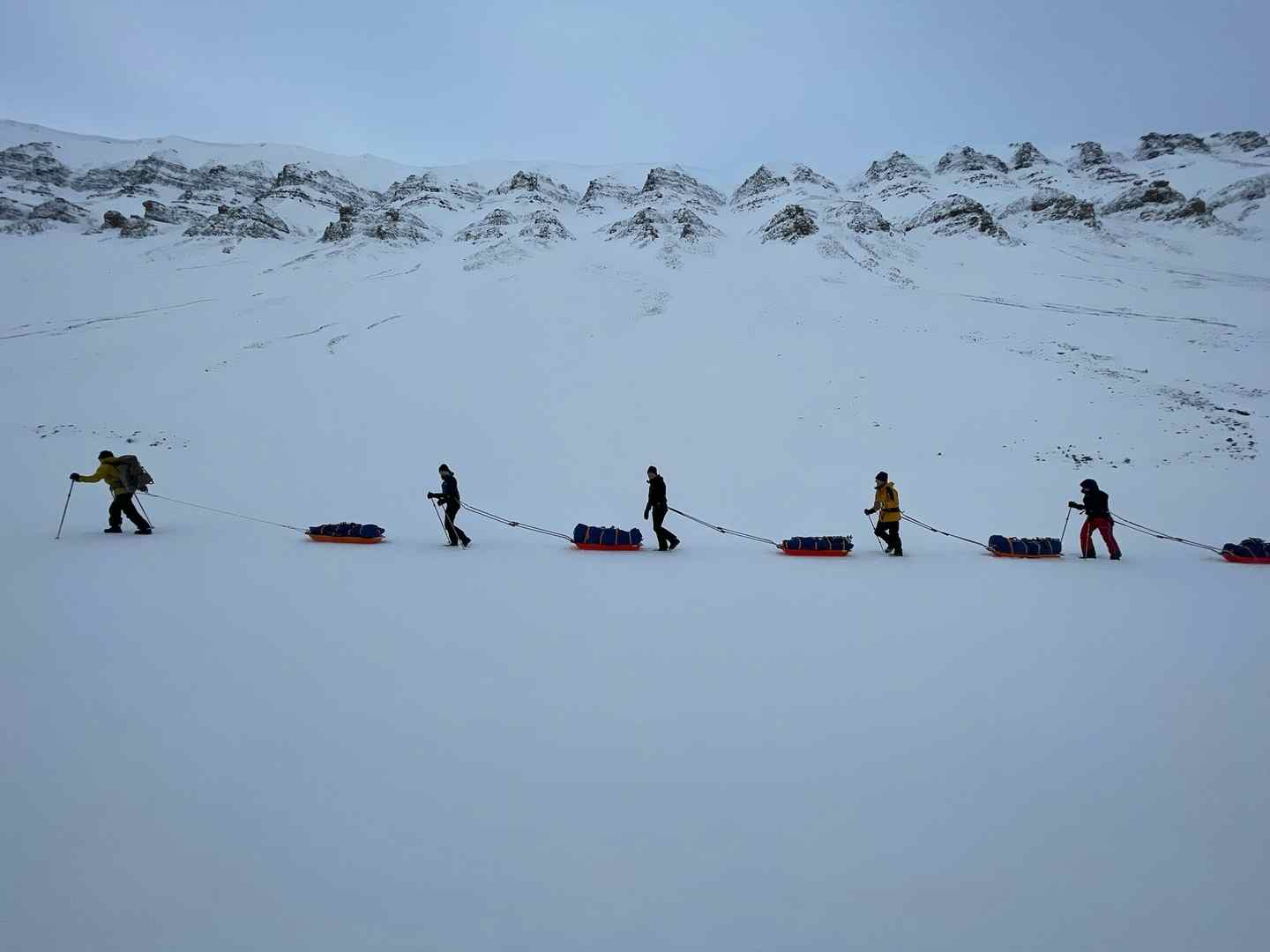
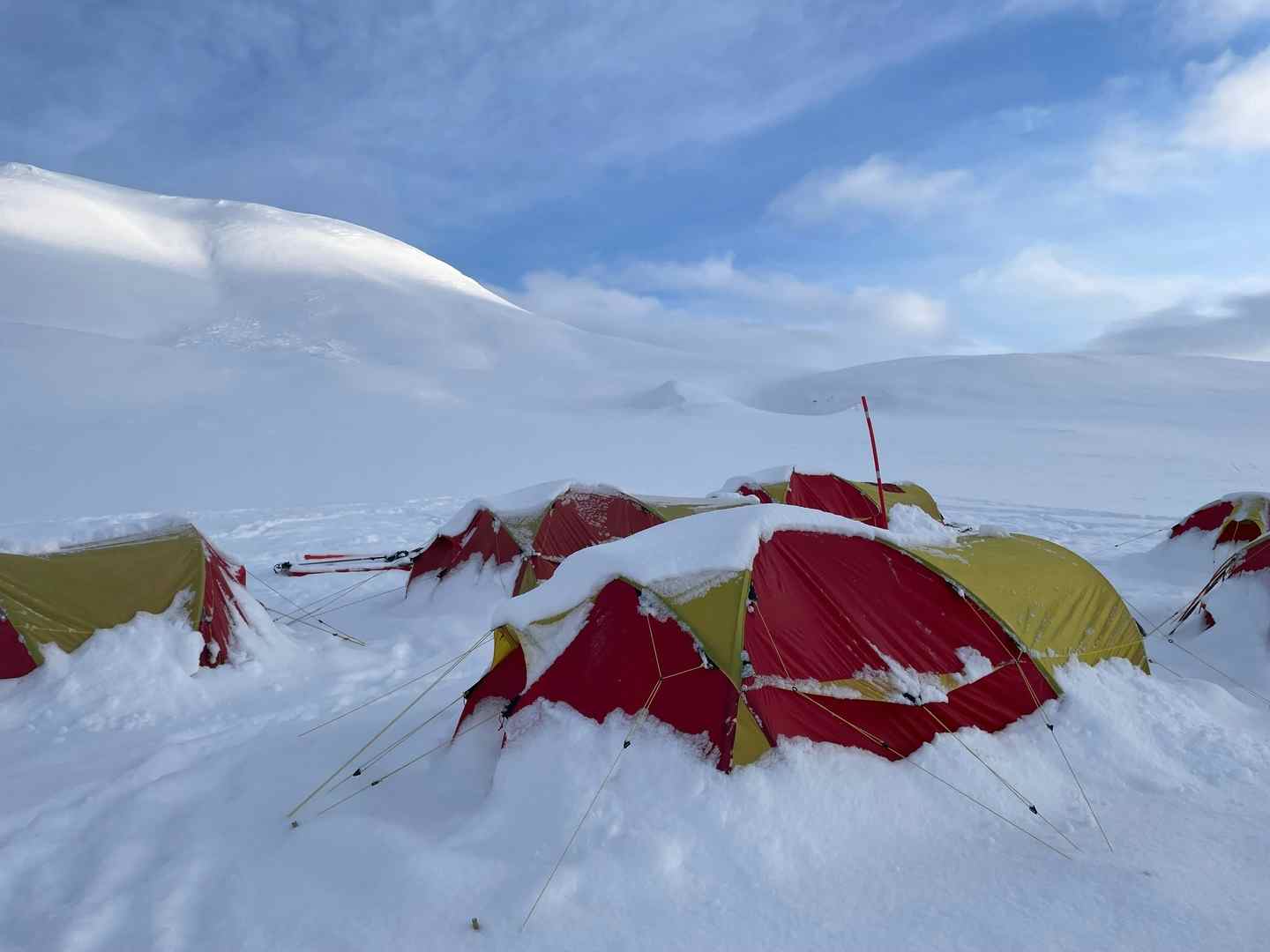
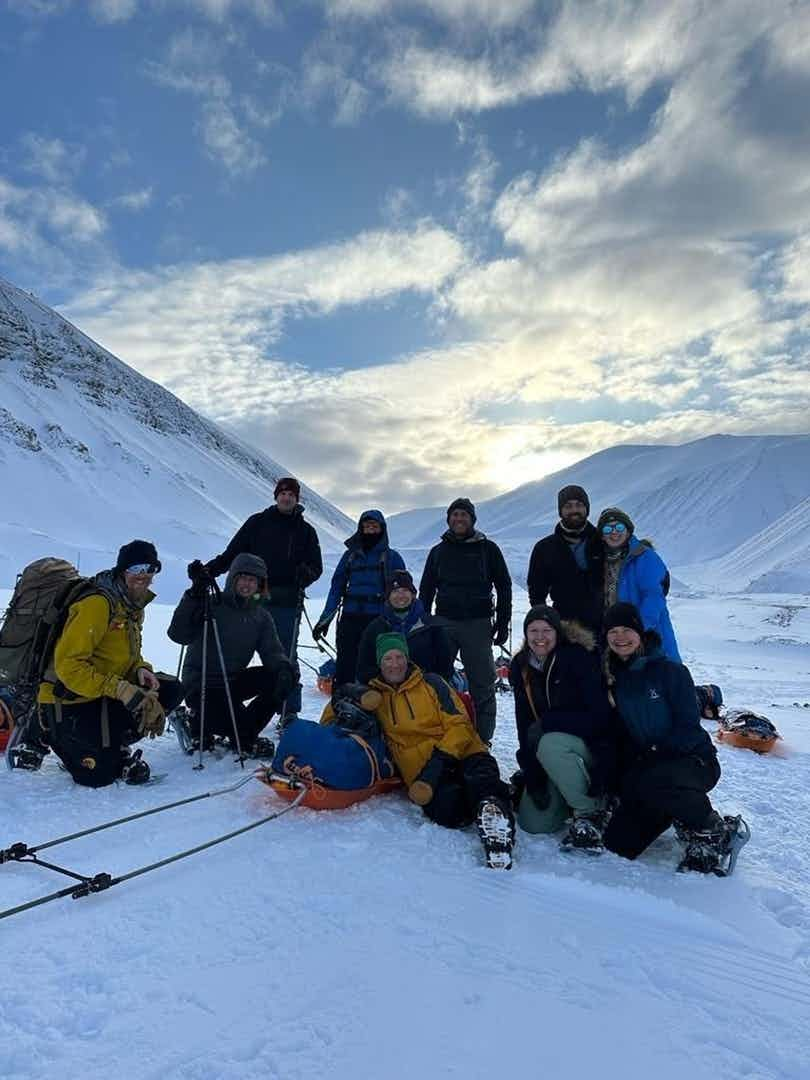
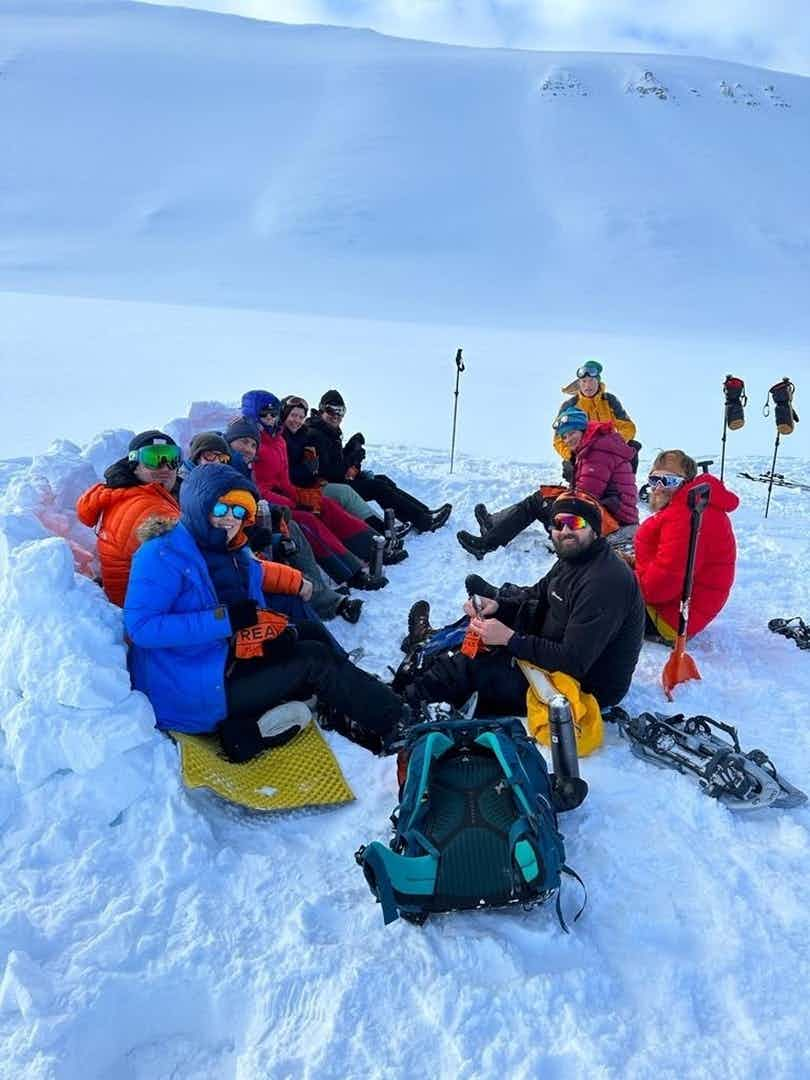
An incredible trip in an incredible location.
We had the most amazing guides and our group got on so well. A mix of couples and singles, it was brilliant.
The food was delicious, we never went hungry. We also really valued that stove in the communal tent!
It was one of the hardest things I've ever done, but also one of the best! I'd 100% do it again :)
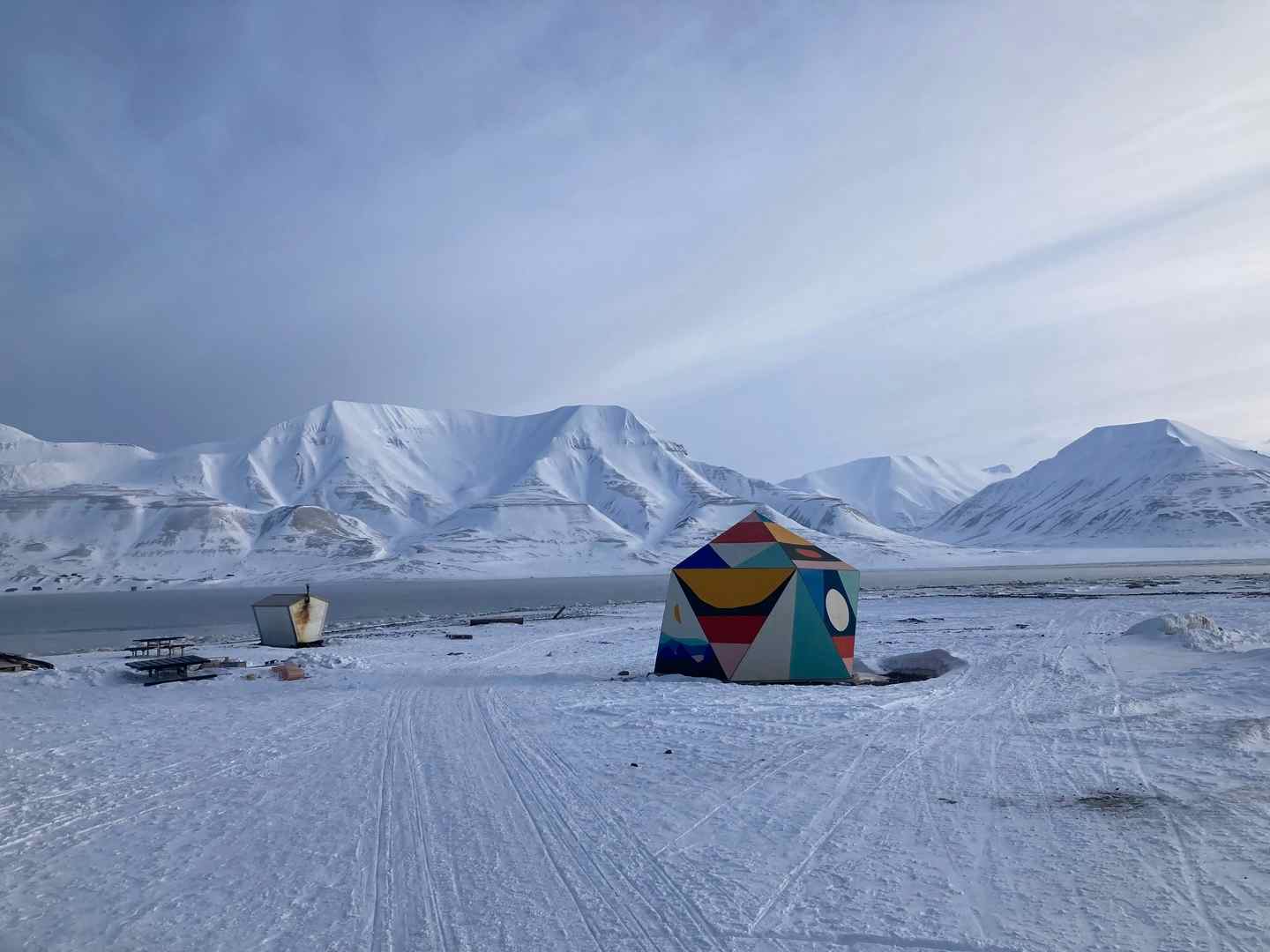
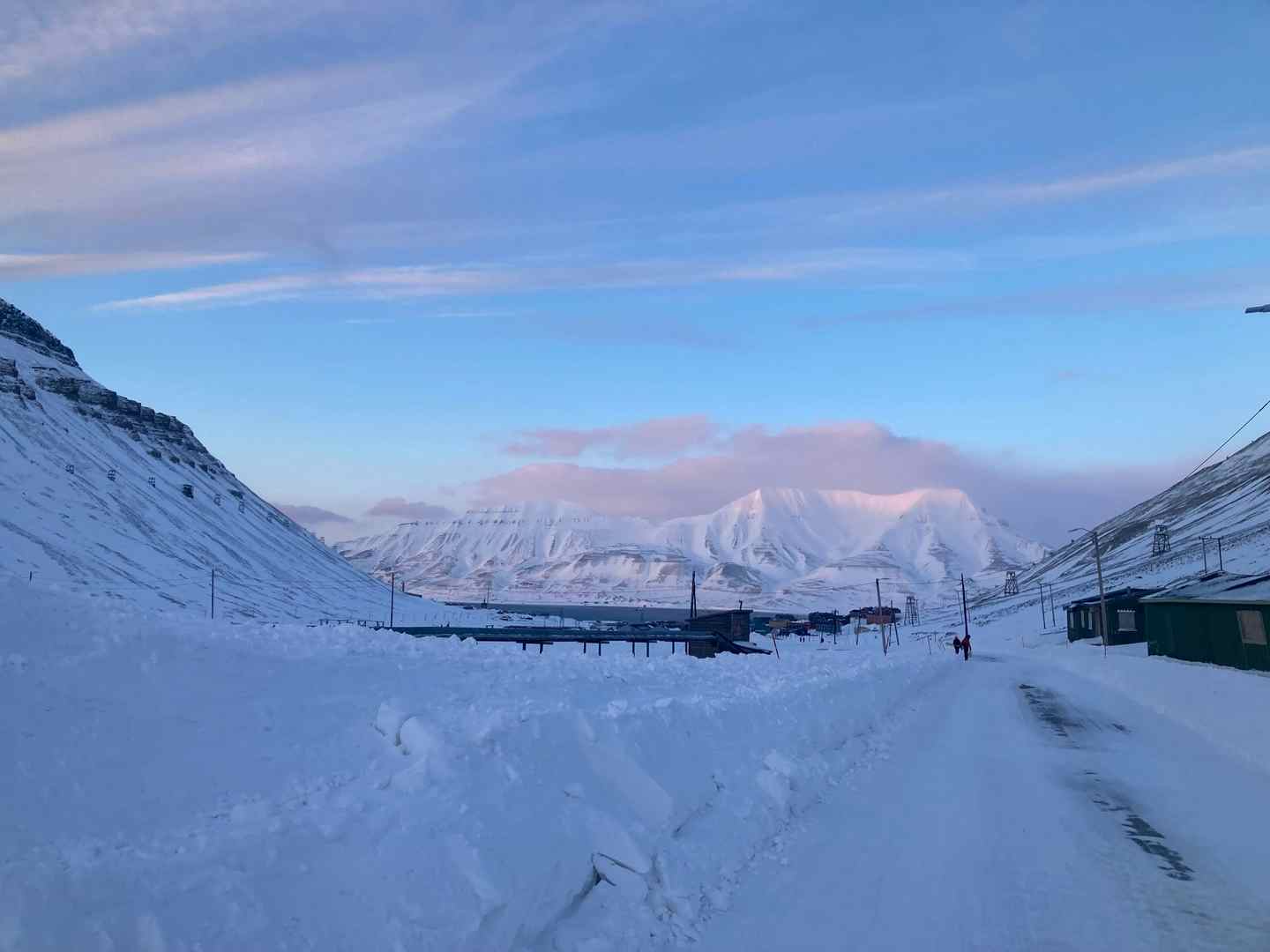
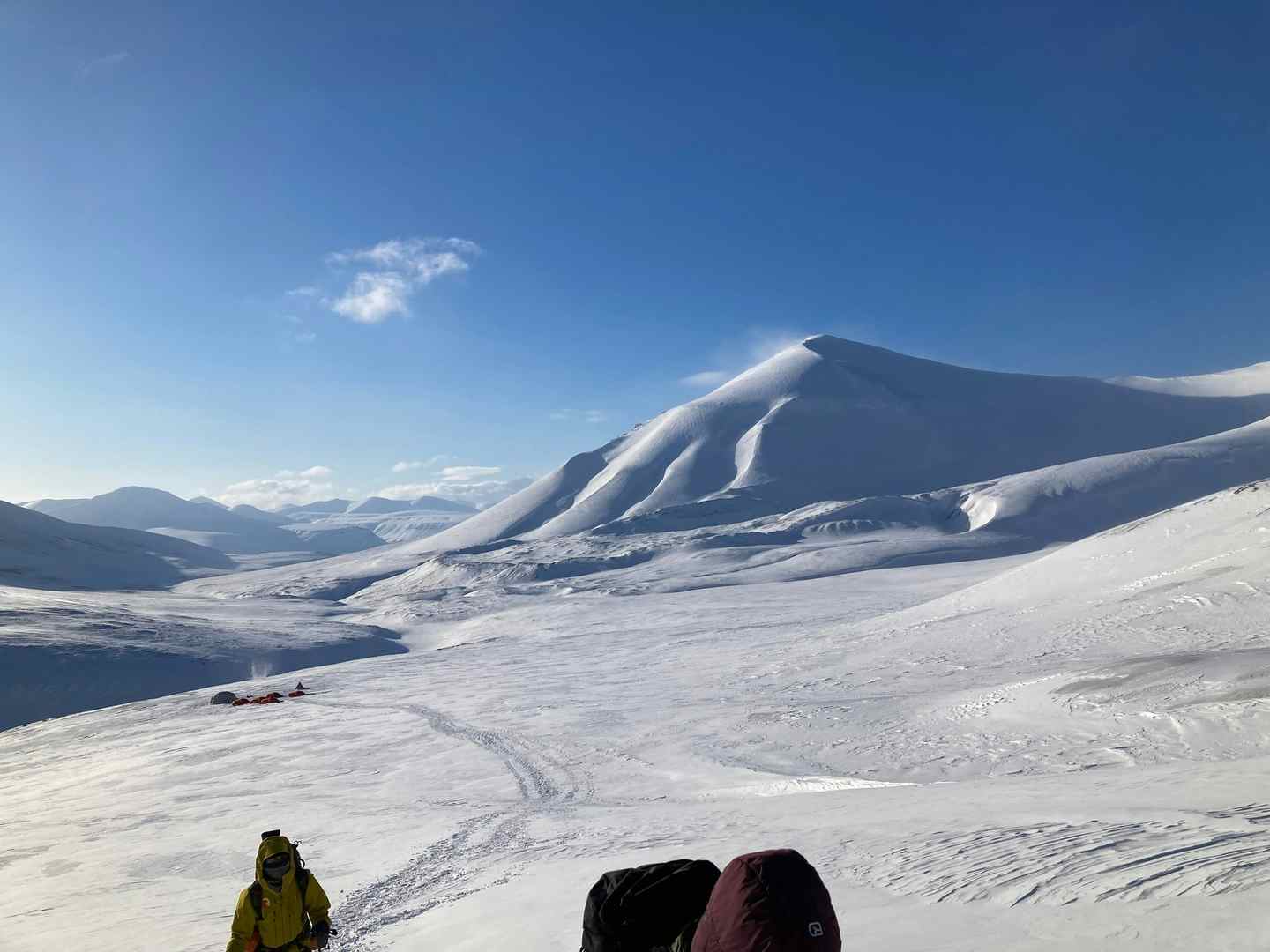
Svalbard was magical, this place is unlike anywhere else I've been and was a wonderful, challenging and inspiring experience. The camping expedition was definitely a challenge, you will be very cold at times and trying to get to sleep in sub-zero temperatures was tough but completing the expedition and hiking back into Longyearbyen with the stunning views surrounding made all of that worth it! My best tips would be to pay close attention to the kit list, bring hand/foot warmers and listen to the guides advice. If you need better clarity on what to bring then contact the guides through the booking system.
Fabulous trip. The guides Eva and Niclas were knowledgeable, approachable, hard working and great fun. I found the experience was much easier than expected, in part due to their level of preparation and the benign weather. My suggestion would be to make it a 4 day trip and use the snowmobile trip to see if everyone is kitted out correctly. If necessary the ice cave trip could be an add on.
Exploring Svalbard on foot and snow mobile was an amazing experience. The monochrome landscape is surreally beautiful and the relaxed arctic camp life in harmony with nature is a great opportunity to reset and fully focus on the experience of this trip.
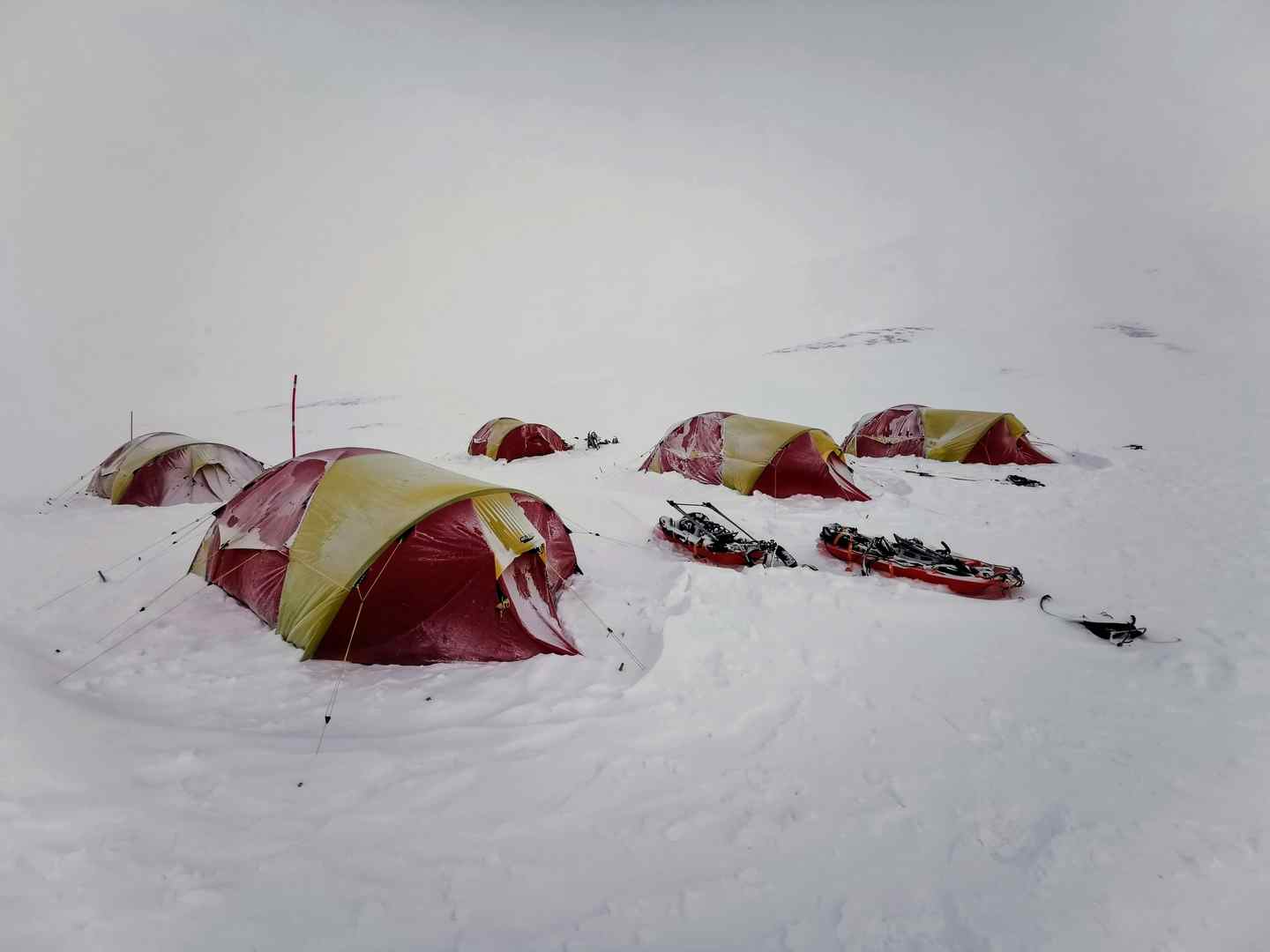
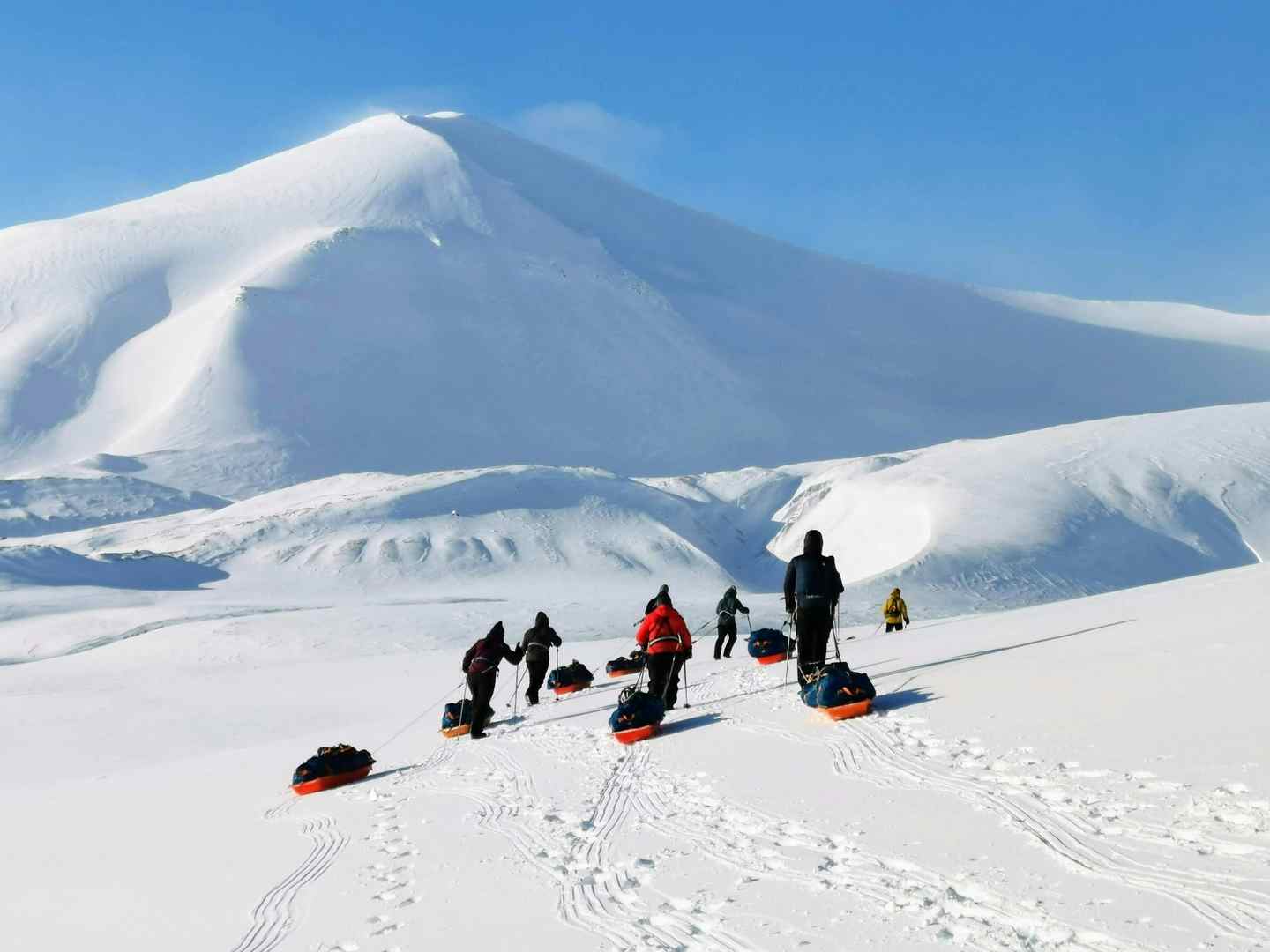
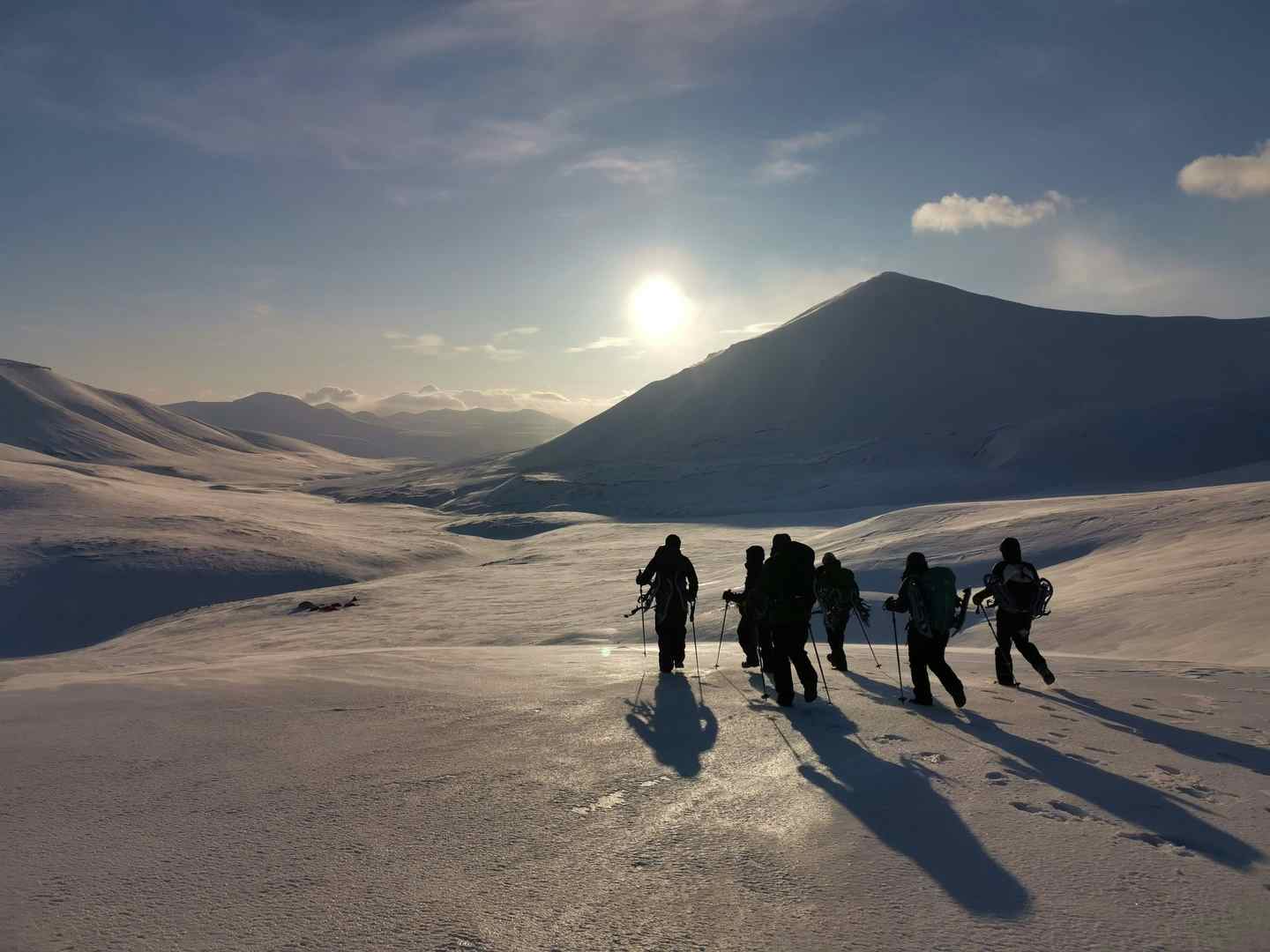
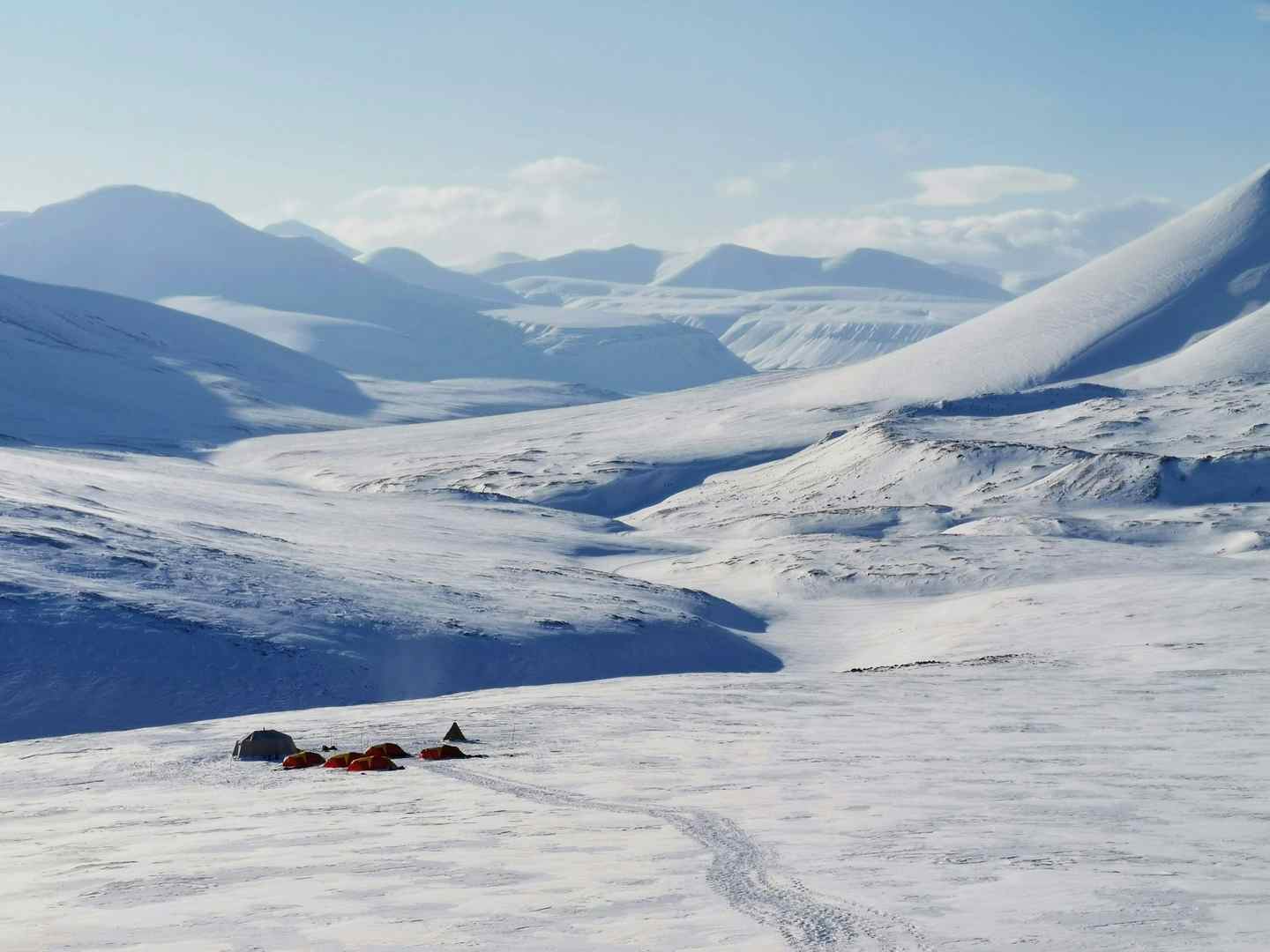
An incredibly unique adventure that was challenging but also enormously fun and inspiring! The local guides were exceptional both in terms of their knowledge and energy and in ensuring the group's safety at all times. Nothing compares to the experience of dragging your pulka through the deep snow, sleeping under canvas in the sub-zero conditions, and circling the camp in the dark on polar bear watch. The day trips to the ice caves and the fjords via snowmobile were also incredible. You definitely need to come prepared to face the tough conditions, both mentally and physically, but the rewards are great!
Absolutely incredible trip. The local guides are fantastic and the ice caves, camping/hiking and the snow mobiling were all brilliant. Camping in the Arctic is an amazing experience but is definitely not for the faint hearted!
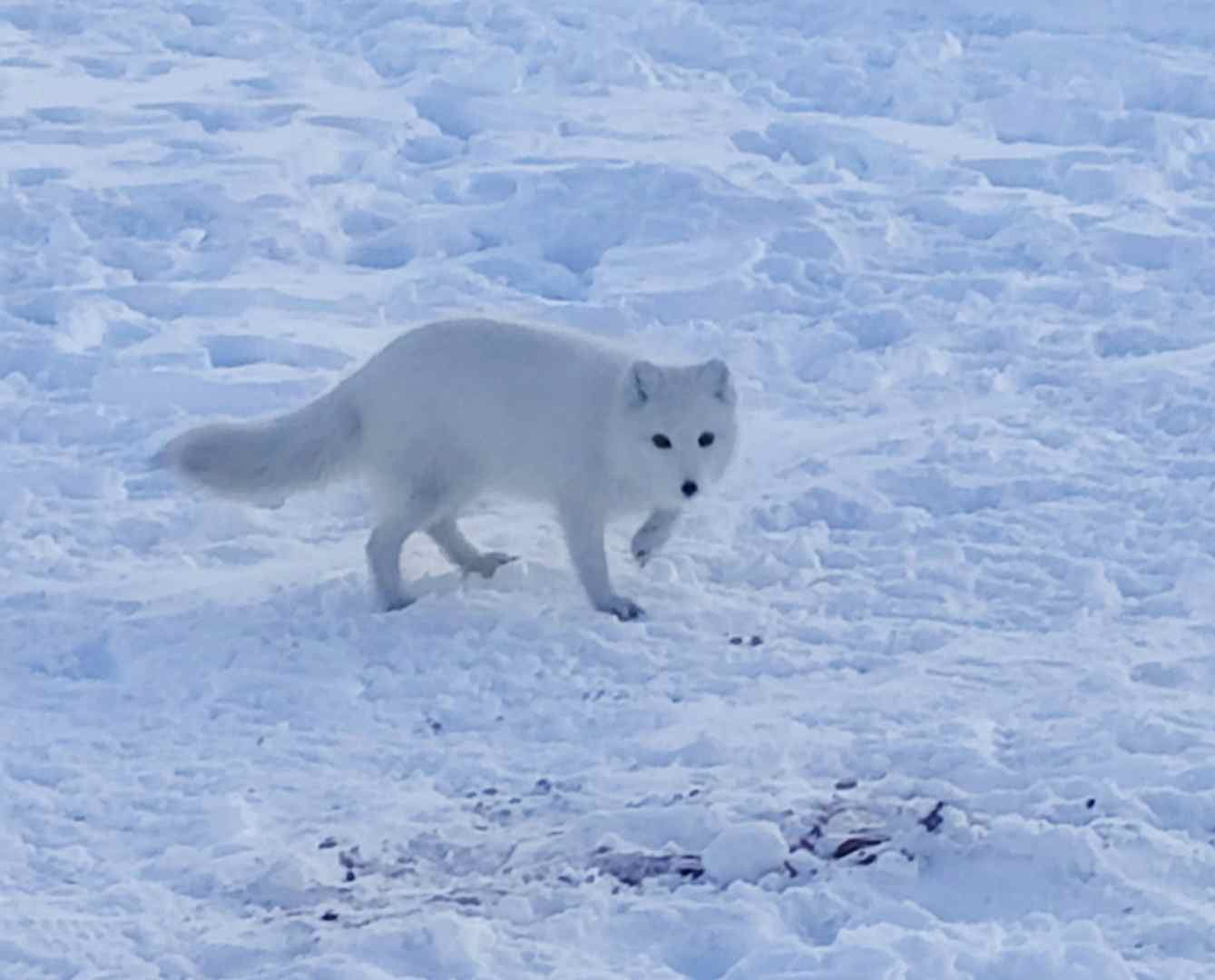
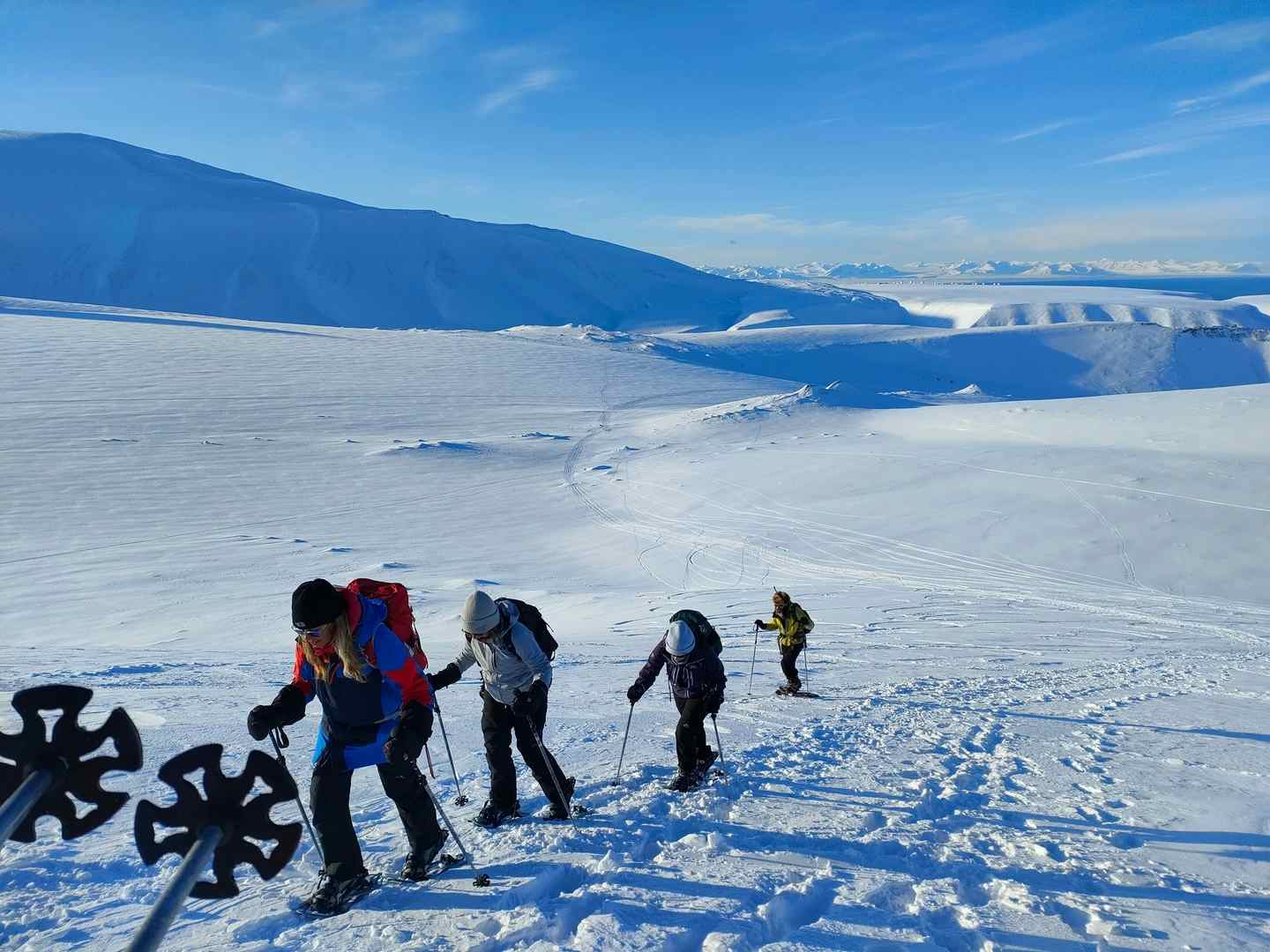
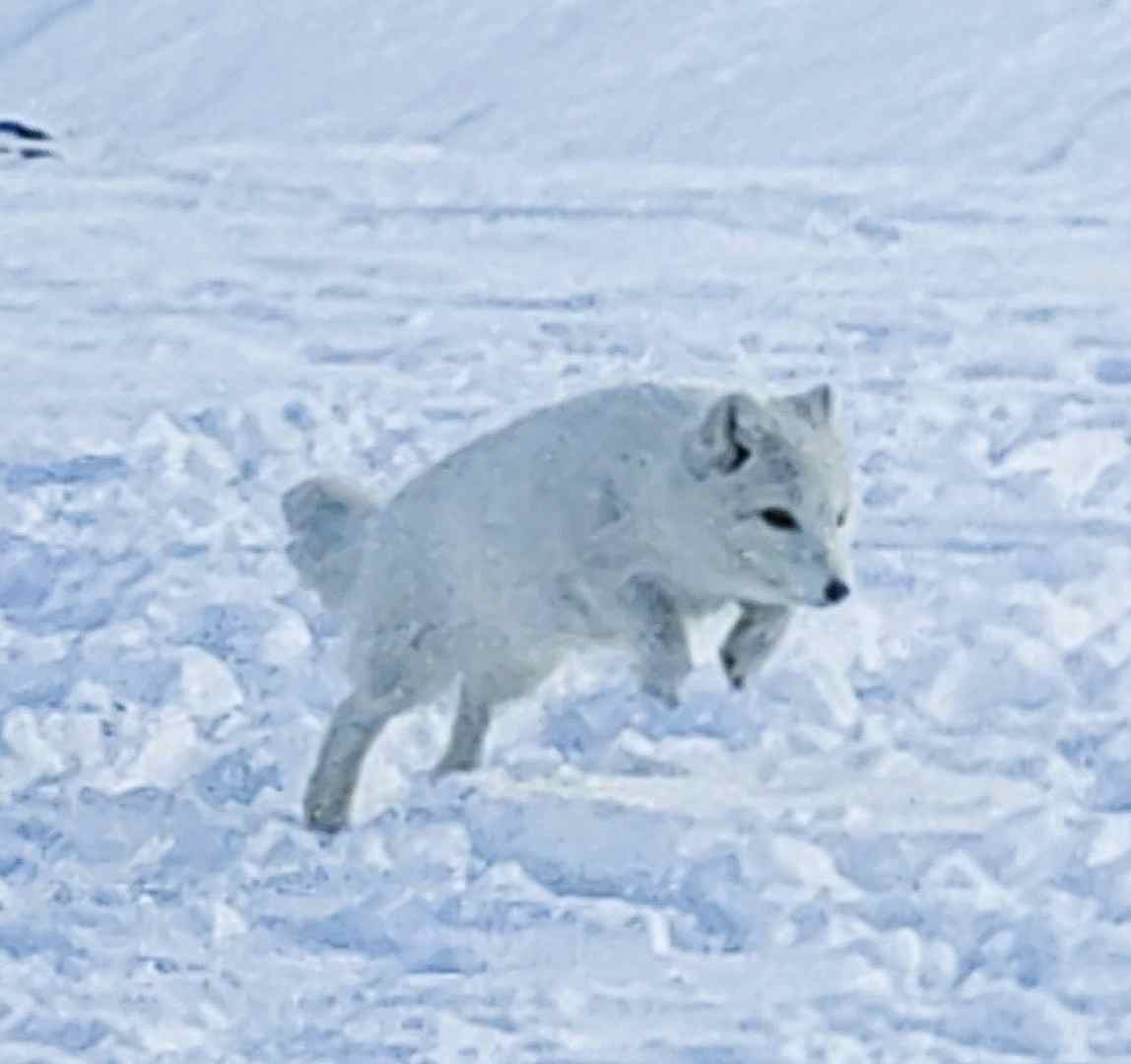
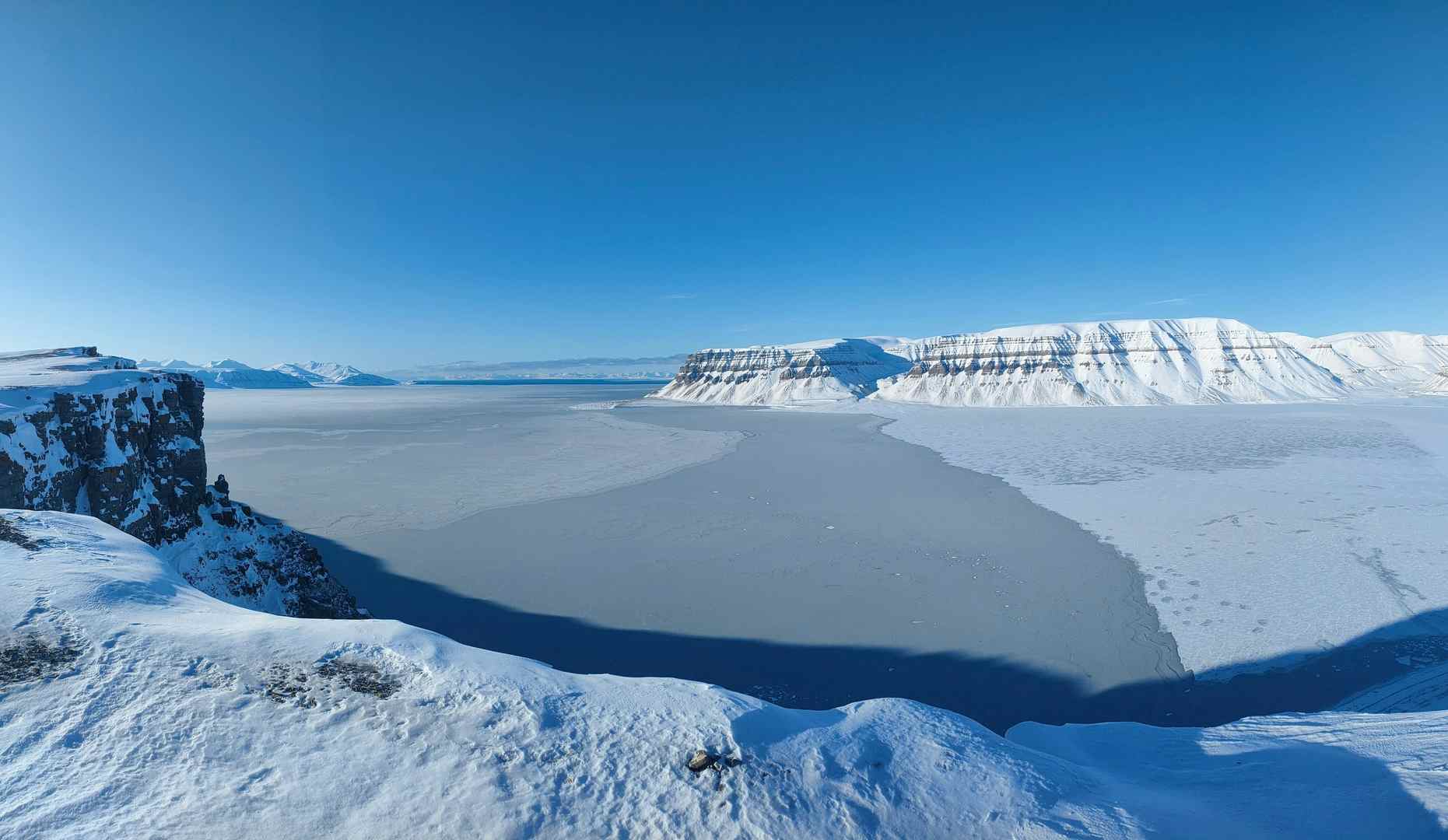
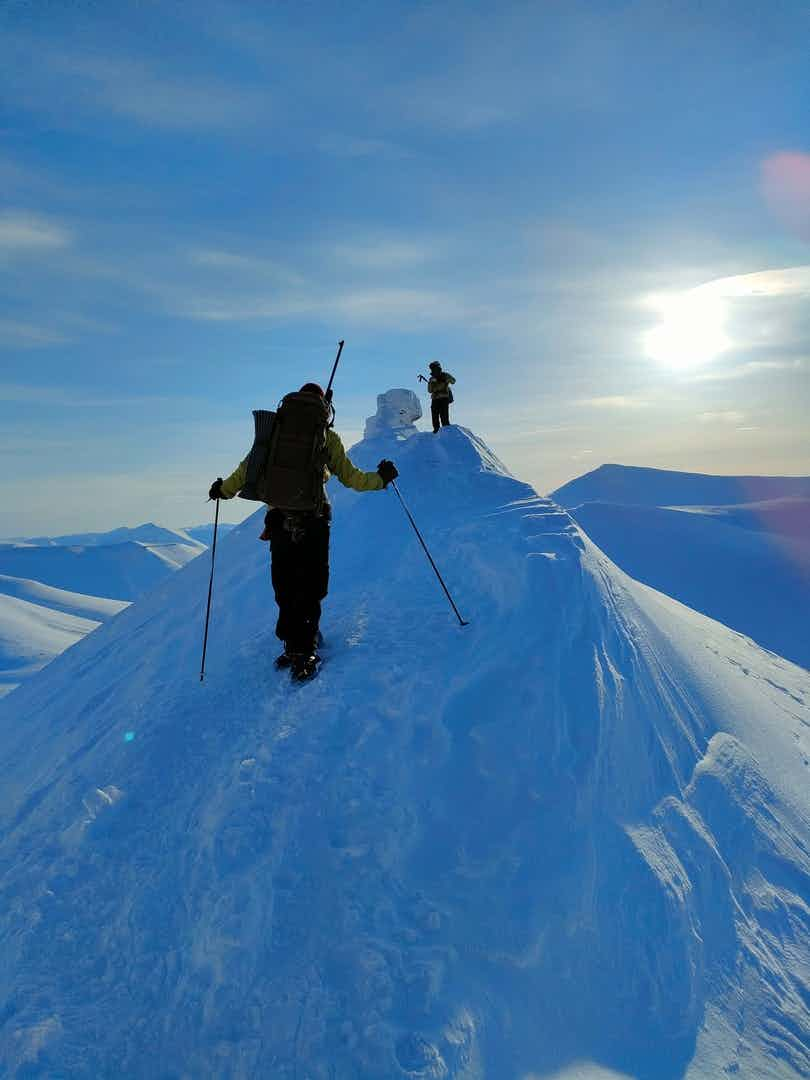
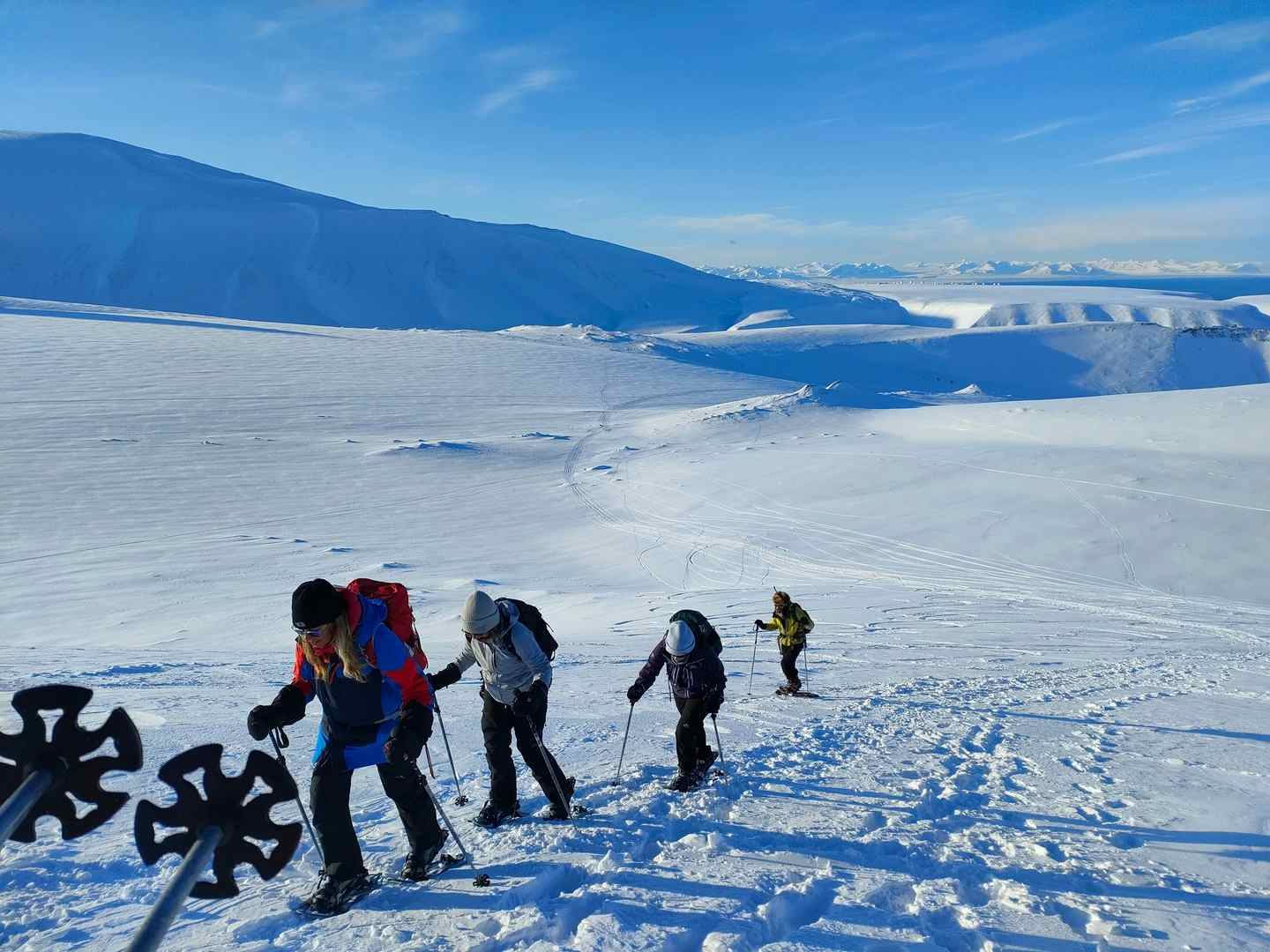
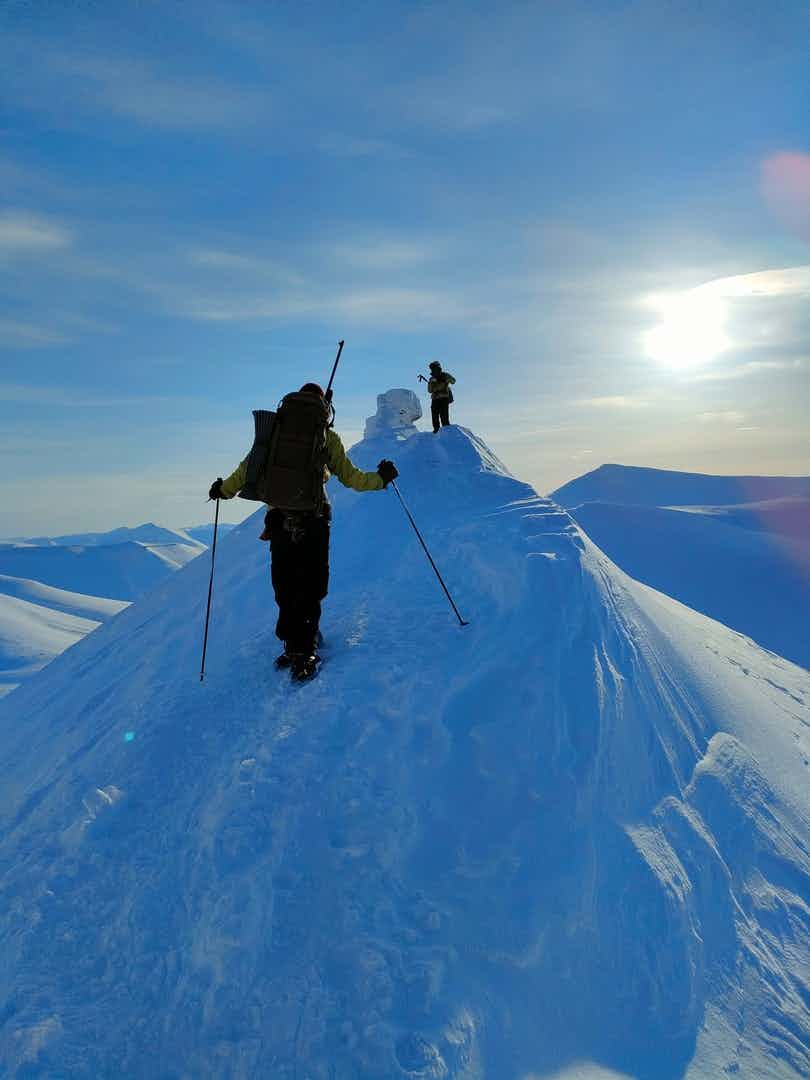
A life changing trip of childhood dreams that delivered in every way possible and more than I could have ever have imagined.
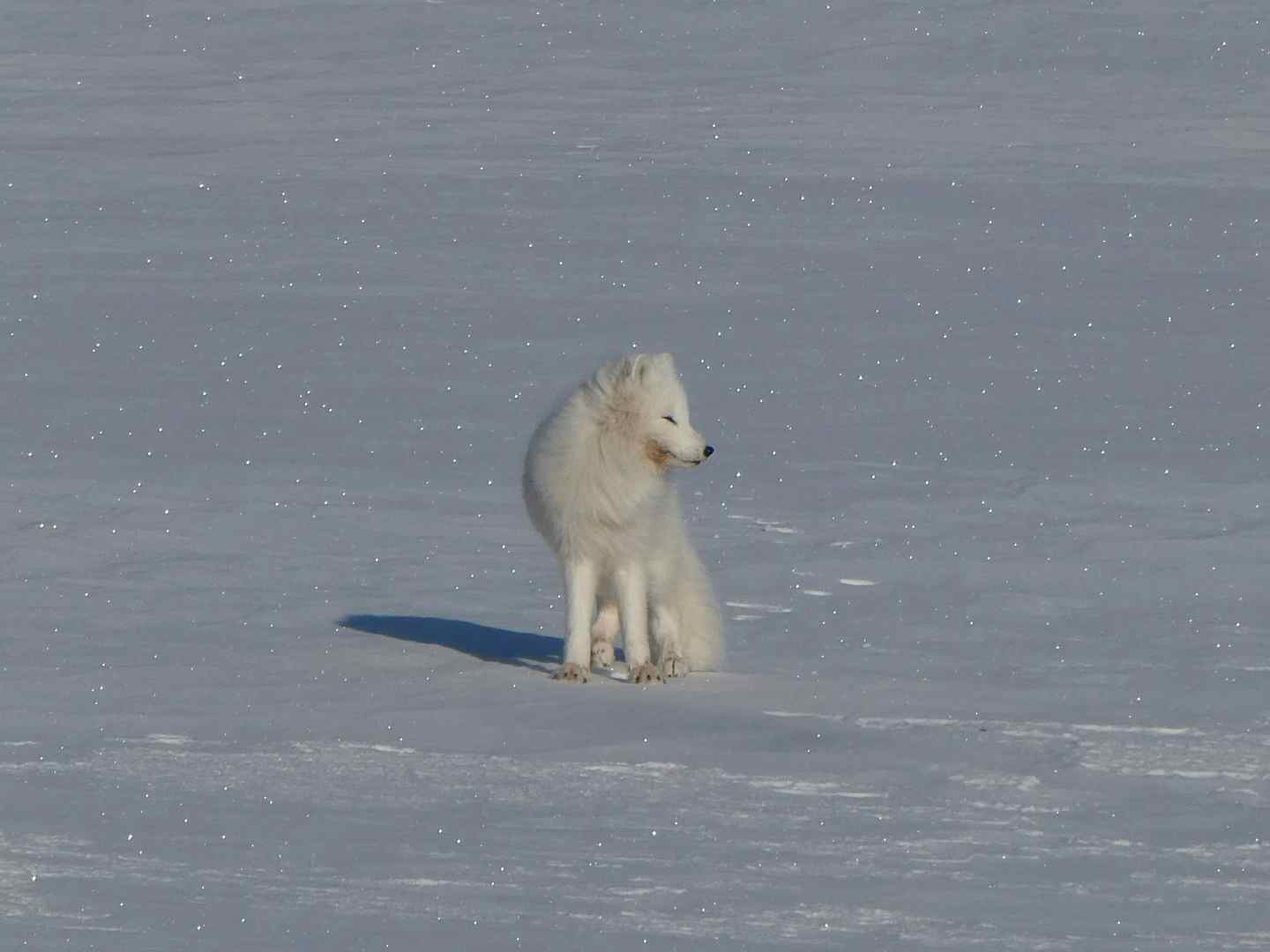
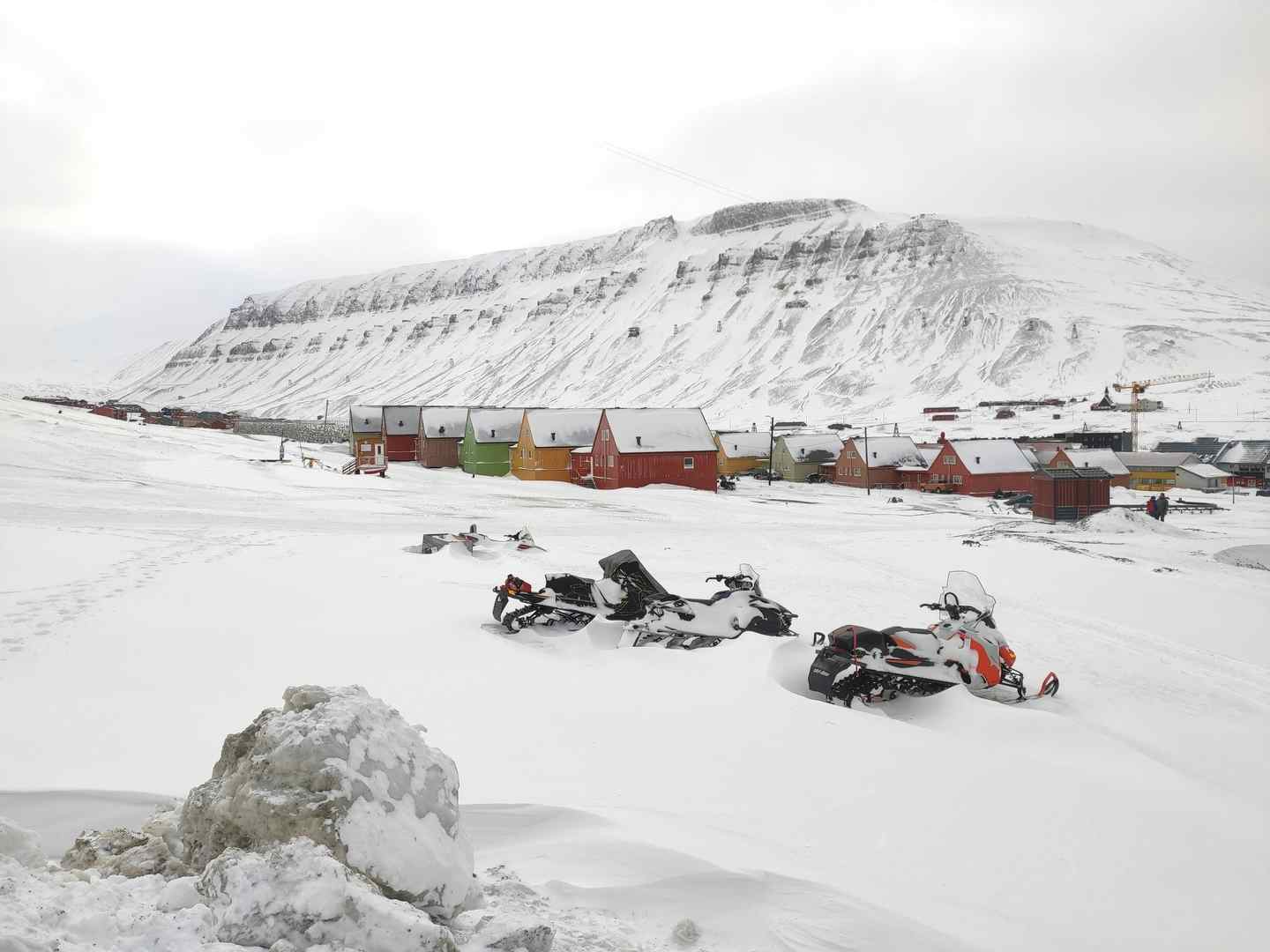
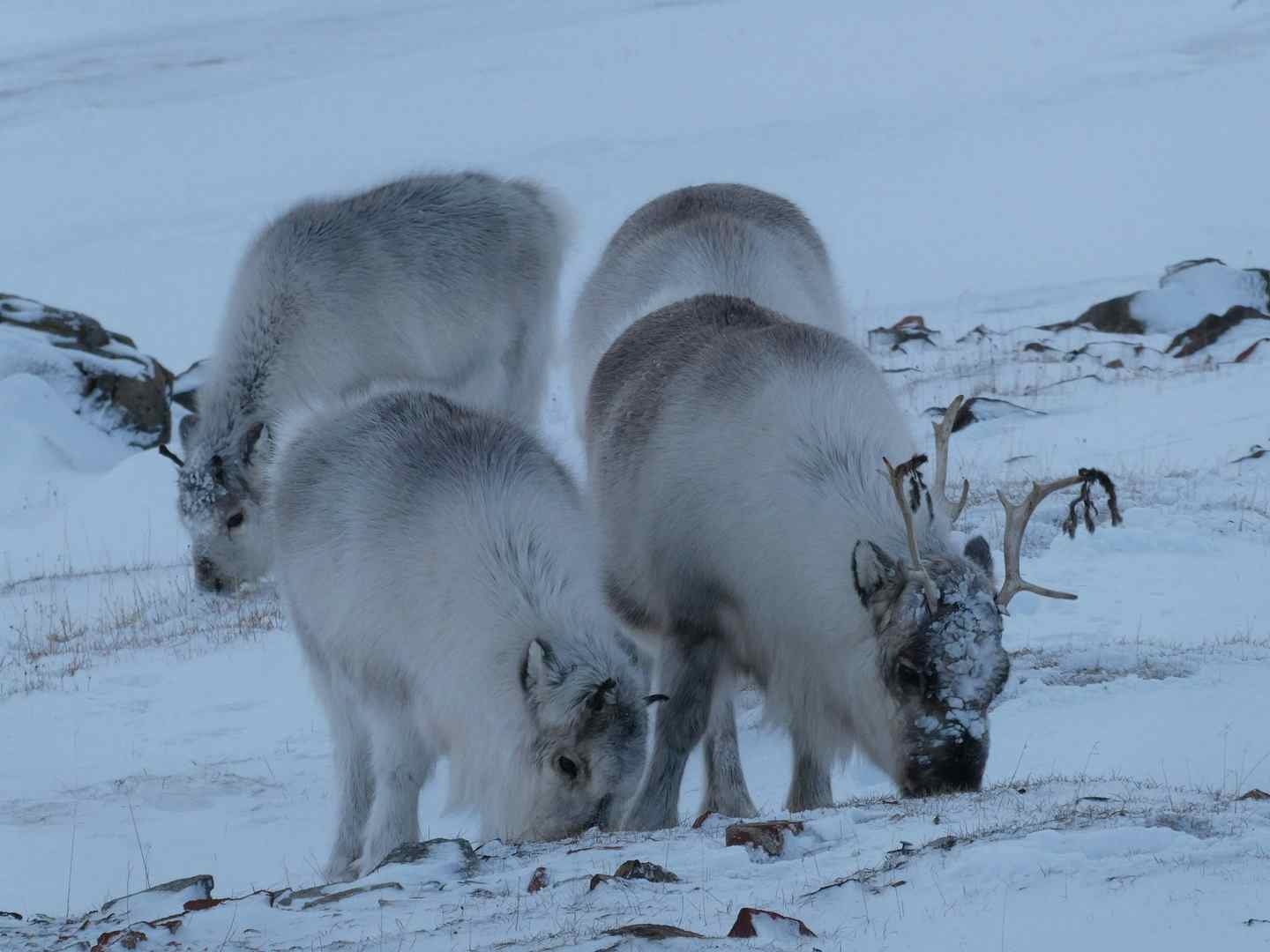
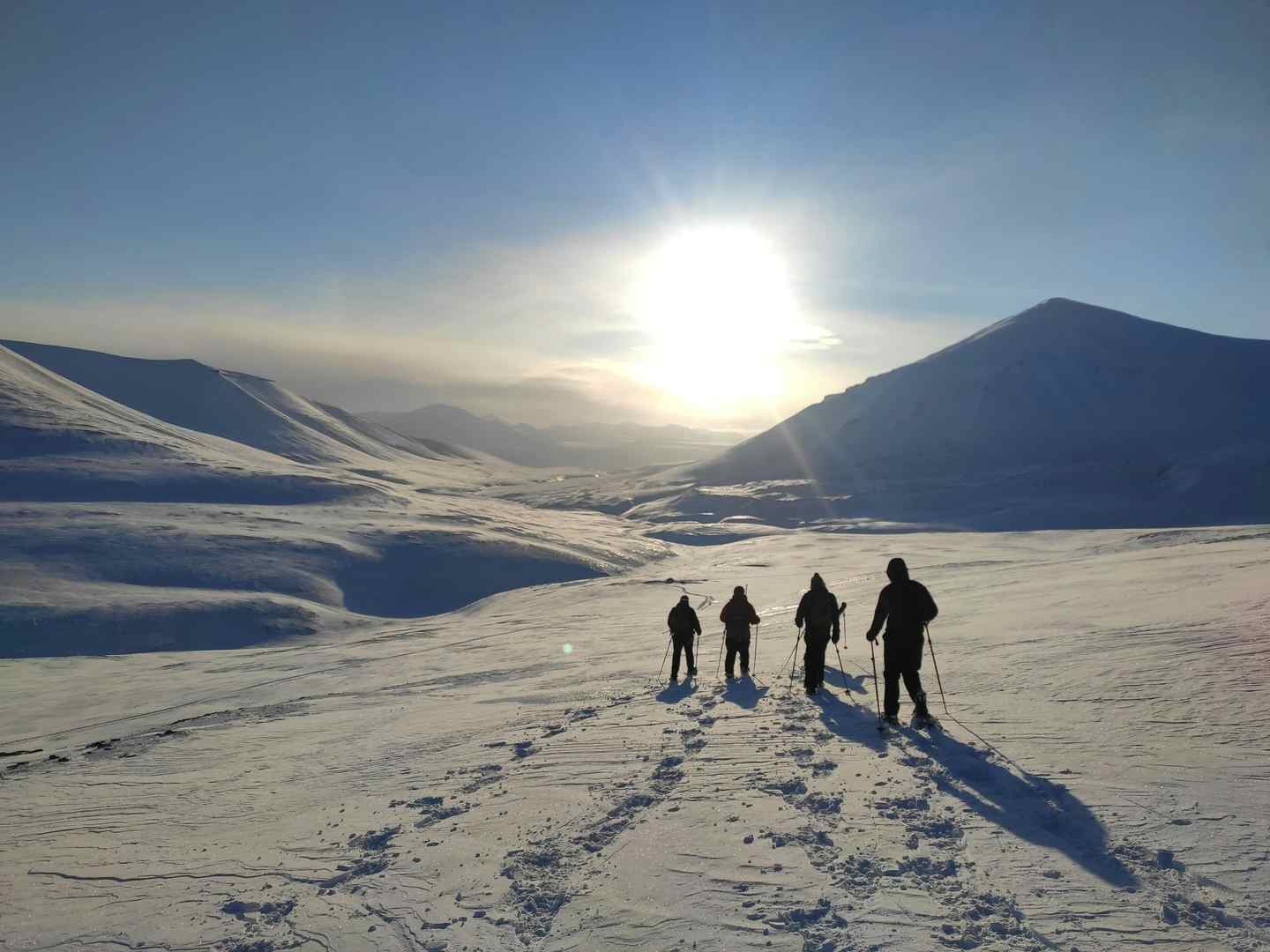
Svalbard is a beautiful and spectacular place and this MBA trip allows you to experience the very best of it. I've been dreaming of visiting Svalbard since I was a boy, and this tour fulfilled every hope and expectation - and more!
What an amazing experience! I can't recommend it enough. There are not words I can find to describe how stunning the scenery in Svalbard was. There were so many highlights but just a few included- the polar bear watch overnight, seeing the northern lights and the snowmobile trip. All the guides were excellent and the other guests were all great company too and we had a lot of laughs!
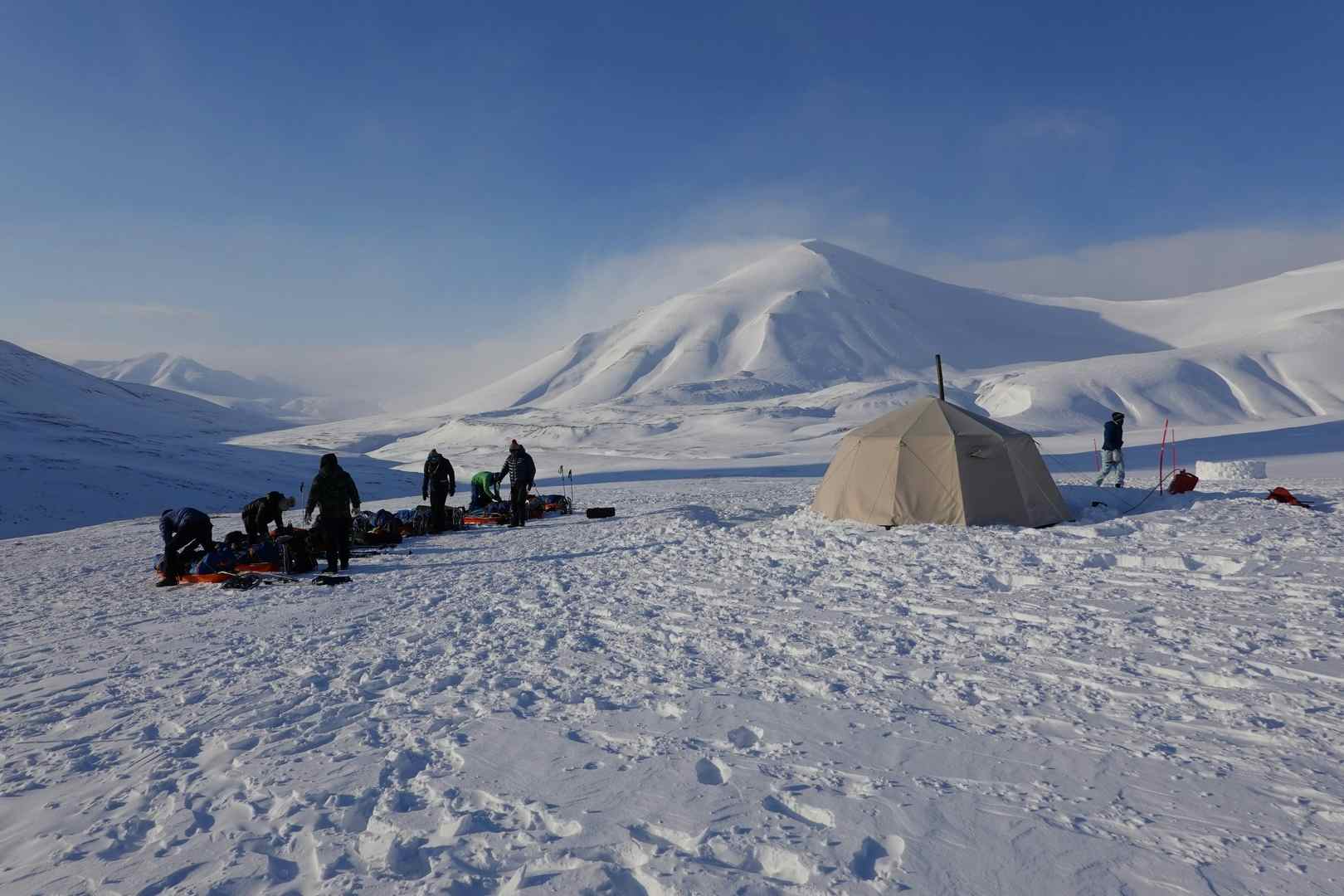
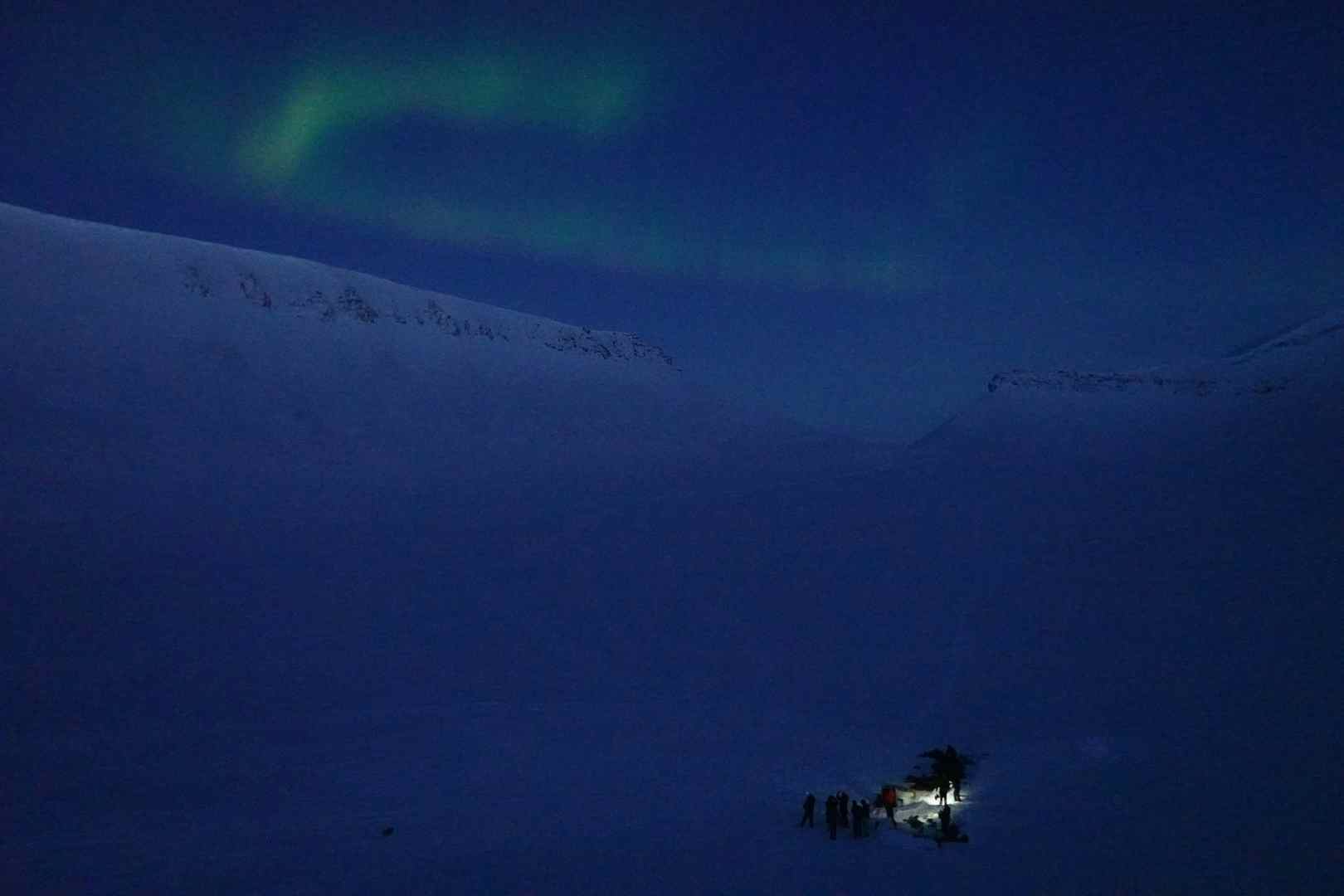
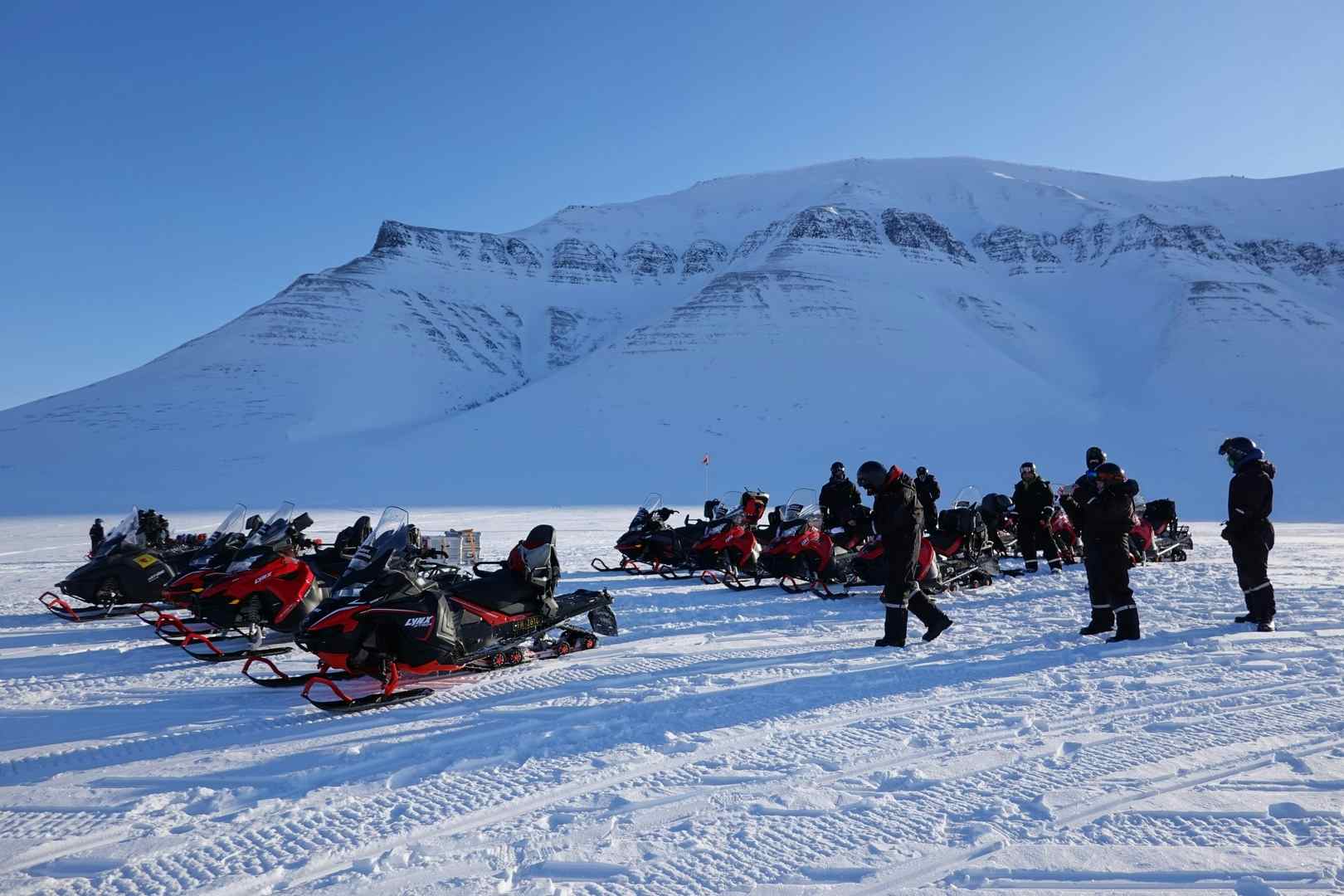
Brilliant trip, really enjoyed the scenery and remoteness. Guides were exceptional. Highlight was the snowmobile day to finish the week off perfectly. Kit list could be a bit clearer and worth mentioning a driving license is required for the snowmobile.
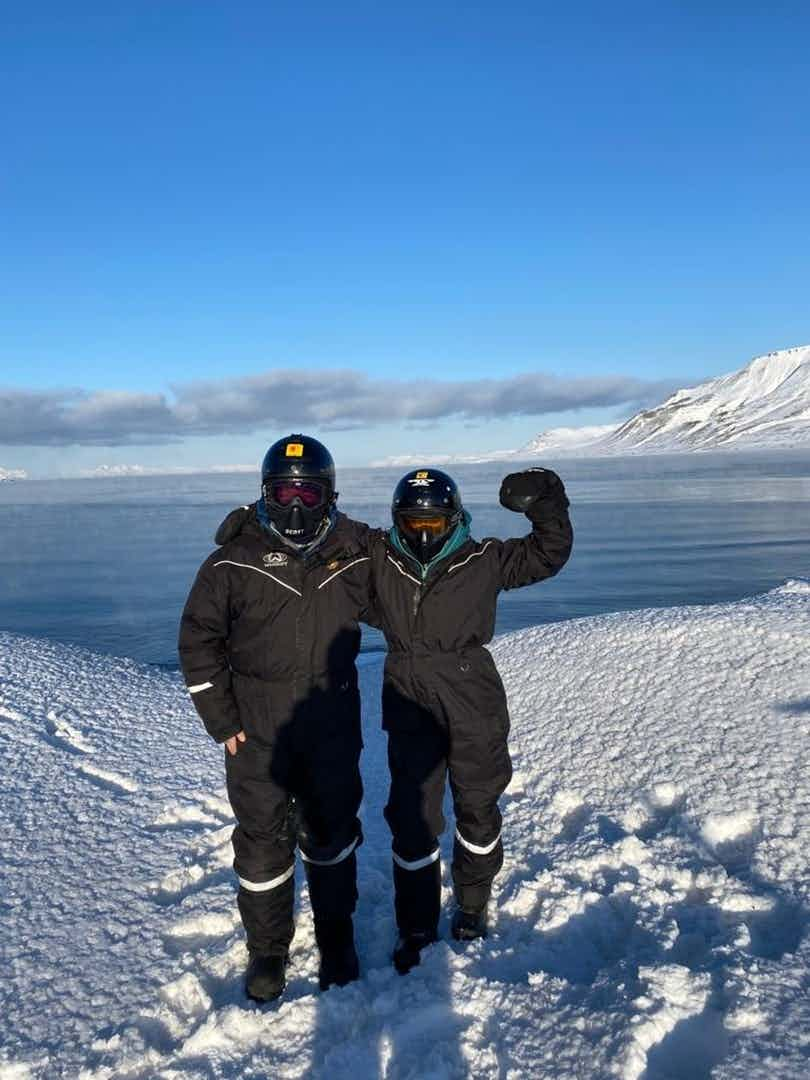
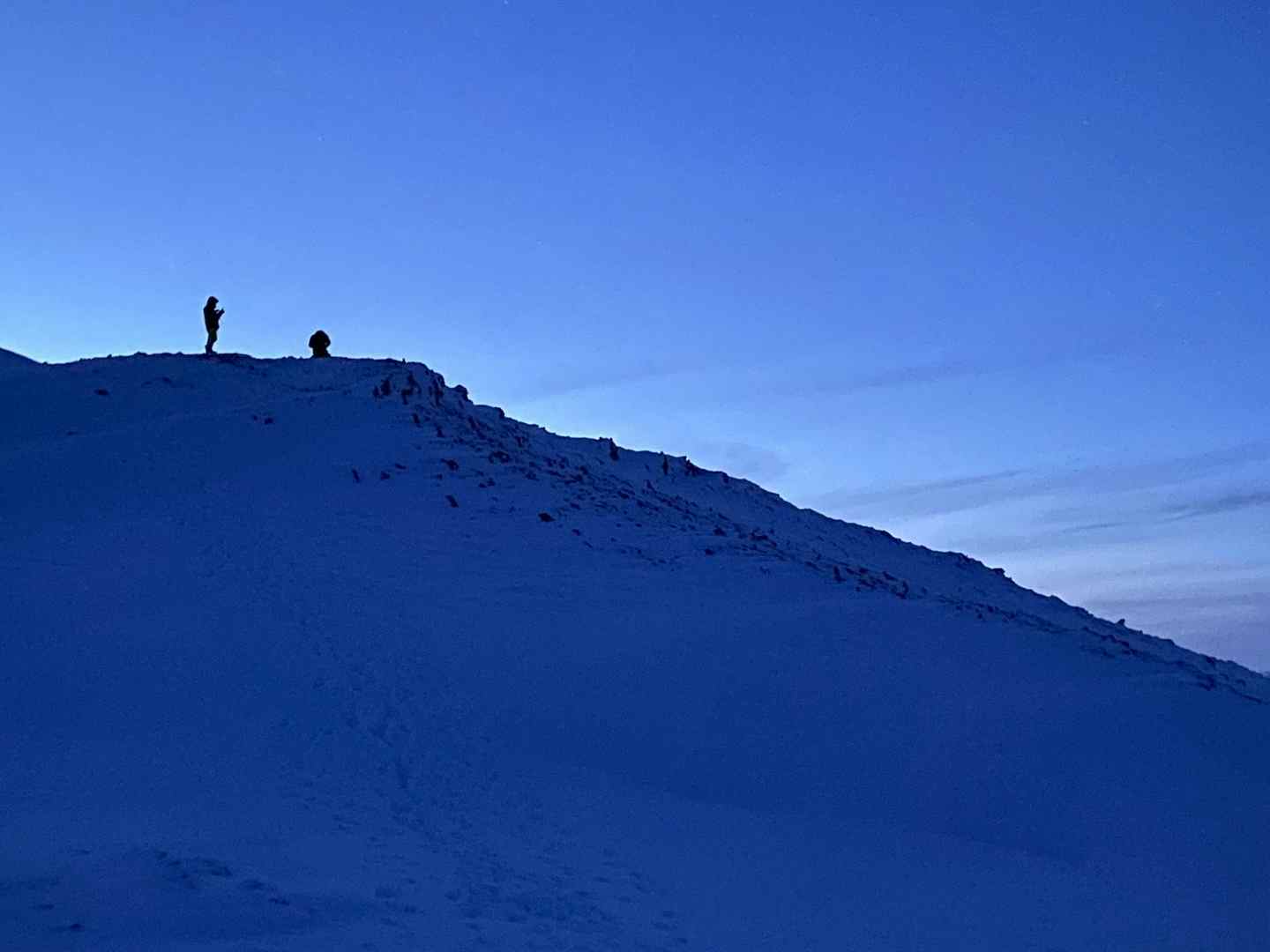
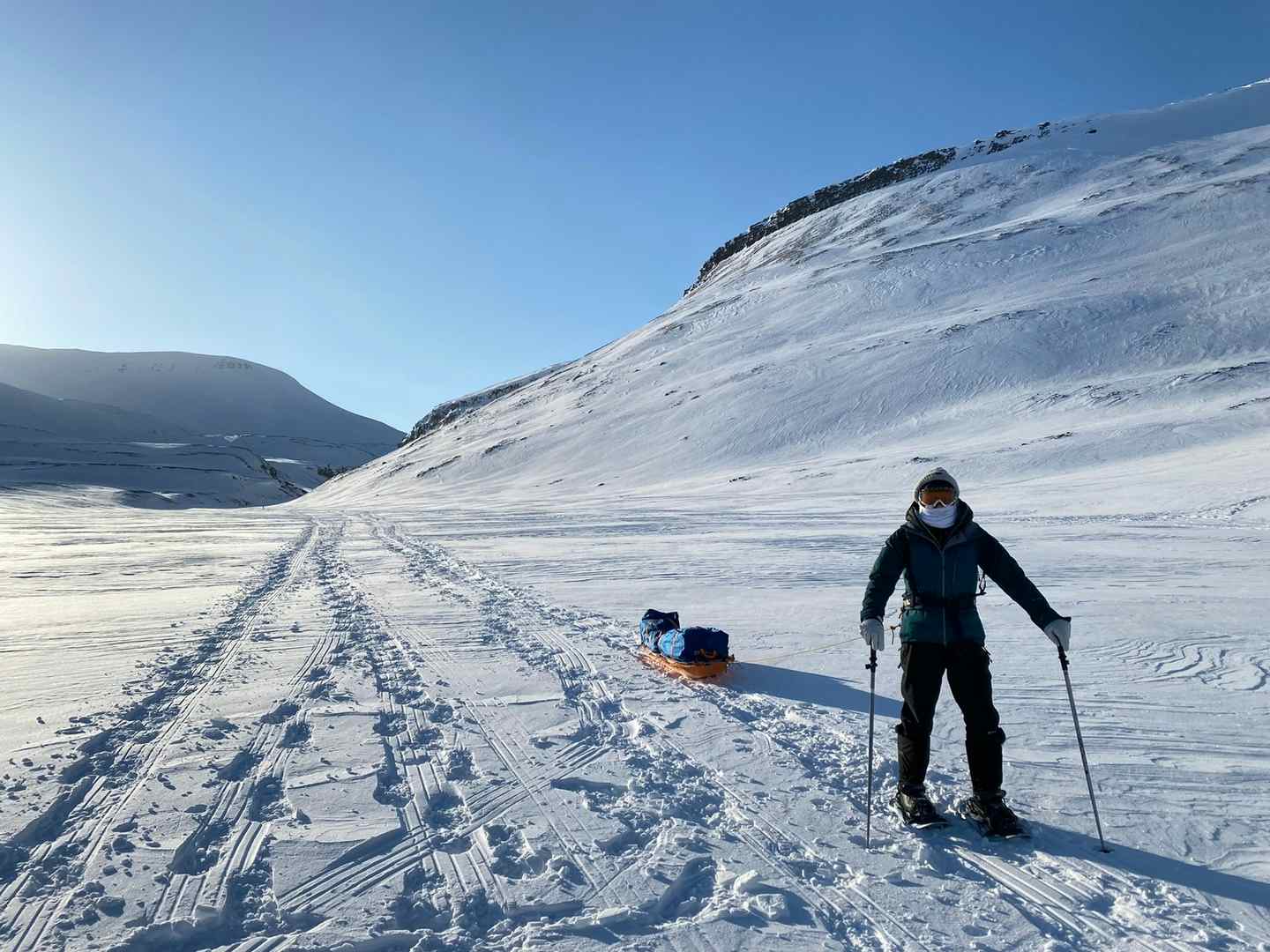
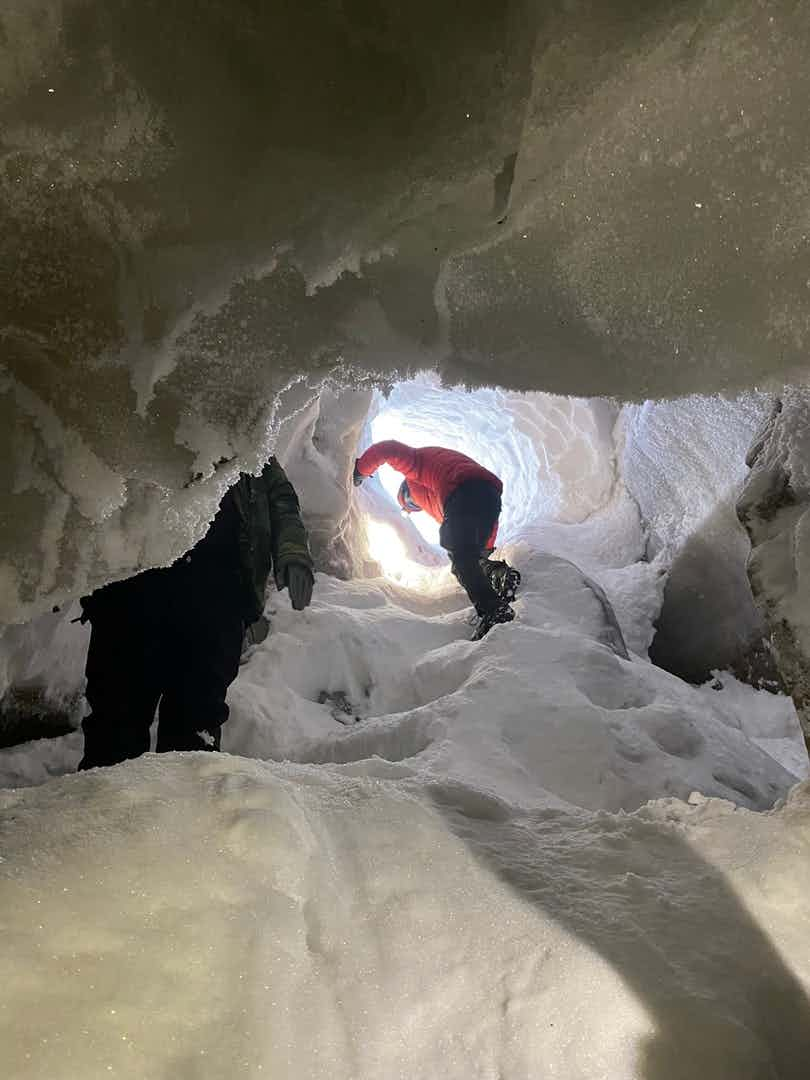
One of my best experiences ever. Unique and spectacular island. Knowledgeable, amusing and unflappable guides. Two day camping was tough in the cold but an amazing adventure, as was the whole trip. Do it!
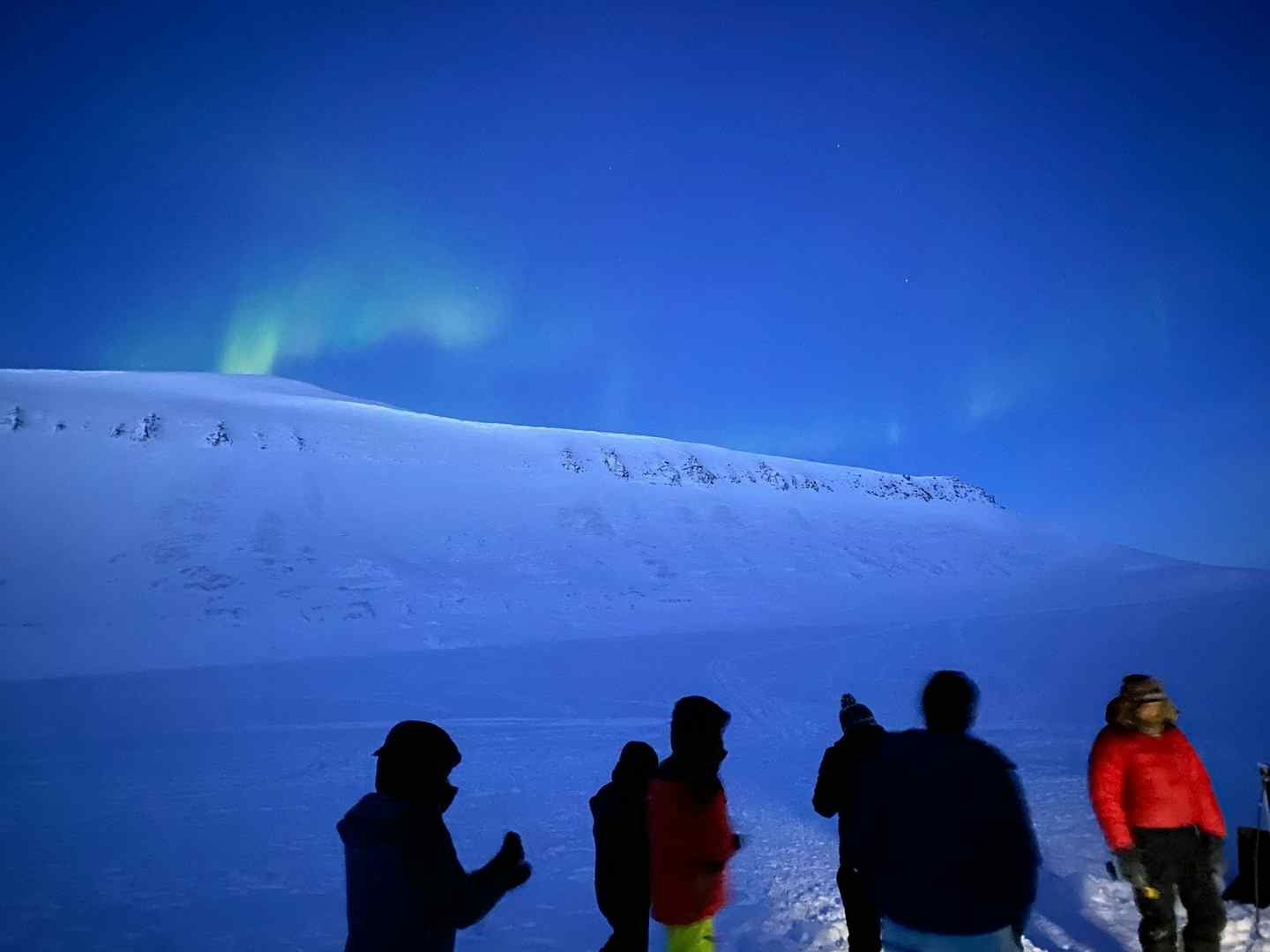
Amazing trip and place, the guides were brilliant (even the grumpy hiking husky)! Like no where we have ever been.
This trip was the best experience of my life to date. Exceptional from start to finish with some nice little unexpected surprises thrown in that kept us with a huge smile on our face the whole way around. The group were a great laugh, which really put the icing on the cake. Two particular experiences will stick in the mind forever - standing out on polar bear watch in the middle of the night soaking in the majesty of the scenery; and observing the Northern Lights dancing flirtatiously over a nearby mountain before we descended into an ice cave to sleep for the night.
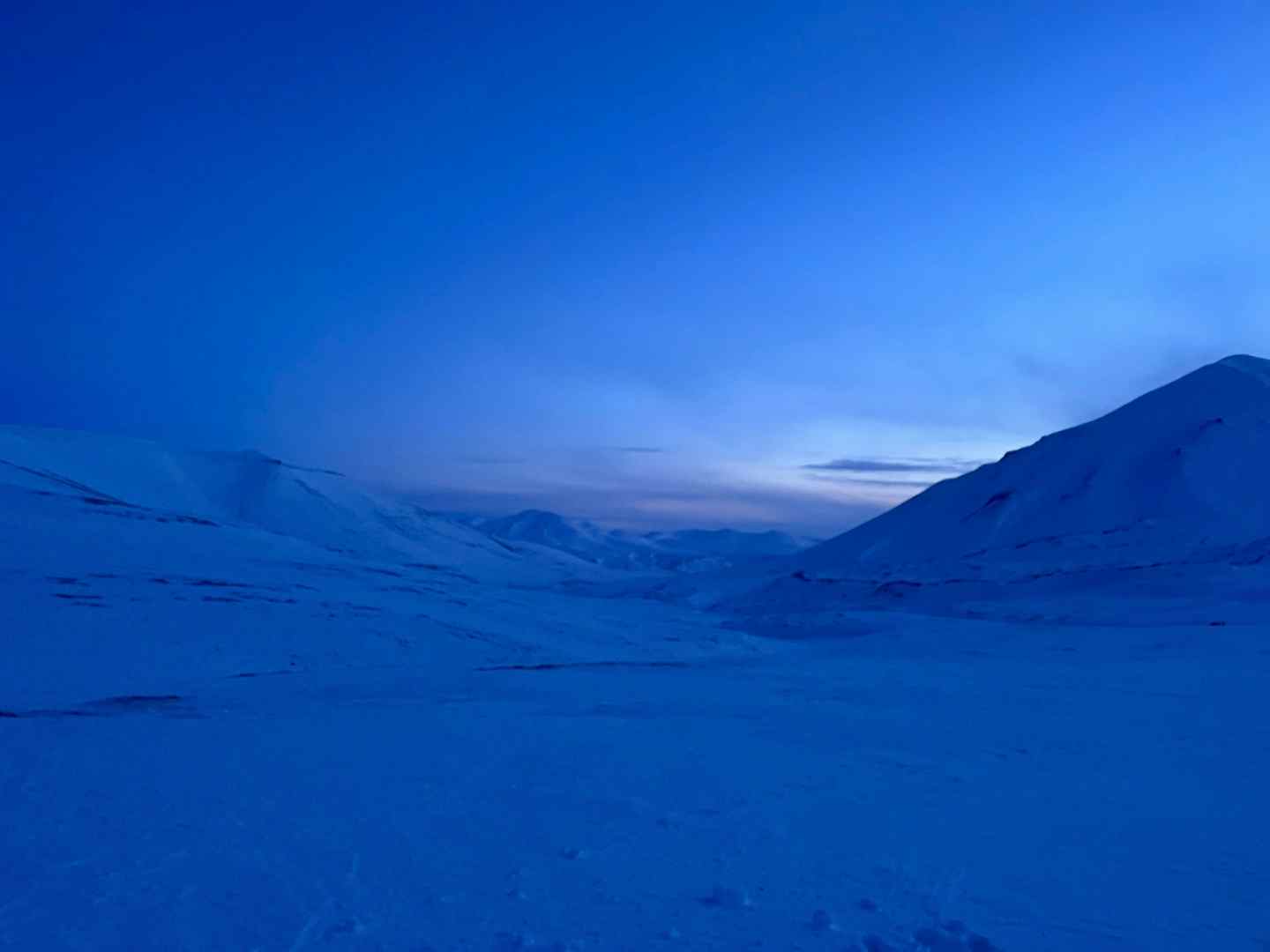
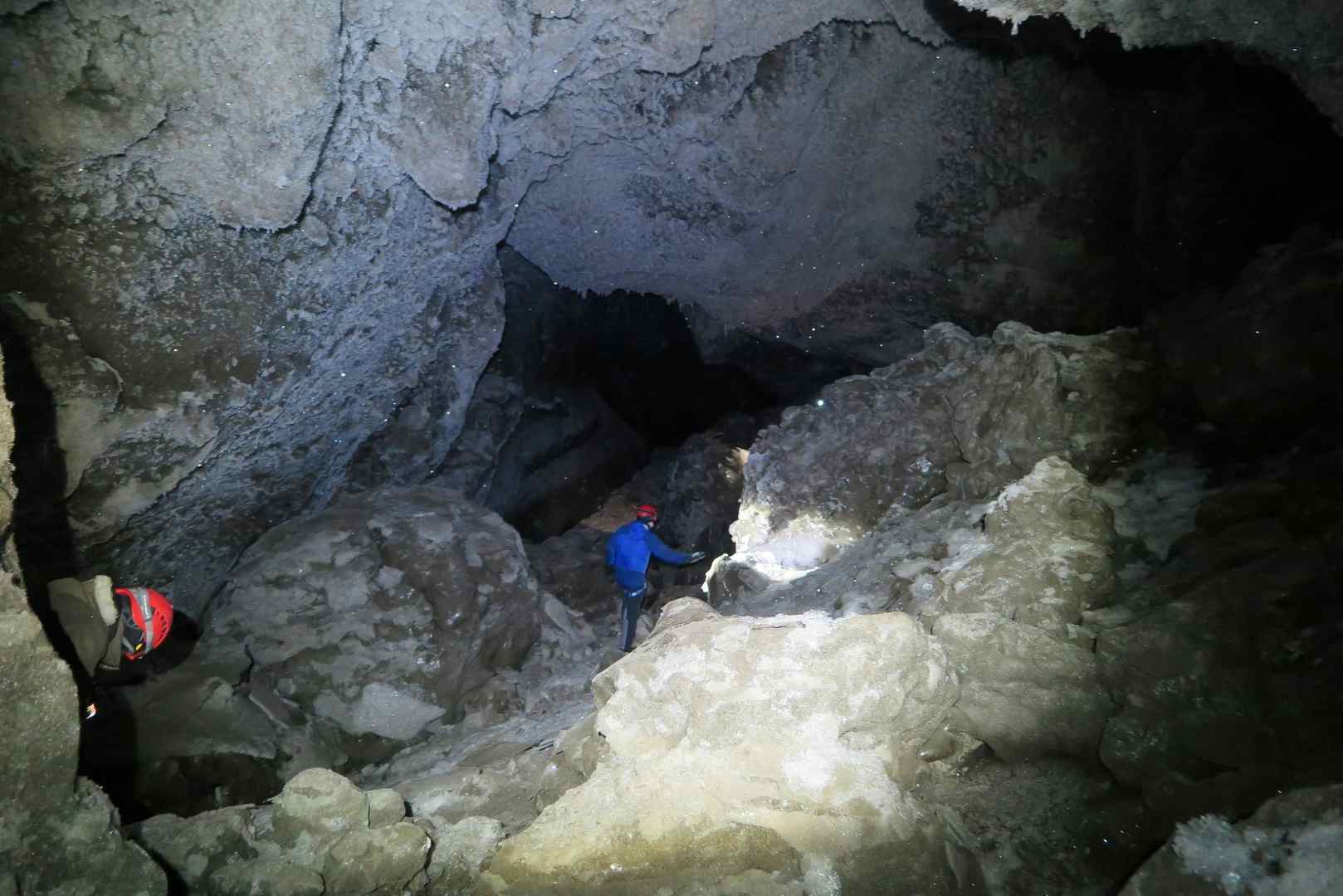
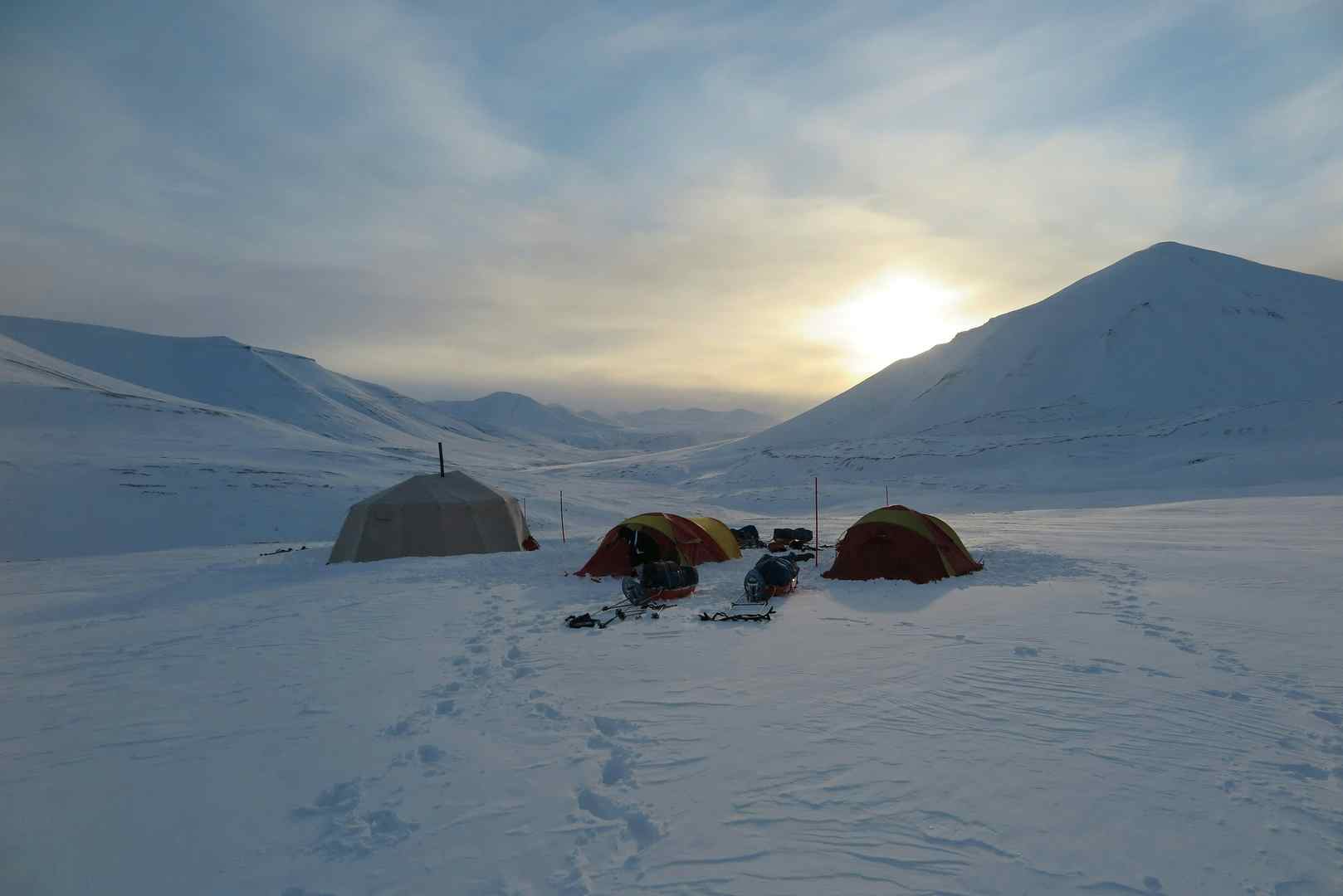
What an amazing trip….I’ve tried but honestly, most of the experience has no words to accurately describe it. Spectacular does it no justice. The tour guides could not have been better in any way, just amazing- nothing was too much trouble. The locations are other worldly. If you want adventure on earth, this is it.
Itinerary Activities
- Guided hike to an ice cave and explore the frozen underworld beneath a glacier
- 3 days of guided hiking in the Arctic wilderness
- Complete a shift on polar bear lookout
- Snowmobiling expedition to Tempelfjord
Guides
- Expert, local, English-speaking guides
Accommodation
- 4 nights at a guesthouse in Longyearbyen
- 2 nights camping at an Arctic wilderness camp
Meals
- 6 tasty breakfasts
- 5 dry-pack expedition-style lunches
- 2 homemade dinners
Equipment
- Everything you need for winter camping, glacier walking, ice cave hiking and, of course, a snowmobile
Permits
- All permits and entry fees
Our trips are hassle-free by design. We include all the activities and equipment, as well as many of the meals, so you can simply rock up with your rucksack and share the adventure with your new pals.
Travel to and from the trip
Our trips do not include flights, trains or other travel to the start point and back from the end point.
Airport transfers
This trip begins and ends at your guesthouse in Longyearbyen, so you'll need to make your own way to and from the airport – see the 'Getting There' section for more information.
Tips
Tips are not included in the trip cost; these are entirely at your discretion. If you would like to tip, the amount should be reflective of your perception of service and quality.
Personal Expenses
You know your own spending habits best, so please budget an appropriate amount for things like optional meals and drinks, shopping, optional activities, and laundry.
Travel insurance
Travel insurance is compulsory for all of our adventures and you are required to provide your policy information before departing. Your insurance should include adequate protection for overseas medical treatment, evacuation/repatriation, your baggage and equipment and the specific activities involved on your adventure. We also strongly recommend it includes cancellation and curtailment insurance, should you be unable to join your trip for specific reasons such as illness. Our recommended travel insurance provider is Campbell Irvine, as their insurance offers all of the above.
Visas
Visa requirements often change, and you are responsible for obtaining any required visas for this trip. Please check with your nearest embassy or consulate for up-to-date advice.
Which pieces of kit are included in the trip cost?
- For the ice cave: snowshoes, helmet, headlight, crampons
- For the hiking and wild camping: snowshoes, spikes, hiking poles, pulka (a sledge for your luggage), tent, sleeping mat, cooking and dining equipment, expedition Thermos flask
- For the snowmobiling: snowmobile suit, boots, mittens, helmet, goggles and balaclava
- At camp: warm bivouac/snowmobile shoes for camp use
What's available to hire?
- Arctic standard sleeping bag. These are available through your host; see Optional Extras for details.
- You may find it easier to hire a lot of the technical clothing from a kit hire specialist at home, this is often easier and far cheaper - see FAQs for details.
What do I need to bring?
Bags
- Soft overnight duffel bag or rucksack
- Daypack (35+ litre backpack)
- Waterproof liner or dry bag for kitbag/rucksack
- Small dry bags for electrical items
Clothes
- Hardshell Gore-Tex jacket with hood (windproof, ideally waterproof and breathable)
- Insulated salopettes, ideally with braces (loose-fitting to allow room for base layers, windproof, ideally waterproof, and breathable)
- Good-quality expedition-style down jacket
- Good quality thermal bottoms and top x 2-3 sets (natural fibre such as wool/merino/alpaca, suitable for extreme cold, not cotton or synthetic)
- Mid-layer such as a fleece or woollen jumper (for between your thermals and your jacket)
- Thin wool socks x 3 pairs
- Thick pure wool socks x 3 pairs (these can be purchased for approx £8 a pair at your hosts base camp in Longyearbyen - hiking socks are not enough)
- Thick insulated finger gloves (for camp use and to set up camp)
- Warm, windproof overmittens (for during the hike)
- Warm, woolen mittens (no finger gloves) for under the windproof overmitens
- Thick & warm hat x 2 (for hiking and for sleeping in)
- Long, warm buff (or balaclava) x 2 for protection against cold & wind (wool or similar)
- Snow/ski goggles
- Underwear
- Swimwear (for saunas in Longyearbyen, if open)
- Something to wear and to sleep in while in Longyearbyen
- Good-quality insulated Arctic hiking boots (worn-in, large enough to fit over both your thin and thick wool socks) - see FAQs for more info.
Sleeping
- Sleeping bag, 5-season with a comfort rating of down to minus 25/30 degrees Celsius - see our Sleeping Bag Guide. If unsure, we recommend you hire one from your host for the wilderness camping. See under Optional Extras.
- *Sleeping mats are provided
Other
- Driving licence (required for the snowmobile)
- Sunglasses
- Eyemask (near 24-hours of daylight in April)
- Cold protection lotion
- Suncream (non water-based for the cold conditions)
- Padlock for left luggage
- Universal travel plug adapter
- Power bank or solar charger
- Colourful mobile phone cover or leash attachment (you'll be amazed how difficult they are to find in the snow otherwise)
- Passports (and visas)
- Travel insurance documents
- Debit/credit card (Longyearbyen is cash-free and there is no bank)
- Earplugs
- Hand & foot heat pads (these will be well used)
- Personal first-aid kit (including blister treatment)
- Personal items (biodegradable toiletries, sanitary wear etc)
- Quick-dry towel
- Alcohol hand-gel
- 1-litre wide-mouth Nalgene water bottle x 2 (reusable and suitable for holding boiling water, as this will double up as a hot water bottle at night)
- Biodegradable wet-wipes
- Energy bars and snacks
- *A 1-litre expedition Thermos flask will be provided (if you choose to bring your own it should be suitable for temperatures down to -30 degrees Celsius)
Optional:
- Binoculars
Important Notes
-
Those who wear glasses are advised to wear contact lenses if possible as a sheer of ice may form on your glasses. Alternatively, if you are unable to wear contacts, we recommend bringing snow goggles that fit over your glasses.
-
We have specified natural fibre clothing such as sheep wool/alpaca/merino as this is best in extreme cold. Synthetic or cotton materials do not provide the required insulation or wicking properties.
Optional Private Room Upgrade (4 nights): prices start from
Payable Before Departure
Optional Private Room Upgrade (4 nights): prices start from
… Per person
Sleeping bag hire
Payable Before Departure
Sleeping bag hire
…
Single room: prices start from
Payable Before Departure
Single room: prices start from
… Per night
Twin/Double room: prices start from
Payable Before Departure
Twin/Double room: prices start from
… Per night
We partner with the World Land Trust to ensure this trip achieves Net-Zero emissions. We also support their Buy an Acre programme, helping local communities to buy and protect natural habitats in perpetuity.
What's the number?
It works out on average at 112kg of CO2 emissions per person, including all local transport, accommodation, food, activities, guides, staff and office operations.
The only thing it doesn’t include right now is flights and travel to the destination. We do make an overall estimate across all our customers separately, but as we don’t book flights, have customers from all corners of the world, and no way of reliably knowing their travel plans, we simply can’t include an individual number in the figure on display here. We’ve got a goal to fix that, so that when you book, there is a way to measure and mitigate the carbon emitted by your flight too.
But what does the number mean?
Yep, hard to picture eh? To give you an idea:
- Driving 1000 miles/1609km would be approximately 281kg of CO2 in an average car (or 140.5kg per person, if there were two of you in it).
- A return economy class flight between London and New York would be approximately 1619kg (1.66 tonnes) per person.
- 10 trees in a temperate forest are estimated to remove approximately 250kg of CO2 from the air in a period of 5-10 years.
What are we doing about it?
Our trips are relatively low-carbon by design, and we're working with all our hosts to develop long term carbon reduction plans. We partner with the World Land Trust to ensure this trip achieves Net-Zero emissions. We also support their Buy an Acre programme, helping local communities to buy and protect natural habitats in perpetuity, ensuring the protection of the reserve and its wildlife.
Want to know more?
Amazingly, no international travel company has ever publicly published their carbon measurements before, as far as we know. We believe that must change, quickly. So we’re openly sharing the method we used in the hope that other companies will be able to more easily follow suit and build on what we've done so far. You'll find it all here.
Camping in the Arctic is a completely safe and hugely enjoyable experience with the correct preparation. Your hosts in Svalbard are expert wilderness guides, the majority of whom are originally from the island itself, and you'll be perfectly safe in their hands.
You will need to pack correctly for this trip. There are various specialist pieces of kit included in the trip cost, as well as other items available to hire when you get to Svalbard - see the Kit List on this page for a full breakdown. The other items on the kit list are important to bring along too, so perhaps do a dummy-run packing your bag a couple of weeks before the trip. Then you can buy anything that you might be missing. There will be outdoor adventure shops in Longyearbyen to plug any gaps, but items will be considerably more expensive to buy in Svalbard. Your host will run a check of everyone's preparedness for the camping expedition before heading out into the wilderness on Day 3.
The camping equipment provided is specifically designed for extremely cold conditions, to ensure everyone has a safe and comfortable few nights camping in the Arctic. The preparation and equipment will let you relax and enjoy this amazing experience.
Your guides will be carrying GPS, emergency beacons, satellite phones, first aid equipment, flare guns and rifles (rifles must be carried by law outside Longyearbyen). For concerns on polar bear safety and any ethical considerations please read the FAQs: 'What does Polar Bear Lookout entail?' and 'What about polar bears being killed by tour guides?'
Sustainable Tourism provides an economic incentive to protect, rather than exploit, vital wildlife areas. Over the years, seven national parks and 21 nature reserves have been created to protect the Svalbard archipelago.
Thankfully, the local population of polar bears and various marine species have increased and Svalbard tour operators - including your host - have worked alongside environmental groups such as the WWF and Friends of the Earth to block any unsustainable development such as new roads, mining and fossil fuel exploration. Every visitor to Svalbard also pays £15 which goes directly to an environmental protection fund to manage the protected areas.
Of course, we are aware that the flight to Svalbard is damaging to the environment and the Arctic is visibly feeling the effects of climate change. As there are currently no viable, sustainable travel alternatives available, Much Better Adventures mitigates 4 times the carbon emitted by your flight to Longyearbyen through our partnership with Cool Earth. The adventure itself - mostly self-powered activities and wilderness camping - is about as low carbon as it’s possible to get, especially when compared with the myriad cruise ships that visit Svalbard.
The only non-self-powered activity on this trip is a day onboard a snowmobile. Snowmobiling is a part of modern life in the Arctic, and for many months of the year it is the only way for locals to travel between settlements. Your host uses the most modern snowmobiles currently available in Svalbard to ensure as high an energy efficiency and noise level reduction as possible. Your journey follows a frequently used route along a valley floor leading to Tempelfjord. This limits the disturbance to wildlife by avoiding going 'off-piste'. Any local or visitor to Svalbard wanting to venture deeper into the national parks has to apply for permission to do so. Travel by snowmobile by tourists is a highly-monitored activity in order to avoid negative impacts on Svalbard's wildlife.
For more on this topic you can read our article on tourism and conservation in Svalbard, where our very own Stuart Kenny interviews Arne Kristoferson, your host for this trip and resident of Svalbard for nearly three decades.
Also, here’s how our very own co-founder Sam answered the question ‘Is it responsible?' after we launched our winter Svalbard hiking and snowmobiling tour.
Absolutely! We would advise getting in touch with a Kit Hire specialist. In the UK, you could try Expedition Kit Hire or Outdoor Hire who are usually very helpful. They are likely to be able to help you with the key items i.e. jackets, salopettes and also the boots needed - just let them know which trip you're doing and the conditions listed here so they can provide the right items.
Important: 'insulated Arctic hiking boots' are not regular hiking boots, even those hiking boots designed for winter will not suffice – you won't be able to fit double wool socks inside and they won't let your feet breathe enough. Your host recommends winter Sorel boots that have an inner felt liner - these can be found on various outdoor sites or can be hired by an expedition kit hire specialist as per the above FAQ. They are perfectly adequate for hiking in and waterproof enough for the conditions you will encounter. They are also a joy to wear as they are easy to get on and off and to layer your warm socks inside.
Each member of the group will take it in turns to look out for polar bears while the rest of the group sleeps. The experience of being on the lookout is one of the most memorable parts of the trip and has been described as "like being a crew member on a David Attenborough documentary".
You'll be given a full briefing and safety instructions and a shift roster will be developed between you all. Only one person is generally on lookout at a time. Lookout shifts are generally around two hours. However, if the group size is larger than four, you will have at least one night without needing to take a shift.
While on this trip you will be in the hands of expert wilderness guides. Your host has been operating wildlife expeditions in the area for over 25 years and has never had a close call with a polar bear. This is all down to their knowledge and expertise. There are polar bears in the area and they have come close to camp before, but the guides know exactly what to do in all cases.
Yes. A driving licence is required to drive a snowmobile. If you do not have a licence then it is possible to skip the activity and have free time in Longyearbyen, or you can request to ride as a passenger with another person driving the snowmobile (please note that this is not always possible as it depends on the group size - please ask you host in advance).
The water in Longyearbyen is drinkable. At the wilderness camp you'll have a supply of water brought in, as well as the option to melt snow for drinking water. This Arctic ice water is perfectly safe to drink and super refreshing!
You can leave any excess luggage in Longyearbyen before heading to the wilderness camp. There is storage at your hotel and also at your host's secure warehouse.
Svalbard is a cash-free society – cash is not accepted and there is no bank. Only card payments are accepted, so you'll need to bring your credit and/or debit cards with you.
This trip includes locations or elevations where conditions can be extremely cold. Daytime temperatures may drop below freezing (0°C/32°F), and nights are often significantly colder. These conditions can affect physical performance and increase the risk of exposure-related issues, such as frostbite or hypothermia.
Your guide is trained to manage these risks, adapting activity intensity and monitoring group wellbeing. However, it's important to take personal responsibility – bringing the right cold-weather gear (see Kit List), staying hydrated and well-nourished, and recognising early signs of cold stress.
We recommend assessing your personal comfort and resilience in cold environments, and consulting a medical professional if you have health conditions that may be affected. Arriving early can also help you acclimatise to the colder conditions, especially if you're coming from a much warmer climate.
Sure can! Over 70% of our travellers travel solo, it’s a great way to meet like-minded people.
Our team of Adventure Hunters co-create exclusive adventures which are run by highly vetted, specialist hosts. The trip is run by our trusted host partner in the destination. We only work with independent, local, in-destination experts who know the very best places to explore and how to stay safe. Read more information about the local teams we partner with. You’ll be introduced to the host straight after making a booking via the Much Better Adventures platform.
Much Better Adventures refer to the UK Government’s official travel advice when designing trips and monitoring trip operations. We recommend that all customers are familiar with the practical information provided on the Government’s FCDO website, where current travel advice can be found by searching for the applicable destination(s).
For customers joining this trip from other international destinations – please also read the official travel advice applicable to your country of residence/origin, as this may differ.
We recommend checking out the country-specific information and also talking to a travel nurse.
We automatically convert prices from the local currency that a host receives to your chosen currency. We update our exchange rates on a daily basis so this does mean that prices displayed on the site are subject to currency fluctuations, which is why you may see them change over time.
If you wish to change the currency you pay in, head to the bottom of the page.
All of our group adventures are specially designed for adults to enjoy as we want these adventures to bring together outdoorsy people who are truly like-minded. You must be over 18 to join one of our trips.
You're always in good company on one of our adventures.
Our trips are typically made up of a mixture of solo travellers and small groups of 2 or 3 friends, with most in their 30s-50s.
Our sociable adventures are solo-friendly by design and naturally attract outdoorsy people with a shared mindset; a love for adventure, a desire to push themselves and meet awesome, like-minded people along the way.
It’s this camaraderie that has so often turned a great adventure into a life-changing one.
Don't just take our word for it:
- 95% of people rate the group dynamics on our trips 5/5
- 90% of people recommend joining a trip to make new friends
- 75% of people have met people on our trips that they would now consider friends
See here for more info about the Much Better Adventures tribe.
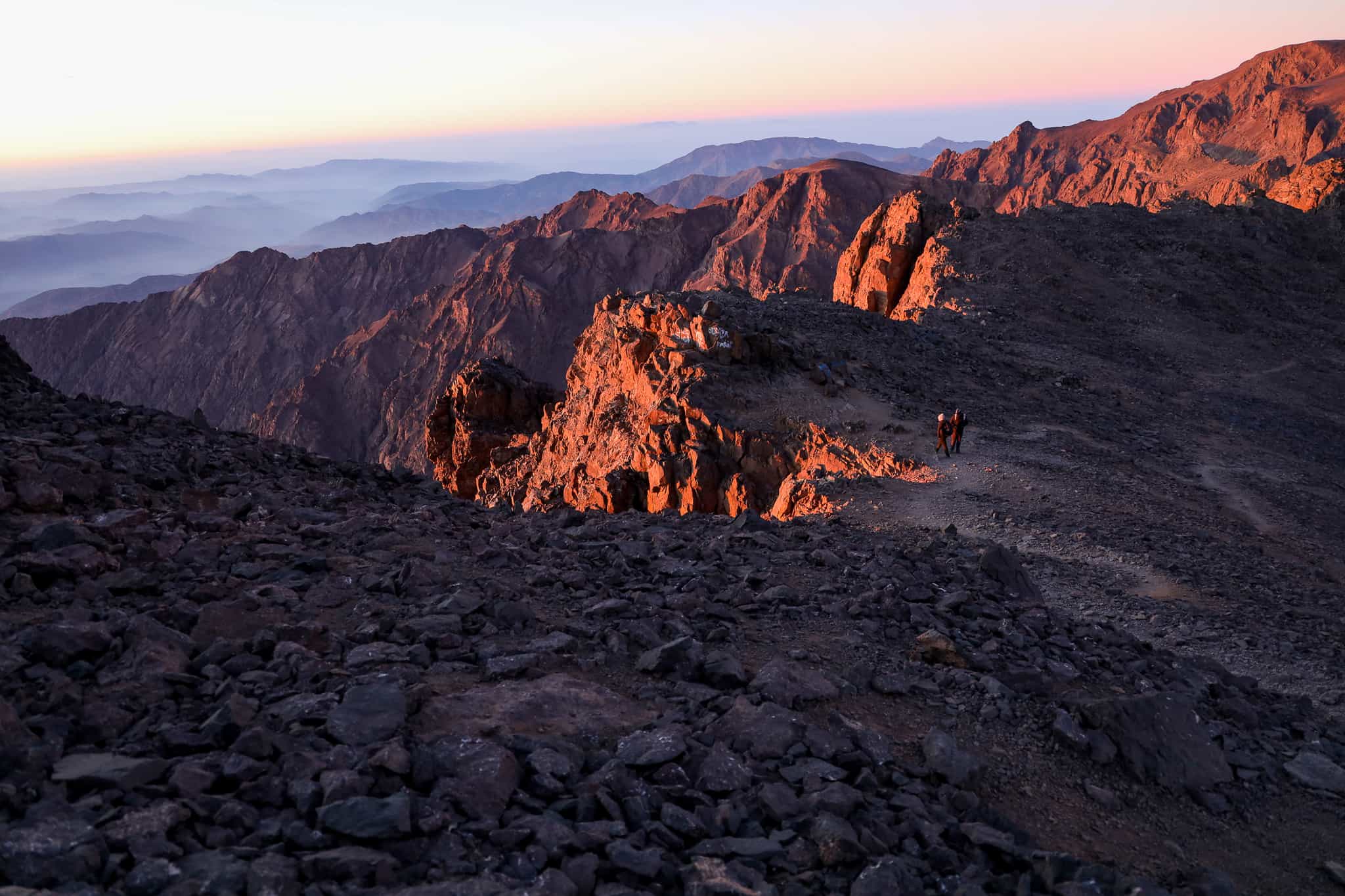
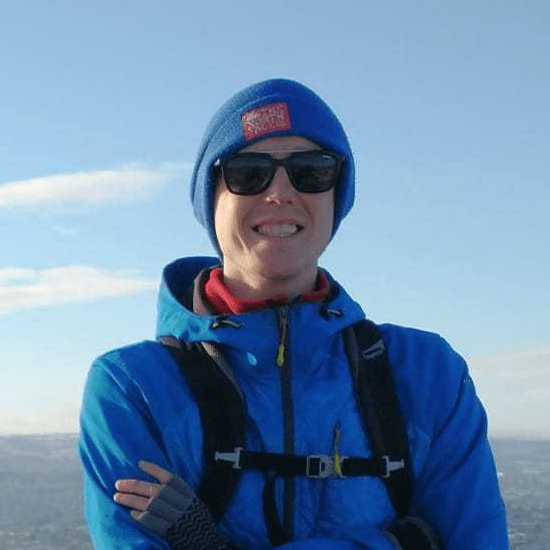
Need help finding flights?
From logistics and how to get there, to fitness, group dynamic and trip difficulty, Rory and his team of friendly experts are on hand to help.
We've got your back
Guaranteed to run
All Much Better Adventures trips are now guaranteed to run. Once you’ve booked your spot you can immediately make your travel arrangements, no uncertainty, no hanging about (excludes 'request to book' departures). Full details
Flexible payments
Secure your spot with the minimum deposit and pay off the remaining balance in as many instalments as you like, with no interest or fees. Full details
Happiness Guarantee
We’re so confident you’ll have an amazing time we’ll put our money on it. Full details
Full financial protection
To give you complete peace of mind Much Better Adventures is backed by ABTOT, ABTA and ATOL memberships. Full details
Tried & Trusted
Much Better Adventures is rated ‘Excellent’ on Trustpilot with over 1000 verified trip reviews averaging 4.8/5.
Connect before you go
You'll be invited to join a WhatsApp group to get to know each other before your big adventure together. Full details
DEPARTURE DATES
Monday 23rd March 2026
to Sunday 29th March 2026
Monday 30th March 2026
to Sunday 5th April 2026





